#646 - Social Media Accuracy

Do you turn to social media for mental health advice? New research suggests it may not be the best move if you are seeking reliable, accurate information. Using the Brief COPE Inventory, researchers examined from what sources 250 young adults sought information about anxiety, and whether if they had used social media for mental health information, how much accurate knowledge they had about anxiety.
Results? Researchers found that young adults who use social media for mental health advice knew less about anxiety than those using friends/family, books, internet websites (Wikipedia, medical websites, Google), podcasts, television/movies, or therapy. Only 18% get most of their information from mental health professionals, while 82% relied upon non-professionals. However, the study also showed that using the internet in general – not just social media – can lead to better anxiety knowledge, suggesting that online information can be reliable.
All of this points to one take-away: be careful where you get your mental health advice. Not all sources are reliable. It’s best to turn to a vetted resource like Wikipedia or trusted experts online, or in person, like clinical psychologists, who are trained in mental health.
Written by Charlotte Eley (Psychology B.A. Student)
#645 - Job Power & Work

How does having power in a job influence perceptions of work pressures and the sense of influence and control?
Researchers studied two competing theories: the situated focus theory of power – how people see their job demands as a big part of having power, allowing achievement and control; and the challenge-hindrance theory –where work demands cause stress and worry, yet motivate. Both help and challenge workers.
Over 3 workweeks, they collected data on 83 professional employees. Participants completed electronic surveys measuring demographics and neuroticism – a personality trait associated with negative emotions such as anger, anxiousness, and irritability. Participants also completed surveys 3 times per day, measuring experienced power, meaningfulness, job demands, goal progress, physical discomfort, and anxiety.
Results? Having power can lead to job demands that have both good effects – leading to progress and a sense of purpose, and bad effects – causing physical discomfort and anxiety. People who feel power and exhibit higher neuroticism can strengthen their power and goal progress. Thus see their jobs as demanding but rewarding. How employees view job demands greatly affects their feelings and future actions.
Employers! Help employees in power positions better manage anxiety and encourage team collaboration to enhance team effectiveness.
Written by Kristin M. Harris, Ph.D.
#644 - Flow and Well-Being

Do you know that losing yourself in an activity can influence your happiness? FLOW means a mental state of full concentration and enjoyment in an activity.
Chinese, English, and Italian researchers collaborated to study the impact on college students’ happiness and resilience when they experienced FLOW. At three time points across one semester, they gave 470 university students questionnaires measuring FLOW, psychological resilience, and well-being.
Results? Students who regularly experienced FLOW states had greater psychological resilience, meaning they were better at coping with stress and bouncing back from adversity. Thus, the more you engage in activities that fully capture your attention, whether it is following your curiosity, sports, music, walking in nature, or even schoolwork, the more mental strength and happiness you develop.
Get into FLOW in your life! Do things that are challenging enough to engage you, but not overwhelming barriers. Turn off the distractions, set clear goals, and immerse yourself in something you enjoy doing. By engaging in FLOW, you're not only enjoying yourself but you're also strengthening your resilience to handle life’s downsides. Psychology science shows that FLOW isn't just about productivity but rather a well-being powerhouse. Try getting into the FLOW! Feel the benefits.
Written by Isabella Scaglione, Forensic Psychology Undergrad
#553 - Relatedness

Why are we kinder and more helpful to some people than to others? Researchers aimed to understand whether emphasizing a sense of relatedness could encourage people to take more helpful, considerate actions.
They studied almost 300 university students in a series of experiments to explore how highlighting relationships with others influenced their willingness to assist others.
Results? Experiment 1 found that when participants were alerted to their connection with others they had higher interest in volunteering and intentions to volunteer. Experiment 2 showed that writing about relatedness experiences promoted feelings of connectedness to others, leading to greater prosocial intentions. Experiment 3 revealed that relatedness task participants donated significantly more money to charity than neutral task participants.
We, humans, have an innate need to belong. By highlighting the common ground we share with others, we can encourage a sense of unity and empathy, leading to more acts of kindness and support.
Let’s look beyond our differences! We have more in common than we think! The next time you find yourself in a situation where you can lend a helping hand, remember that nurturing our connections can make a positive impact on the world around us as well as ourselves!
Written by Jarret Bain B.S.
#552 - Sleep Technology

Does technology that helps you sleep deeper lead to better work performance? Organizational psychologists looked at how wearing a special acoustical stimulation device can improve sleep quality, rather than duration, and positive work outcomes.
Researchers examined 80 full-time employees over a four-week period. The employees received acoustic stimulation headband devices that detected the person’s own deep, slow sleep brain noises and played them back in a loop while they slept, enhancing their deep sleep. Half the time, the same devices remained silent. Participants daily filled out after-sleep and after-work surveys.
Results? Using this device improved their sleep quality. When the devices gave deep sleep acoustical feedback, people (mean age 31) not only slept better but also engaged more and performed better at work! However, the headband worked better for younger employees. As we age, our brains have fewer deep sleep waves.
This research shows that technology has the potential to improve sleep quality which improves performance.
If you are having trouble sleeping or feel tired at work, seek professional help! This device worked better for some than others but showed that good sleep is important! Don’t let poor quality sleep hinder your performance.
Written by Jarret Bain B.S.
#551 - Fake News

Does peer pressure impact a person’s sharing fake news? Fake news or false or misleading information spreads like gossip. People present fake news as if it were true.
To uncover the impact of sharing fake news online, psychologists tracked for six months the social interactions of over 100,000 Twitter users. The researchers found that Twitter users who shared news from US fake news sources distanced themselves from other users that did not share fake news. In a second study, users who shared fake news had more positive interactions with users that shared similar content. In Studies three and four—participants indicated a reduced desire to socially interact with social connections who failed to share the same falsehoods as they did. Study five revealed that participants were aware of both the social costs and the rewards of sharing fake news.
Friends! How can we avoid spreading misinformation? Question what others are saying. Sseek accurate evidence from other varied sources. Don’t fall for the trap of wanting to fit in. Resist pressure to conform. Take courage. , Sstand up for what is true, though maybe unpopular.
Written by Jarret Bain B.S.
#550 - Loot Boxes & Gamblers

Will purchasing Loot Boxes increase future gambling behavior? A Loot Box is a mystery bundle of virtual in-game prizes of unknown rarity to aid in a video game. You can purchase these with real money but are blind to their outcome.
Prior research shows that earlier onset of adult gambling leads to more problematic gambling. Canadian researchers examined how young adults' involvement with Loot Boxes, might influence their likelihood of future gambling. Their study followed 200 non-gambling young adults (ages 18-26) who played video games over a period of 6 months.
Results? Those who purchased Loot Boxes were much more likely to engage in gambling behaviors over time. The excitement of possibly winning a prize is a gamble—the randomness of the prizes is the hook that can lead to future gambling. Loot boxes are exposing young people at an early age to gambling just to play video games which in themselves are not a gamble.
Fellow gamers and Parents! Be careful and understand the potential risks in habits formed by in-game gambling. Pay attention. Loot Boxes may be luring young people into gambling.
Written by Jarret Bain B.S.
#549 - Suicide Screening

Teen suicide rates have sharply increased in the last 15 years, especially among Black and Hispanic youth. Thus, it is important to identify those teens that need help and provide suicide interventions. Psychologists, psychiatrists, and pediatric medical personnel collaborated to compare two science-based screening tools to predict suicidal children and adolescents.
They compared previously designed questionnaires: Ask Suicide Screening Questions and the Computerized Adaptive Screen for Suicidal Youth to determine which instruments and items best-predicted suicidality among adolescents. For a year, they recruited and assessed nearly 4000 adolescents coming to the Pediatric Emergency Room (ER) with psychiatric symptoms, having them fill out both questionnaires. After 3 months they assessed 2700 teens who had suicide-related visits to the ER in those past 3 months.
Results? Both instruments were equally useful in predicting suicidality. Yet for those in ER with psychiatric symptoms, the Computerized Adaptive Screening showed greater predictive validity.
The question with the highest relationship to being suicidal, was “In the past few weeks, have you wished you were dead?” If you suspect someone is thinking of suicide, ask empathetically. Teens will more likely talk with you and listen. Encourage seeking help together.
Written by Juanita N Baker, Ph.D.
#548 - Listen! Birds!

Did you know that being able to see and hear birds can have positive effects on your mental health?
London psychologists recruited nearly 1300 volunteer participants from Europe, America, Asia, and Australia before Covid. During Covid they asked them to report at periodic prompts on their Urban Mind smartphone application. They answered: if indoors or outdoors; saw or heard birds. They identified habitat; then rated their happiness and stress.
Results? Encountering birds had several mental health benefits over being outdoors in green areas with no birds. People seeing or hearing birds reported feeling happier, more relaxed, and less stressed. They felt a stronger connection to nature and had an overall sense of well-being. This was true even for those who had depression.
Thus, spending time in nature and appreciating the beauty of birds can bring joy and improve our mental well-being. Let’s take time to observe nature and the birds. Cherish these moments.
Leaders! Make forests, parks, gardens, and plant trees for everyone’s well-being! People everywhere! Plant native trees and plants in your yards to bring birds home!
Take time to notice the birds!
Written by Jarret Bain B.S.
#547 - Kind Acts

Can even small acts of kindness have a big impact?
Psychologists explored how people perceive the effects of kind acts on others. Do people underestimate their kind acts’ positive impact on others? Perhaps that lessens future giving.
Researchers conducted a series of experiments with over 500 participants. They asked them to perform various acts of kindness (give a cup of hot chocolate or give away a gift card) to strangers and peers. The recipients reported their degree of appreciation and givers estimated the recipient's appreciation of their kind act.
Results? Participants consistently underestimated the positive impact of their kind acts. Findings suggest that people may not fully realize the power of their own kindness. Recipients reported more positive responses than givers expected.
Even small gestures, such as holding the door for someone, offering help, expressing appreciation, or giving a compliment with warmth, can make a significant difference in someone's day and sense of feeling connected.
Engage in more Random Acts of Kindness. You and the recipient will likely be more impacted than you expect. Humanity dearly needs more kindness. Daily, lift someone's spirits. Reach out and connect.
Written by Jarret Bain B.S.
#586 - End Spanking

What do 20 years of high quality research reveal about spanking children? One whole issue of the Child Abuse & Neglect Journal in 2017 is devoted solely to the research and conclusions on child corporal punishment by parents or anyone. Psychological science shows that spanking (corporal punishment) misleads the parent, as children immediately comply. Yet spanked children have greater likelihood of mental health issues, substance use, suicidal thoughts and attempts, and behavioral, social, cognitive, and even physical health problems. Not one study revealed any benefits from spanking. Instead, parents must teach children positive behaviors and helpful ways to handle their emotions—anger, fears, disappointments, and triumphs.
Spanking a child, often done in anger and frustration, models aggression for the child as the way to solve problems. Research shows spanking increases the likelihood of anger, aggression, and violence in societies and worse parent-child relationships.
The United Nations’ 2016 goal was to eliminate spanking and all physical punishment of children and promote well-being for all. In 2024, 65 countries prohibit spanking and hitting of children by everyone—parents, schools, jails, or detention centers. Let’s stop all corporal punishment and make a nation-wide effort to provide all parents loving techniques to raise humane children.
Written by Juanita N. Baker, Ph.D.
#642 - Parent-Adolescent Bond

When does being close to a parent make the biggest difference? Psychologists wanted to know, “Does bonding between parents and teens protect mental health?” “Does this change as teens grow? And do the effects differ based on the gender of the parent or the teen?
Penn State researchers followed 380 primarily White American adolescents, ages 12 to 20, who completed questionaries on low self-esteem, depression, and worries about weight. Adolescents also rated how close they felt to their mothers and fathers.
Results? The impact of parent-youth closeness changes over time depending upon both the teen’s and the parent’s gender. For example, a close bond with fathers helps both boys and girls feel better about themselves and worry less about weight and depression, especially during mid to late adolescence. Mother–child closeness is more linked to helping boys early on with body concerns and girls later with self-esteem.
Parents! Build close relationships with each teen uniquely. Find activities you both enjoy.
Show how to be a good friend, caring, and helpful. Parents model handling emotions and positive acts to initiate and maintain close relationships at every age, including during the teen years. Both parents play key roles!
Written by Kristin M. Harris, Ph.D.
#587 - Disposable Anger

Managing Anger effectively is challenging, especially for those who have experienced maltreatment and lack coping skills. Traditional methods like suppressing anger, self-distancing, or cognitive reappraisal have limitations. Psychologists investigated whether physically acting reduced anger.
Researchers recruited 60 participants who wrote brief opinions about social problems and assessed their anger periodically. A research confederate gave each a handwritten insult about their opinions. Participants then wrote about their anger, the cause, and their thoughts. Upon instruction, half the group threw the paper in the trash or shredded it, the other group kept it in a file on their desk.
Results? In both groups, after provocation, anger increased but then decreased after writing about it with no significant group differences. Once the participants did something with their writings about anger (i.e. threw it away or kept it in a file on their desk) the trash throwers’ anger returned to baseline levels compared to those keeping the paper.
Disposing of the paper may hold symbolic meaning beyond removing it physically. So, for old grudges or the next time you get angry, try writing down what happened, what made you angry, then tear it up, shred it, or compost it! Anger be gone!
Written by Jarret Bain B.S.
#643 - AI Research Ideas

Can AI-artificial intelligence come up with newer or better research ideas than a human? A new study in social psychology explored this question by testing whether AI- could help researchers generate creative and useful hypotheses. With research growing faster than any one person can keep up with, AI might be the tool that helps connect the dots.
In one recent study, researchers used a two-step process to see if AI could create sound research ideas. First, they trained a language model (GPT-3) on over 100,000 psychology article summaries to teach it how social psychology research is written. Then, they had the AI generate new research questions and asked experts to rate them, without their knowing if they came from a human or a computer.
Results? In both cases, expert psychologists rated the AI-generated research ideas as just as good, or even better, than those written by humans. These AI-created hypotheses scored high on clarity, originality, and relevance, and could help researchers save time and uncover new paths to insightful research. The big idea? AI might not just support research – it could help uncover the next big direction to reveal how people think, feel, and relate to one another.
Written by Kristin M. Harris, Ph.D.
#641 - CBT for Psychosis

What if a specific type of therapy (Cognitive Behavioral Therapy for Psychosis, CBTp) could help stop psychosis before it starts? Psychosis is a serious mental health condition where a person often sees or hears things that aren't there or believes things that aren’t true. CBTp helps people challenge and change thoughts and related behaviors to cope with thinking distortions, thus helping people manage serious mental health challenges.
Psychological, Psychiatric, and Behavioral Scientists from 13 research and medical centers reviewed 22 research studies with over 3,700 participants with psychosis who engaged in CBTp. They measured the patient’s quality of life and symptoms. Results? Researchers found that CBTp improved mood, sleep, and self-esteem, and even prevented the first episode of psychosis in people at high risk. Well-being improved in people with persecutory delusions, and helped even when medication was slow or did not work.
Like any therapy, CBTp has limits. Few specialists and centers may be available, but its positive effects on everyday life are encouraging. Families, friends, partners, or persons dealing with psychosis, seek and encourage offerings of CBTp in addition to psychiatric medicines. Together they can have a more rapid path to long-term stability and better quality of life.
Written by Isabella Scaglione, Forensic Psychology Undergrad
#640 - Screen Time & Relationships

Has your partner ever checked their phone while you were talking, leaving you feeling instantly ignored and disconnected? It might seem minor, but those small moments could matter more than you think. Psychology researchers call this kind of interruption “technoference” or “phubbing” – when technology gets in the way of real-time connection. In a recent study, psychologists followed 173 couples over two weeks, with each partner reporting daily on how often technology disrupted their time together.
Results? The psychologists found that when people noticed more tech interference – like scrolling during dinner or texting mid-conversation – they felt worse about their relationship. They also experienced more conflict, rated face-to-face moments as less positive, and had a more negative mood overall. These effects showed up even when psychologists accounted for general relationship satisfaction, mental health, and attachment style. And it didn’t matter whether someone was male or female, the impact was the same!
Remember! Even small phone distractions can quietly hurt how close your partner feels to you. Make a simple habit of putting your phone away during conversations. Giving your full attention shows respect. This could strengthen your relationship and boost your mood one moment at a time!
Written by Kristin M. Harris, Ph.D.
#639 - Humor, Lies, Politeness

Have you ever told a lie to be nice, or used sarcasm to get your point across? You might think it sounds polite, but would others agree? American and British researchers investigated.
They studied how people judge the politeness of everyday language, like sarcasm, teasing, and kind-meaning lies. Participants included 280 adults who watched short videos showing five types of speech: literal praise, blunt honesty, sarcasm, teasing, and positive meaningful lies. After each video, the participants rated how polite the speaker was and filled out surveys about their own communication style.
Results? Findings show how we judge politeness depends on who we are and where we're from. Older adults think teasing is less polite than younger folks do. Men are more likely than women to find blunt or sarcastic comments polite. When it comes to prosocial lies – those gentle fibs – the British find them more polite than Americans do. Even though there are common trends, personal preferences and cultural backgrounds shape how people view situations.
So next time you bend the truth to be nice or joke to make a point, think about who’s listening. The same words can sound polite to one person and off-putting to another.
Written by Kristin M. Harris, Ph.D.
#638 - Sleep & Job Insecurity

Is your job keeping you up at night? Worrying about losing your job can do more than raise your stress levels, it can also rob you of sleep! In two studies, researchers surveyed over 1,000 full-time U.S. adult employees from the Midlife Development in the United States National Survey. Standardized questionnaires measured job insecurity, sleep quality, and negative work spillover, or work-related stress at home.
Results? People who felt unsure about their jobs and brought work stress home tended to have sleep disturbances. These two issues were closely linked. However, findings showed there were no gender differences in how job insecurity and work stress affected sleep.
Poor sleep can hurt job performance, health, and can even raise healthcare costs for employers. Employers! Give positive feedback and encouragement to your employees. Arrange employee training to use stress reduction techniques and exercise to enhance their work and so everyone can get a better full night sleep.
Employees, get regular exercise and reach out to create support at work. Thank and praise your colleagues for even small things they do well and keep stress from following you home.
Written by Kristin M. Harris, Ph.D.
#637 - Veterans’ Barriers

Many U.S. veterans face major challenges. What prevents veterans from getting the mental health care they need?
Psychologists studied 4,000 US veterans, from the National Health and Resilience in Veterans Study. They analyzed barriers like high cost, stigma, and negative beliefs about treatment.
Results? 15% of veterans had a mental health diagnosis but never received treatment. 39% reported barriers to getting care (e.g., too expensive, difficulty obtaining time off from work or school, and being too embarrassed to seek treatment), 29% perceived stigma, and 22% had negative beliefs about mental health care. Factors associated with these barriers to care included lacking life purpose, grit, and social support.
Thus, let’s educate everyone that at least half of us in our lifetimes have mental health issues that can be aided by mental health services. Those who do access individual, group, and/or online mental health care find value. Thus, veterans! Reach out for mental health services, just as you might for medical services. Therapists are there to help.
Everyone! Let’s connect more with veterans. Together we can help break down the invisible walls that keep veterans from getting help.
Written by Kristin M. Harris, Ph.D.
#588 - Withdrawal and Placebos

People trying to overcome drug dependence often experience distressing withdrawal symptoms. Thus, psychologists investigated the role of placebo effects in caffeine withdrawal. A placebo is a pill or procedure prescribed for psychological effect but has no physiological effect. When people believe they have ingested a drug, even if placebo, they “feel” its impact.
Researchers recruited 60 heavy coffee drinkers asking them to abstain from caffeine for 24 hours. Dividing into three groups, they assessed caffeine withdrawal symptoms, then gave participants a cup of either:
1. Decaf coffee accurately labeled
2. Decaf coffee mislabeled as caffeinated (which is deceptive):
3. Water labeled as water (control):
Then again assessed their caffeine withdrawal symptoms and rated the impact.
Results?
Those who drank the accurately labeled (decaf coffee) reported a 9.5 point reduction in withdrawal symptoms, while those who drank the deceptively labeled caffeine coffee (the placebo), reported twice that reduction in withdrawal symptoms! Both groups reported much greater symptom reduction than those who drank water. Surprisingly, drinking the accurately labeled decaf coffee showed a reduction in withdrawal symptoms too, even though they did not expect any. Thus, deception may not be necessary to produce reduction in withdrawal symptoms.
Understanding these issues in addiction treatment could improve outcomes.
Written by Jarret Bain B.S.
#452 - Exercise and Memory
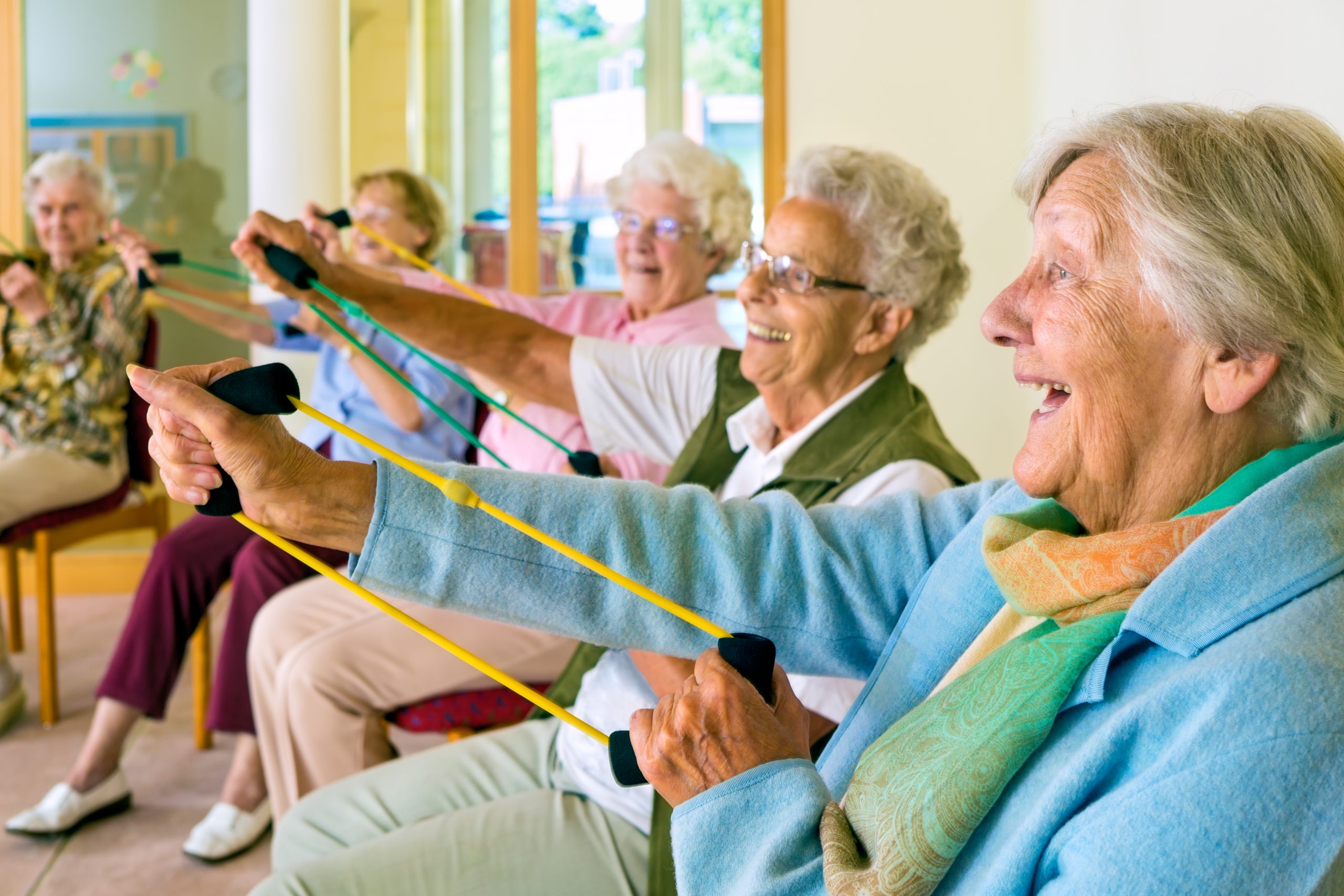
The human brain changes over time. The hippocampus, or the area of the brain responsible for memory, shrinks about 1-2% per year as we age. Is it possible to reverse this change?
Psychology and health researchers studied whether exercise could impact this change in the aging brain. They recruited 60 older adults to engage in a walking exercise and 60 to engage in stretching. Before the study, they all had blood draws, computerized memory tests, and brain scans. After 6 months, they had another brain scan and completed a memory test. They completed all parts again 1 year after the study ended.
Results? The front part of the hippocampus grew by 2% after 1 year for the walking group, while it shrank about 1.4% in the stretching group. Both groups showed memory improvements after 1 year.
Although the brain naturally declines over time, this research shows that exercise can reverse this. Get moving! Protect your brain against dementia in older age. Add exercise, like walking, into your life. Don’t forget to ask your doctor before starting a new exercise routine!
Written by Written by Robin N. Fatovic M.S.
#589 - Merit vs Inequality

Sadly, socioeconomic advantages and disadvantages can significantly impact hiring and promotion decisions.
Psychologists studied how learning about past socioeconomic inequalities impacts perceptions of a fair hiring process and outcomes, equal opportunity, political orientation, and policy support. They recruited 3500 participants across five studies. They placed participants in one of three groups in each study: no information, targeted background inequality information, or general inequality information. Participants read about two candidates who worked hard but reached different levels of achievement.
Results? If people learn about past socioeconomic advantages and disadvantages in society, they see less fairness in societies where power is held by people not selected according to merit. Learning of past inequalities also influenced people’s perspectives across political ideologies. They supported fairer work policies and promoted socioeconomic diversity after exposure to information about past inequalities.
Employers, be mindful of bias! Diversity brings new ideas and perspectives. Not everyone has access to the same opportunities. Look for those who are capable of the same growth or work ethic. Understand how past inequalities shape opportunities and thus can inform more equitable policies and practices, leading to fairer outcomes for all individuals.
Written by Jarret Bain B.S.
#636 - Romance, Blame, Regret

We humans love romance! Having successful romantic relationships enhances life and lengthens lives. Yet breaking up is difficult. Why are some breakups harder, leaving us feeling more regret for the failed romance than others? Does blame and choosing to act or not shape regret in a breakup?
Previous research shows ending a relationship often causes more regret than staying in it. Researchers asked, “In failed romances, do gender differences influence how blaming oneself or one’s partner for the break-up affect regret for the failed romances?” They compared 250 college students in different hypothetical romantic situations on blaming self or others, acting or not acting to cause the breakup, and gender.
Results? There were no gender differences. When people blamed themselves for a failed relationship, breaking up (an action) led to more regret than staying in the relationship (inaction). However, when people blamed the other person for the failed relationship, their level of regret was the same whether they stayed in the relationship (inaction) or acted and broke up.
Inevitably, regret is common in failed relationships. Be prepared for and learn from it. Do not let it deter you from trying again to build a new positive relationship.
Written by Kristin M. Harris, Ph.D.
#634 - Homeless Youth

Did you know that a safe home can ease fear and boost health in young people? To what extent does homelessness, impact youth with early trauma (like physical, sexual, and emotional abuse or neglect or experiencing domestic violence, a parent’s mental illness or drug abuse)?
Child Behavioral Scientists analyzed data from 119, 000 8th to 11th graders, examining past-year housing status, overall health conditions, and early trauma called Adverse Childhood Experiences, known as ACEs.
Results? The less housing, the higher number of ACEs: 34% of housed youth, had at least one ACE, and 56% of Youth in Homeless Families and 86% of Homeless youth, without families, had ACEs. Health was similar: the more ACEs, the poorer their health. Both homelessness and ACEs were linked to poor overall health and chronic conditions. Compared to housed youth, both family-homeless and unaccompanied-homeless youth were more likely to have poor overall health and chronic physical or mental health issues.
The takeaway? Stable housing is more than just shelter—it’s a critical factor in adolescent health. Every additional adversity raises the risk, but ensuring safe, stable housing could be the key to breaking the cycle. To improve health outcomes, let’s start funding housing as essential healthcare.
Written by Kristin M. Harris, Ph.D.
#635 - Delusions in Psychosis

Can persons with schizophrenia have certain ways of thinking that likely maintain their delusions?
Australian psychologists wanted to know the relationship between delusions and 4 cognitive biases:
1. Jumping to conclusions, with inadequate evidence
2. Ignoring evidence that contradicts one’s beliefs
3. Not strongly considering true interpretations even though there is greater supporting evidence.
4. Believing evidence supportive of one’s (delusional) beliefs too easily.
A meta-analysis of 35 studies examined these biases comparing persons with and without delusions.
Results? People with schizophrenia who experience delusions had stronger cognitive biases than people with schizophrenia without delusions. These cognitive biases were strongest during the acute phases of delusional thinking. A similar pattern appeared in people with other psychiatric conditions who had delusions, but not in those without delusions. This suggests these thinking biases are tied to delusions themselves, not just cognitive biases in and of themselves.
These thinking patterns may contribute to maintaining delusions. If cognitive biases fuel delusions, can therapy help persons with delusions identify and challenge their cognitive biases, to counter their delusions? Targeting these biases may be the key to better cognitive behavioral therapy—and clearer minds.
Written by Kristin M. Harris, Ph.D.
#422 - Humor Enhances Happiness

Written by Juanita N Baker, Ph.D.
#421 - Healing Romance Break-ups
.jpg)
Written by American Psychological Association, adapted by Juanita N Baker, Ph.D.
#546 - Gender & PTSD

Written by Jarret Bain B.S.
#545 - Sports Games
.jpg)
Written by Jarret Bain B.S.
#544 - Academic Success lst generation
.jpg)
Written by Jarret Bain B.S.
#543 - Income & Happiness
.jpg)
Written by Jarret Bain B.S.
#542 - Marital Support

Written by Jarret Bain B.S.
#541 - Marriage Expectations
.jpg)
Written by Jarret Bain B.S.
#540 - Making Faces

Written by Jarret Bain B.S.
#590 - Diversity Messaging
.jpg)
Written by Jarret Bain B.S.
#538 - ADHD & School

Written by Jarret Bain B.S.
#632 - Kids & Hospitals

Written by Kristin M. Harris, Ph.D.
#536 - Empathetic Judgments

Written by Vanessa Melendez, B.S.
#633 - Humor is Energizing

Written by Kristin M. Harris, Ph.D.
#625 - Sexual Abuse Education
.jpg)
Written by Juanita N. Baker, Ph.D.
#628 - Love in Sync

Written by Kristin M. Harris, Ph.D.
#629 - Cell Phone Breaks

Written by Kristin M. Harris, Ph.D.
#627 - Student Loan Debt

Written by Kristin M . Harris, Ph.D.
#630 - Moral Decision-making

Written by Kristin M. Harris, Ph.D.
#631 - Podcasts: Why Listen?

Written by Kristin M. Harris, Ph.D.
#626 - Teen Punishment
.jpg)
Written by Angelo Penna, M.A.
#539 - Emojis

Written by Jarret Bain B.S.
#537 - Coping & work Stresses
.jpg)
Written by Jarret Bain B.S.
#535 - Workplace Time Flexibility
.jpg)
Written by Jarret Bain B.S.
#533 - Dual-Growth Mindsets & Happiness

Reference: Berg, J. M.
Written by Vanessa Melendez, B.S.
#534 - Wearable Tech for Sleep
.jpg)
Written by Vanessa Melendez, B.S.
Written by Vanessa Melendez, B.S.
#526 - Speed of Engagement
.jpg)
Written by Vanessa Melendez, B.S.
#523 - Technoference in Couples’ Relationships
.jpg)
Psychology Science Minute #523
Written by Vanessa Melendez, B.S.
#522 - Parental Apologies
.jpg)
Written by Vanessa Melendez, B.S.
#525 - Cell Phone Breaks
.jpg)
Written by Vanessa Melendez, B.S.
#624 - Person-first Language

Written by Kristin M. Harris, Ph.D.
#467 - ADHD and Suicide Risk
.png)
Written by Robin N. Fatovic ’20 M.S.
#109 - Gossip & Social Exclusion

Written by American Psychological Association, adapted by Juanita N Baker, Ph.D.
#321 - Political Message Impact

Psychology Science Minute #321
Written by Bethany Wellman, M.S.
#061 - Larger juries serve justice

Written by American Psychological Association, adapted by Juanita N. Baker, Ph.D.
#084 - Cell Phone Use and Risky Driving

Written by Kyle Piecora, M.S.
#090 - Emotional Regulation

Written by Juanita N. Baker, Ph.D
#083 - Hand Washing and Optimism

Written by Kyle Piecora, M.S.
#089 - Rotary to Keypads

Written by Juanita N. Baker, Ph.D.
#323 - Visibility of Wealth & Social Cooperation

Written by Bethany Wellman, M.S.
#318 - Physical Affection & Relationship Satisfaction

Written by Bethany Wellman, M.S.
#325 - Nature& Immune Boost!

Written by Bethany Wellman, M.S.
#521 - Empathy Training

Written by Vanessa Melendez, B.S.
#472 - Marijuana and Mental Health
.png)
Written by Robin N. Fatovic ’20 M.S.
#469 - Feeling Emotional and Physical Hurt
.png)
Written by Robin N. Fatovic ’20 M.S.
#468 - Controlling the Narrative
.png)
Written by Robin N. Fatovic ’20 M.S.
#392 - Problem-Solving & Aggressive Kids

Written by American Psychological Association, adapted by Juanita N Baker, Ph.D.
#389 - Incarceration & Health

Written by Shannon Cantalupo, B.S.
#388 - Veterans & Mental Health
Written by Shannon Cantalupo, B.S.
#390 - Military & Caring Texts

Written by Shannon Cantalupo, B.S.
#391 - Sleep & Childbirth

Written by Shannon Cantalupo, B.S.
#385 - Gender & STEM

Written by Shannon Cantalupo, B.S.
#387 - Sleep & Screen Time
.png)
Written by Shannon Cantalupo, B.S
#386 - Accents & Friendships

Written by Shannon Cantalupo, B.S.
#381 - E-Cigarettes & Quitting

Written by Shannon Cantalupo
#382 - Gender & Pain

Written by Shannon Cantalupo, B.S.
#383 - Depression & Activity

Written by Shannon Cantalupo, B.S
#384 - Food Order & Choice

Written by Shannon Cantalupo, B.S
#377 - Physical & Mental Health

Written by Shannon Cantalupo, B.S.
#378 - Dog’s & Owner’s Stress

Written by Shannon Cantalupo, B.S.
#380 - Hearing & Cognition

Written by Shannon Cantalupo
#379 - Burnout & Research

Written by Shannon Cantalupo, B.S.
#374 - Legal Understanding & Adolescents

Written by Shannon Cantalupo, B.S.
#375 - Seasons & Mental Health
.jpg)
Written by Shannon Cantalupo, B.S.
#376 - Facebook Negativity & Depression

Written by Shannon Cantalupo, B.S.
#372 - Sleep & School Performance

Written by Shannon Cantalupo, B.S.
#373 - Self-Report Accuracy

Written by Shannon Cantalupo, B.S.
#368 - Avoidance Behaviors & Mental Health

Written by Shannon Cantalupo, B.S.
#370 - Sleep & Anger

Written by Shannon Cantalupo, B.S.
#369 - Nature & Mental Health

Written by Shannon Cantalupo, B.S.
#371 - Mental & Physical Health

Written by Shannon Cantalupo, B.S.
#366 - Grief & Physical Difficulties

Written by Shannon Cantalupo, B.S.
#365 - Expert Witness & Credibility

Written by Shannon Cantalupo, B.S.
#367 - Parents & Friendship

Written by Shannon Cantalupo, B.S.
#361 - Emotional Pictures & Smoking

Written by Shannon Cantalupo, B.S.
#363 - Depression Over Time & Education

Written by Shannon Cantalupo, B.S.
#362 - Adolescents & Group Problem Solving

Written by Shannon Cantalupo, B.S.
#364 - Childhood Memories & Health

Written by Shannon Cantalupo, B.S.
#357 - Gratitude & Well-being

Written by Shannon Cantalupo, B.S.
#358 - Language & Children

Written by Shannon Cantalupo, B.S
#359 - Mental Health & Resources
.png)
Written by Shannon Cantalupo, B.S.
#360 - Relationships & Novel Reading

Written by Shannon Cantalupo, B.S.
#352 - Opioid & Addiction
.jpg)
Written by Shannon Cantalupo, B.S.
#353 - Stress & Mindfulness

Written by Shannon Cantalupo, B.S.
#354 - Children & Evaluation

Written by Shannon Cantalupo, B.S.
#355 - Personality & Cyberbullying

Written by Shannon Cantalupo, B.S.
#356 - Take a Break!

Written by Shannon Cantalupo, B.S.
#350 - Mental Health & Education

Written by Shannon Cantalupo, B.S.
#351 - Thinking or Doing?

Written by Shannon Cantalupo, B.S.
#346 - Media & Bedroom

Written by Shannon Cantalupo, B.S.
#347 - Perfectionism & Generations
.jpg)
Written by Shannon Cantalupo, B.S.
#348 - Voice Empathy Cues

Written by Shannon Cantalupo, B.S.
#349 - Apologies & Timing

Written by Shannon Cantalupo, B.S.
#342 - Twin Advantage & Survival

Written by Shannon Cantalupo, B.S.
#343 - Behavior & Future Success

Written by Shannon Cantalupo, B.S.
#345 - Welcoming Signals

Written by Shannon Cantalupo, B.S.
#344 - Delay Gratification Over Generations

Written by Shannon Cantalupo, B.S.
#338 - Personality Predictors & Social Media

Written by Shannon Cantalupo, B.S.
#340 - Social Class & Emotions

Written by Shannon Cantalupo, B.S.
#339 - Alcohol & Labels

Written by Shannon Cantalupo, B.S.
#341 - Synchronous Movement & Opponents

Written by Shannon Cantalupo, B.S.
#335 - Update/Critique Stanford Prison Study

Written by Bethany Wellman, M.S.
#336 - Exercise & Stress

Written by Shannon Cantalupo, B.S.
#337 - Color & Emergency Vehicle Safety

Written by American Psychological Association, adapted by Juanita N Baker, Ph.D.
#331 - Time & Close Friendship

Written by Bethany Wellman, M.S.
#332 - Cue Creativity

Written by Bethany Wellman, M.S.
#334 - Sugar & Attention

Written by Shannon Cantalupo, B.S.
#333 - Sexual Assault Prevention

Written by Bethany Wellman, M.S.
#330 - Self Affirmation & Self Control

Written by Bethany Wellman, M.S.
#327 - Writing & Reducing Trauma Impact

Written by Bethany Wellman, M.S.
#329 - Values & Defensiveness

Written by Bethany Wellman, M.S.
#328 - Active Listening & Communication

Written by Bethany Wellman, M.S.
#324 - Violent music & Aggression

Written by Bethany Wellman, M.S.
#326 - Attachment, Security & Compassionate Helping
.png)
Written by Bethany Wellman, M.S.
#322 - Social Exclusion & Prosocial Behavior
.jpg)
Written by Bethany Wellman, M.S.
#320 - Inattention & Relationship Maintenance

Written by Bethany Wellman, M.S.
#319 - Self-Other Overlap & Close Relationships
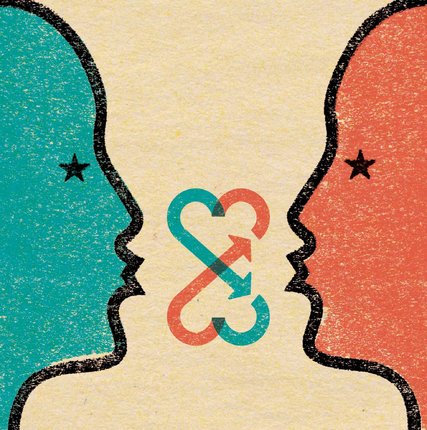
Written by Bethany Wellman, M.S.
#313 - Rural Vs. Urban Firearm Suicides

Written by Bethany Wellman, M.S.
#314 - Sick Leave Benefits & Mental health
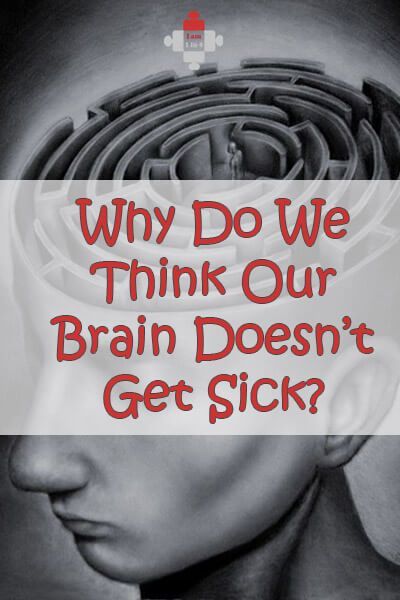
Written by Bethany Wellman, M.S.
#316 - Actively Support Partner Expansion

Written by Bethany Wellman, M.S.
#315 - Self Disclosing Intimacy

Written by Bethany Wellman, M.S.
#317 - Commitment & romance

Written by Bethany Wellman, M.S.
#310 - Detect Concealed Weapons
.jpg)
Written by Bethany Wellman, M.S.
#309 - Implicit & Explicit Memories
.jpg)
Written by Bethany Wellman, M.S.
#311 - Adolescence & Cannabis

Written by Bethany Wellman, M.S.
#312 - College Alcohol & Employment

Written by Bethany Wellman, M.S.
#306 - Cyberbullying

Written by Bethany Wellman, M.S.
#307 - Eye Contact to Connectedness

Written by Bethany Wellman, M.S.
#308 - Adolescent Interpersonal Stress & later health risks

Written by Bethany Wellman, M.S.
#301 - Healthy Lunch & Recess

Written by Bethany Wellman, M.S.
#302 - Living Space and Cognition
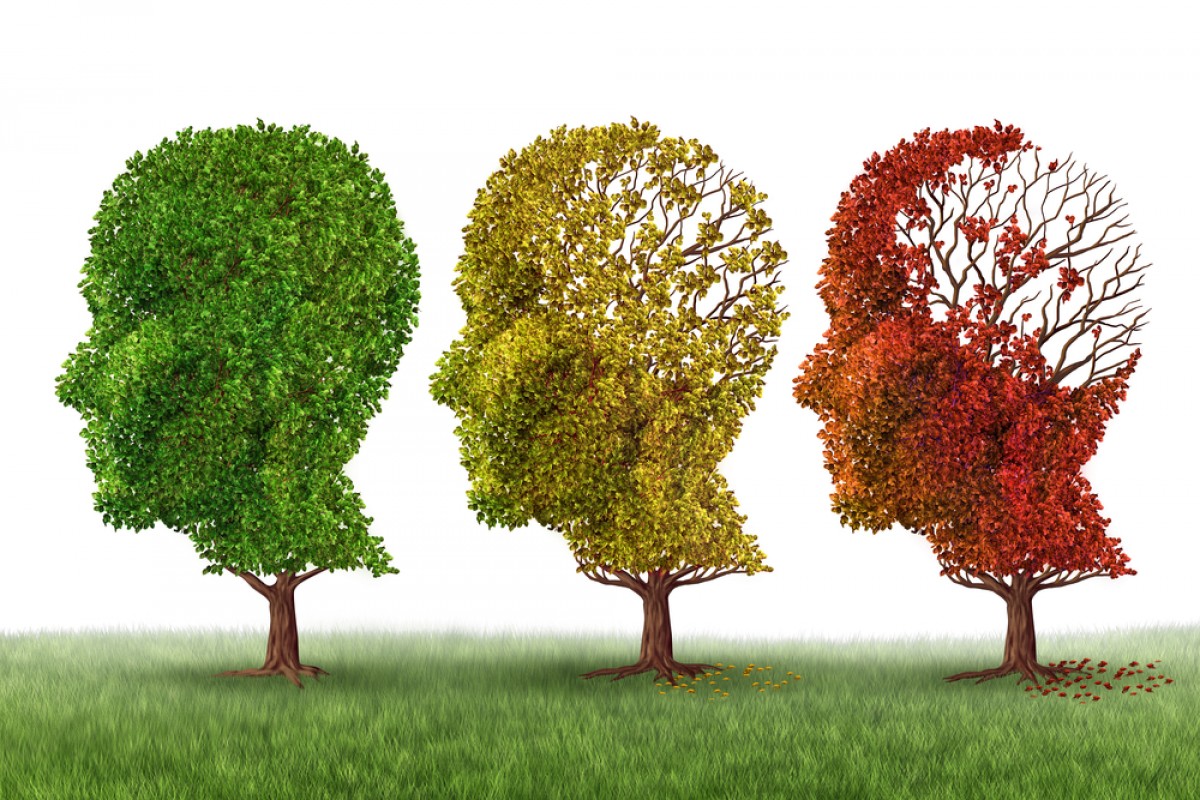
Written by Bethany Wellman, M.S.
#304 - Genetics & Leadership

Written by Bethany Wellman, M.S.
#303 - Premarital Factors in Long Marriages

Written by Bethany Wellman, M.S.
#305 - Positive Perceptions of Others

Written by Bethany Wellman, M.S.
#298 - Meaningful Conversations & Happiness

Written by Bethany Wellman, M.S.
#297 - Parenthood Gender Gap

Written by Bethany Wellman, M.S.
#299 - Coping with Misfortune

Written by Bethany Wellman, M.S
#300 - Mental Health Court

Written by Bethany Wellman, M.S.
#295 - The Power of Awe!
.png)
Written by Bethany Wellman, M.S.
#296 - Noticing Feelings in Nature
-(1).jpg)
Written by Bethany Wellman, M.S.
#293 - Health care & Schizophrenia

Written by Bethany Wellman, M.S.
#292 - Air Rage & Inequality
.png)
Written by Bethany Wellman, M.S.
#294 - Sex Ed is the Best Ed
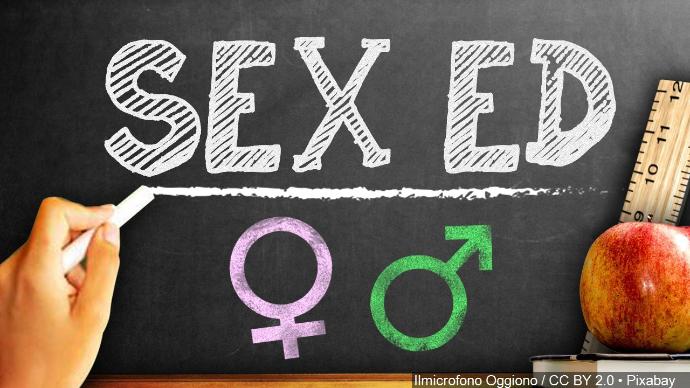
Written by Bethany Wellman, M.S.
#291 - Altruism & Good Health

Written by Bethany Wellman, M.S.
#623 - LinkedIn Job Search & Burnout

Written by Kristin M. Harris, Ph.D.
#290 - Moral Credit?
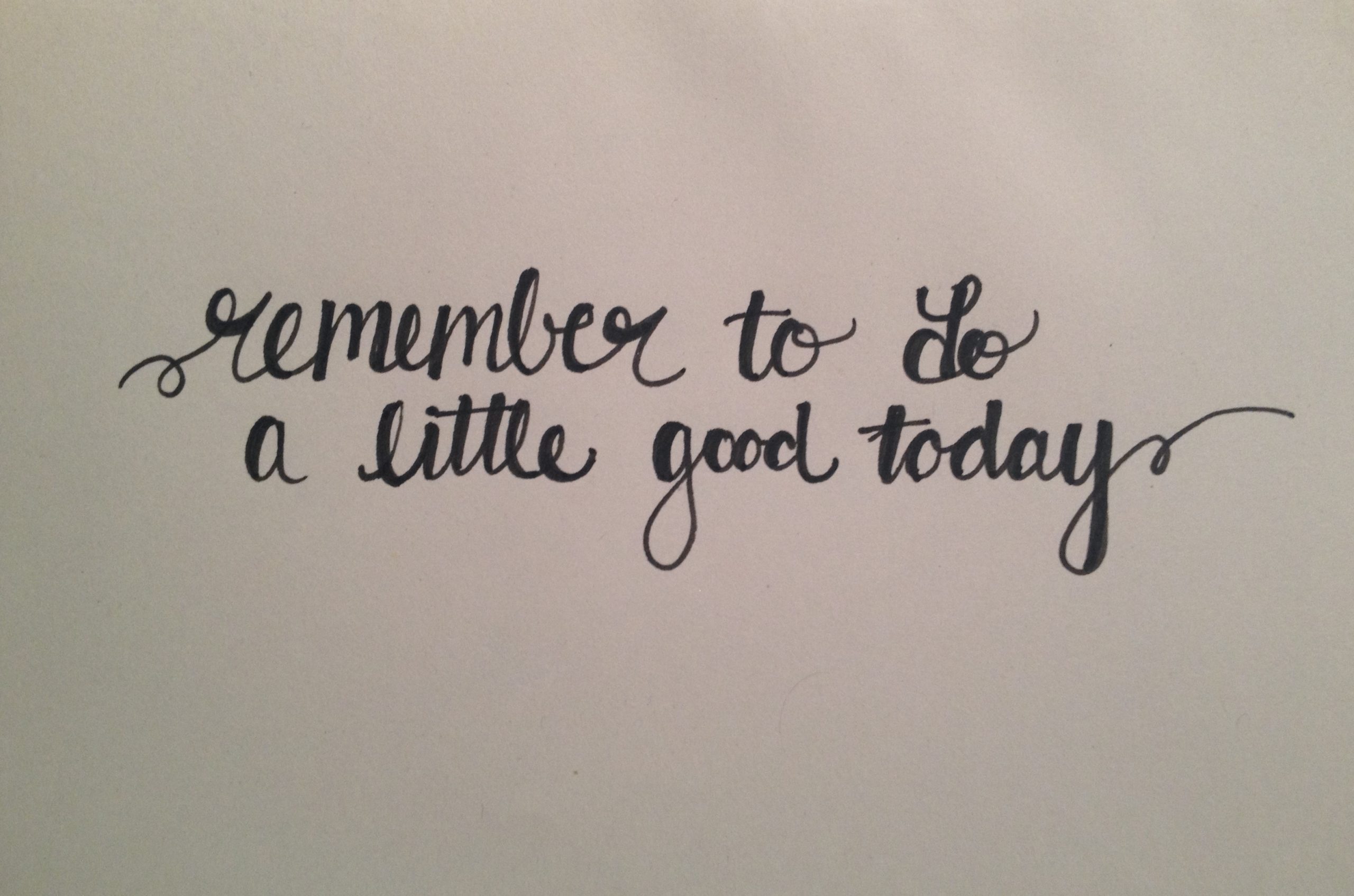
Written by Bethany Wellman, M.S.
#288 - Effective Apologies

Written by Bethany Wellman, M.S.
#289 - Kids and Guns

Written by Bethany Wellman, M.S.
#284 - Epidemic of Psychological Distress
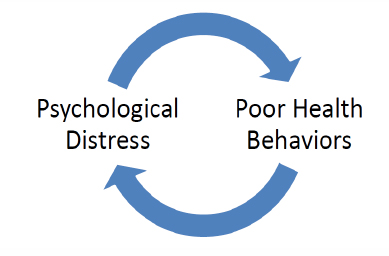
Written by Bethany Wellman, M.S.
#285 - Psychosis. A Lifetime of Antipsychotics?

Written by Bethany Wellman, M.S.
#287 - Forgiveness for Well-being

Written by Bethany Wellman, M.S
#286 - Intimate Partner Violence & Mental Health

Written by Bethany Wellman, M.S.
#280 - Divorce Factors
Written by Bethany Wellman, M.S.
#281 - Smiling, the Best Medicine?

Written by Bethany Wellman, M.S.
#282 - Contagious Yawning?

Written by Bethany Wellman, M.S.
#283 - Remember Good Deeds

Written by Bethany Wellman, M.S.
#278 - Sex Offenders Amongst Us
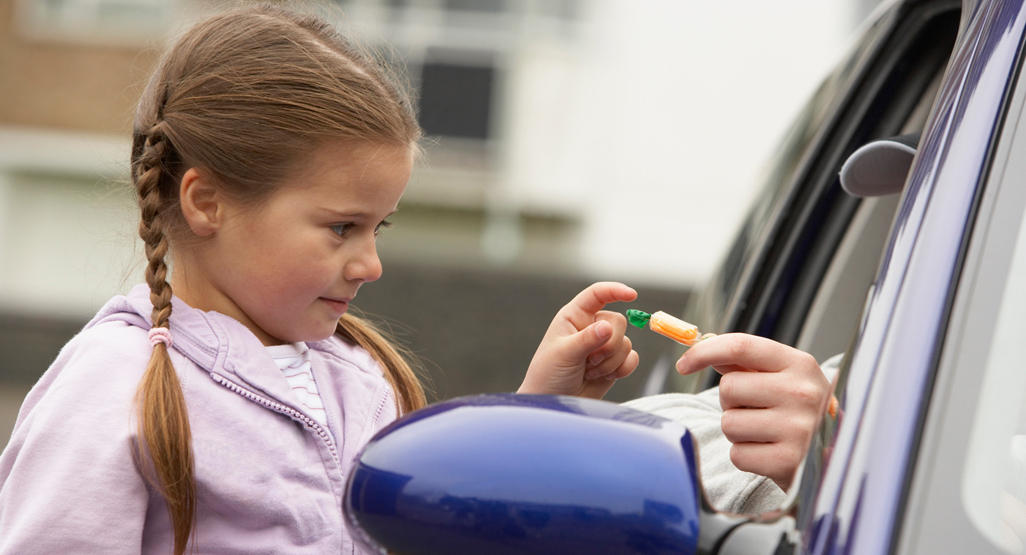
Written by Bethany Wellman, M.S.
#277 - Ignorance is Bliss

Written by Bethany Wellman, M.S.
#279 - Eat your Fruits and Veggies

Written by Bethany Wellman, M.S.
#275 - Stress & Distraction

Written by Bethany Wellman, M.S.
#274 - Loneliness & Health

Written by Bethany Wellman, M.S.
#276 - Work Value & Job Performance

Written by Bethany Wellman, M.S.
#272 - Climate Change & Mental Health

Written by Bethany Wellman, M.S.
#271 - Coping with Breaking up

Written by Lewandowski, Gary W. (2009) adapted by Juanita Baker, Ph.D from the American Psychology Association.
#273 - Swearing: Social & Physical Pain
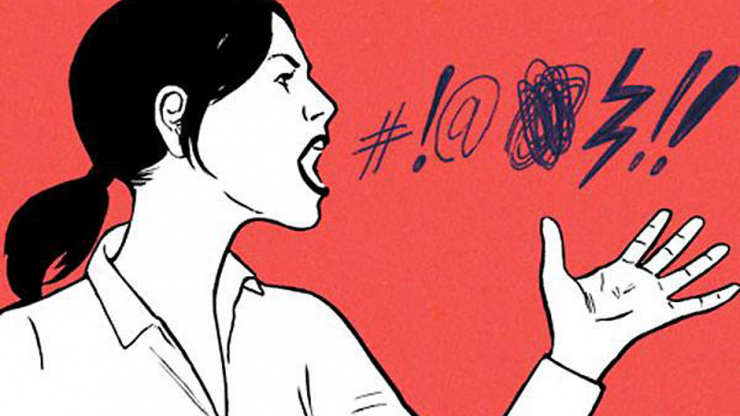
Written by Bethany Wellman, M.S.
#270 - Self-Critical Depression

Written by Bethany Wellman, M.S.
#266 - Express Appreciation

Written by Mara Rowcliffe, MS.
#267 - Keeping Your Child Awake

Written by Mara Rowcliffe, MS.
#269 - Aggressive Driving

Written by Bethany L. Wellman, MS.
#268 - Fido at the Office

Written by Mara Rowcliffe, MS.
#264 - Creating Well-Being
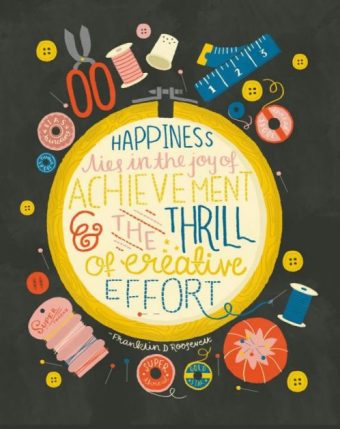
Written by Mara Rowcliffe, MS.
#263 - Charitable Giving & Identified Victim

Written by Mara Rowcliffe, MS.
#265 - Empathic Protection
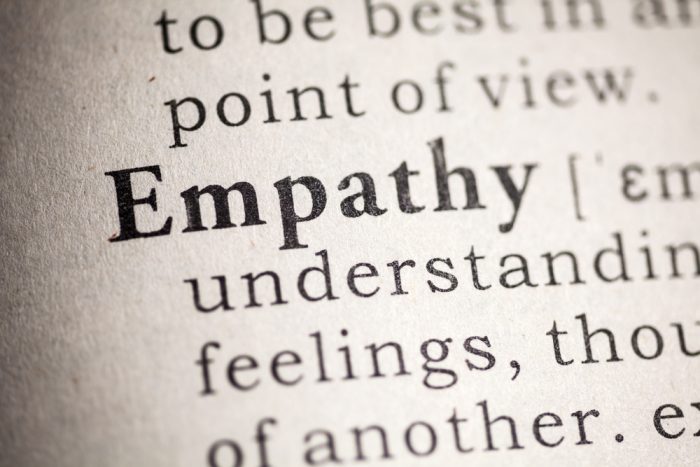
Written by Mara Rowcliffe, MS.
#260 - Grad School & Stress

Written by Bethany Wellman, M.S.
#261 - Virtual Reality Exposure and Anxiety Disorders
.jpg)
Written by Brittany Haage, B.S.
#262 - Exercise Optimism

Written by Mara Rowcliffe, MS.
#256 - A Meaningful Happy Life
Written by Mara Rowcliffe, MS.
#255 - Sweet White Lie

Written by Mara Rowcliffe, MS.
#258 - Memory Enhancing Works

Written by American Psychological Association, adapted by Juanita N Baker, Ph.D.
#257 - Meaningful Work & Disgruntled Employees

Written by Tessly A. Dieguez, B.A.
#259 - Social Media & Health Risk

Written by Megan Hart, B.S.
#251 - Purposeful Happiness

Written by Mara Rowcliffe, MS
#253 - Escalating Dishonesty

Written by Juanita N Baker, Ph.D.
#252 - Value in Adversity

Written by Mara Rowcliffe, MS
#254 - Everybody is not doing it

Written by Mara Rowcliffe, MS.
#250 - Consider Compassion

Written by Mara Rowcliffe, MS
#249 - Talking to Kids about Financial Stress

Written by American Psychological Association, adapted by Juanita N Baker, Ph.D.
#248 - Economic Stress & Parenting

Written by American Psychological Association, adapted by Juanita N Baker, Ph.D.
#244 - Imperfect Memory

Written by Mara Rowcliffe, MS
#245 - Prolonged Exposure Therapy

Written by Mara Rowcliffe, MS
#247 - Test Anxiety Treatment

Written by Mara Rowcliffe, MS
#246 - Exercise & Well Being

Written by Mara Rowcliffe, MS
#242 - Calling All Smokers
.jpg)
Written by Mara Rowcliffe, MS
#241 - Parenting the Brain

Written by Mara Rowcliffe, M.S.
#243 - Count Your Gratitudes!

Written by Mara Rowcliffe, MS
#239 - Employed Compassion
-(1).png)
Written by Mara Rowcliffe, MS.
#238 - Another Benefit to Napping!

Written by Mara Rowcliffe, MS.
#240 - Memory Trick

Written by Mara Rowcliffe, MS.
#234 - Cognitive Behavioral Therapy. Do Your Research!

Written by Mara Rowcliffe, MS.
#236 - Altruism & Mating Success

Written by Mara Rowcliffe, MS.
#235 - The Bright Side of Pessimism

Written by Mara Rowcliffe, MS.
#237 - Veteran Suicide Risk

Written by Mara Rowcliffe, MS.
#231 - Plan Healthy Eating
.jpg)
Written by Mara Rowcliffe, MS.
#232 - Influence of Social Media

Written by Mara Rowcliffe, MS.
#233 - Random Sampling

Written by the American Psychological Association. (2016), written by the American Psychological Association, adapted by Juanita N. Baker, Ph.D.
#228 - Wedding Bells and Social Networks

Written by Mara Rowcliffe, MS.
#229 - Life Begins at 70!
.png)
Written by Susan Turk Charles Reynolds, C. A. and Gatz, M. (2001) written by the American Psychological Association, adapted by Juanita N. Baker, Ph.D.
#230 - Tips to Saving Money

Written by Mara Rowcliffe, M.S.
#222 - HIV in Youth

Written by Blair T. Johnson, PhD; Michael P. Carey, PhD; Kerry L. Marsh, PhD, et al., (2006) written by the American Psychological Association, adapted by Juanita N. Baker, Ph.D.
#223 - Recalling Generosity

Written by Mara Rowcliffe, MS.
#224 - Rejection Cheats
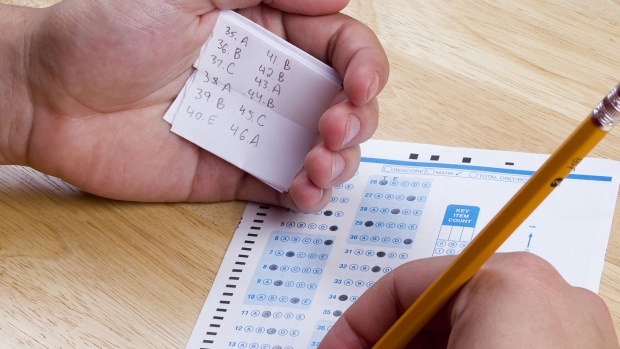
Written by Mara Rowcliffe, MS.
#225 - Deployed and Still Communicating

Written by Mara Rowcliffe, MS.
#226 - Facebook Jealousy

Written by Mara Rowcliffe, MS.
#227 - Sleep Disorders in US Military

Written by Mara Rowcliffe, MS.
#622 - Growth Mindset

Written by Kristin M. Harris, Ph.D.
#219 - Technology Distracts

Written by Mara Rowcliffe, MS.
#218 - Cell Dependency

Written by Mara Rowcliffe, MS.
#220 - Limiting Technology

Written by Mara Rowcliffe, MS.
#221 - Adolescent Pregnancy

Written by Malpass, Roy S. and Devine, Patricia G. (1981) written by the American Psychological Association, adapted by Juanita N Baker, Ph.D.
#216 - Active Duty to Collegiate Life

Written by Mara Rowcliffe, MS.
#215 - The Women Gap

Written by Mara Rowcliffe, MS.
#217 - Triggering Anger

Written by Mara Rowcliffe, MS.
#211 - Language Exposure

Written by Mara Rowcliffe, MS.
#212 - Language in Preverbal Infants

Written by Mara Rowcliffe, MS.
#214 - Social Blindness
Written by Mara Rowcliffe, MS.
#213 - The High Life

Written by Mara Rowcliffe, MS.
#207 - Sleep on It

Written by Mara Rowcliffe, MS.
#209 - Self Talk

Written by Mara Rowcliffe, MS.
#208 - Post ID Eyewitness Feedback

Written by Mara Rowcliffe, MS.
#210 - Bilingual Benefits
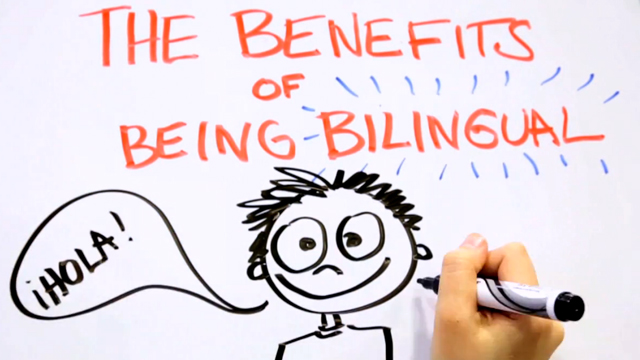
Written by Mara Rowcliffe, MS.
#203 - Seek Advice!

Written by Mara Rowcliffe, MS.
#205 - Looking for Love

Written by Mara Rowcliffe, MS.
#204 - Forming False Memories
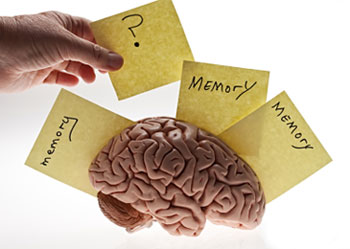
Written by Mara Rowcliffe, MS.
#206 - Eyewitness Errors

Written by Mara Rowcliffe, MS.
#201 - Kids. Enjoy Your Veggies

Written by Mara Rowcliffe, MS.
#202 - Future Happiness
Written by Mara Rowcliffe, MS.
#198 - Mind Body Connection

Written by Mara Rowcliffe, BS.
#200 - Childhood Trauma & School Success
Written by Mara Rowcliffe, MS.
#199 - A Busy Bee is a Happy Be

Written by Mara Rowcliffe, MS.
#196 - Rejection Hurts

Written by Mara Rowcliffe, BS.
#195 - Media Exposure in Children
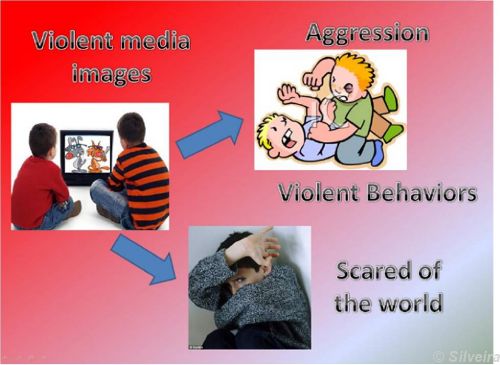
Written by Mara Rowcliffe, BS.
#197 - The Breakup Experience

Written by Mara Rowcliffe, BS.
#194 - Marital Closeness

Written by Mara Rowcliffe, BS.
#192 - Forgiveness in Marriage

Written by Juanita N Baker, Ph.D.
#193 - From Newlyweds to Divorce

Written by Mara Rowcliffe, BS.
#190 - Consequences of Juvenile Incarceration

Written by Mara Rowcliffe, BS.
#191 - Parental Smoking

Written by Mara Rowcliffe, BS
#189 - Homework Overload!

Written by Mara Rowcliffe, BS
#187 - Risk Communication & Health

Written by Gibbons, Frederick X., Gerrard, M., Lane, D.J., Mahler, H.I.M., & Kulik, J.A. and written by American Psychological Association, adapted by Juanita N. Baker, Ph. D
#188 - Fostering Communication in Young Children
.png)
Written by Mara Rowcliffe, BS
#184 - Shop & Eat Healthy

Written by Mara Rowcliffe, BS
#186 - Go Ahead, Shed A Tear

Written by Mara Rowcliffe, BS
#185 - Give Me A Break!
Written by Mara Rowcliffe, BS
#182 - Working Off the Clock

Written by Mara Rowcliffe, BS.
#181 - Spanking & Aggression
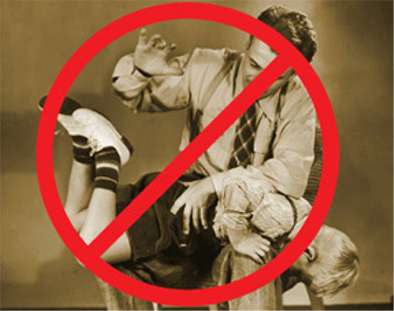
Written by Mara Rowcliffe, BS
#183 - Divorce Prevention

Written by Mara Rowcliffe, BS
#178 - Dark Side of Happiness

Written by Mara Rowcliffe, BS.
#179 - Responsive & Loving Parenting

Written by Mara Rowcliffe, BS.
#180 - Vent No More

Written by Mara Rowcliffe, BS
#176 - Have Some Self-Compassion

Written by Mara Rowcliffe, BS.
#175 - Enjoy Nature

Written by Mara Rowcliffe, BS
#177 - Log Online

Written by Mara Rowcliffe, BS.
#172 - Retirement Psychological Portfolio
.jpg)
Written by Based on research by Schlossberg, Nancy K. (2004), adapted by Juanita N. Baker, Ph.D.
#173 - Men and Women Retirement Differences

Written by Juanita N Baker, Ph.D.
#174 - Auditory Working Memory
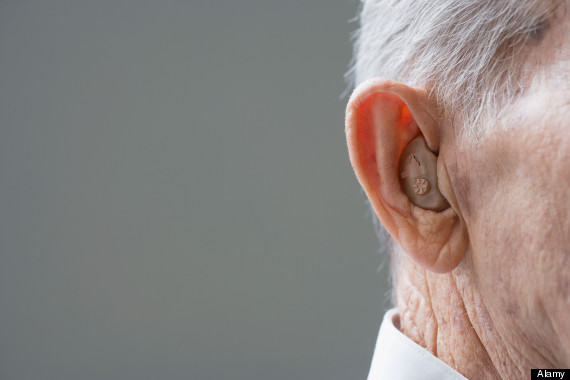
Written by Juanita N. Baker, Ph.D.
#169 - Behavioral Options for ADHD
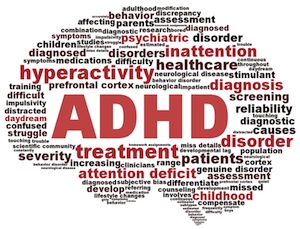
Written by Mara Rowcliffe, BS.
#170 - Another Reason For A Good Deed!

Written by Mara Rowcliffe, BS.
#171 - Domestic Violence

Written by Mara Rowcliffe, BS.
#167 - Reach for the Chocolate!

Written by Mara Rowcliffe, BS.
#166 - Sticky Song, Sticky Solution

Written by Mara Rowcliffe, BS.
#168 - Gay & Straight: No Difference

Written by Based on research by Hooker, Evelyn (1957), adapted by Juanita N. Baker, Ph.D.
#164 - Aggressive in Red

Written by Mara Rowcliffe, BS.
#163 - Kindness Counts!
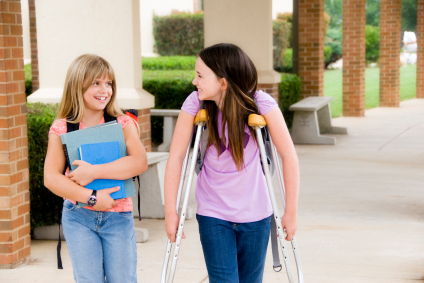
Written by Mara Rowcliffe, BS.
#165 - Exercise in School

Written by Mara Rowcliffe, BS.
#160 - Safety Saves Billions

Written by Based on research by Hermann, Jaime A., et al. (2010), adapted by Juanita N. Baker, Ph.D.
#161 - Sleep Paralysis

Written by Mara Rowcliffe, BS.
#162 - Shell Shock Impact
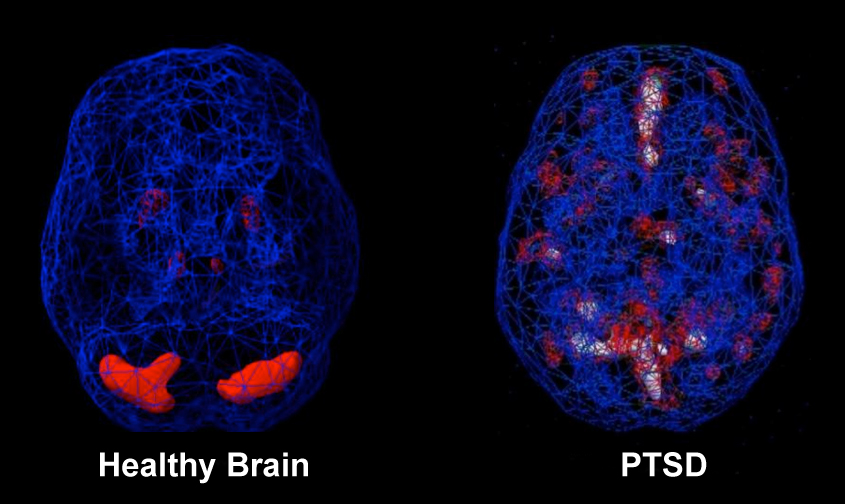
Written by Mara Rowcliffe, BS.
#157 - PSTD and TV

Written by Based on research by Silver, Roxane C., Holman, A., McIntosh, D.N., Poulin, M., and Gilrivas, V. (2002), adapted by Juanita N Baker, Ph.D.
#158 - Identify, Measure, Reward Safe Behaviors
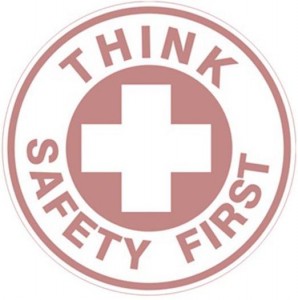
Written by Juanita N. Baker, Ph.D.
#159 - Token Economy & Job Safety

Written by Byron Wine, Ph.D., BCBA-D.
#156 - Anticipatory happiness: material or experiential?

Written by Mara Rowcliffe, BS.
#155 - Second First Impressions

Written by Mara Rowcliffe, BS.
#154 - Study Smart! Reflect!

Written by Mara Rowcliffe, BS.
#621 - Setting Goals

Written by Kristin M. Harris, Ph.D.
#620 - Afraid of Christmas?

Written by Kristin M. Harris, Ph.D.
#619 - Foster Care Outcomes

Written by Kristin M. Harris, Ph.D.
#152 - Risky Business

Written by Mara Rowcliffe, BS.
#151 - Marital Predictions

Written by Mara Rowcliffe, BS.
#153 - Coping with Pressure

Written by Mara Rowcliffe, BS.
#150 - Interruptions

Written by Mara Rowcliffe, BS.
#148 - Support Your Family & Friends
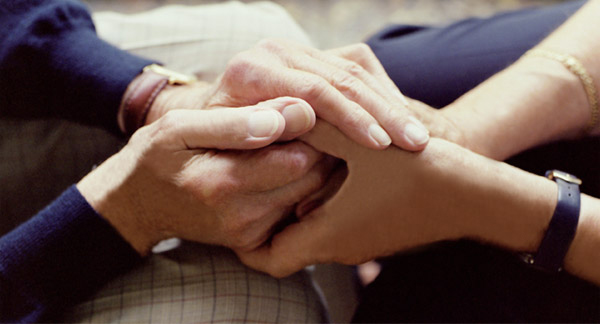
Written by Mara Rowcliffe, BS.
#147 - Social Network Self-Disclosure

Written by Mara Rowcliffe, BS.
#149 - An Emotional Brain Injury

Written by Mara Rowcliffe, BS.
#145 - Spouse’s Personality Impacts Partner

Written by Mara Rowcliffe, BS
#146 - Costly Choices

Written by Mara Rowcliffe, BS.
#143 - Bring a Friend Along

Written by Mara Rowcliffe, BS.
#144 - Depression & Heart Attacks

Written by Mara Rowcliffe, BS.
#142 - Professional Clothes and a Smile!

Written by Mara Rowcliffe, BS.
#140 - Planning Ahead or Looking Back?

Written by Mara Rowcliffe, BS
#141 - Post Traumatic Stress and Childhood Cancer

Written by Mara Rowcliffe, BS.
#618 - Depression & Holidays

Written by Kristin M. Harris, Ph.D.
#617 - Socially Connect!

Written by Kristin M. Harris, Ph.D.
#138 - Hoarding & Decision Making

Written by Mara Rowcliffe, BS
#139 - Letters of Gratitude

Written by Mara Rowcliffe, BS
#137 - Good or bad news first?

Written by Mara Rowcliffe, BS
#136 - Tis’ the season for giving

Written by Mara Rowcliffe, BS
#134 - Road Rage Treatment

Written by American Psychological Association, adapted by Juanita N Baker, Ph.D.
#135 - Mistakenly Seeking Solitude

Written by Mara Rowcliffe, BS
#133 - Road Rage Characteristics

Written by American Psychological Association, adapted by Juanita N Baker, Ph.D.
#616 - Give Thanks

Written by Kristin M. Harris, Ph.D.
#131 - Alcohol and Feeling Attractive

Written by Eleanor Fulton, Psy.D.
#132 - It’s a Wonderful Life

Written by Mara Rowcliffe, BS.
#130 - Cell Phone Intoxication

Written by Mara Rowcliffe, BS.
#129 - Halloween & Fear Based Laws

Written by Juanita N Baker, Ph.D.
#128 - Position with Power

Written by Mara Rowcliffe, BS
#615 - Tribal Culture

Written by Kristin M. Harris, Ph.D.
#127 - Personality Makes The Perfect Match!

Written by Mara Rowcliffe, BS
#126 - Advertising & Child’s Age

Written by Mara Rowcliffe, BS
#125 - What Happens To The Cool Kids?

Written by Mara Rowcliffe, BS
#124 - Emotion Transfer & Social Networking

Written by Mara Rowcliffe, BS
#123 - Connect or Cell Phone?

Written by Mara Rowcliffe, BS
#614 - Self-compassion & PTSD

Written by Kristin M. Harris, Ph.D.
#613 - PTSD Growth

Written by Kristin M. Harris, Ph.D.
#122 - Bragging Rights

Written by Mara Rowcliffe, BS
#121 - Moral Story Time

Written by Mara Rowcliffe, BS
#120 - Sleep deficits & harm

Written by American Psychological Association, adapted by Juanita N Baker, Ph.D.
#119 - Resist Acquaintance Rape

Written by Juanita N Baker, Ph.D.
#118 - Older Brains Grow!
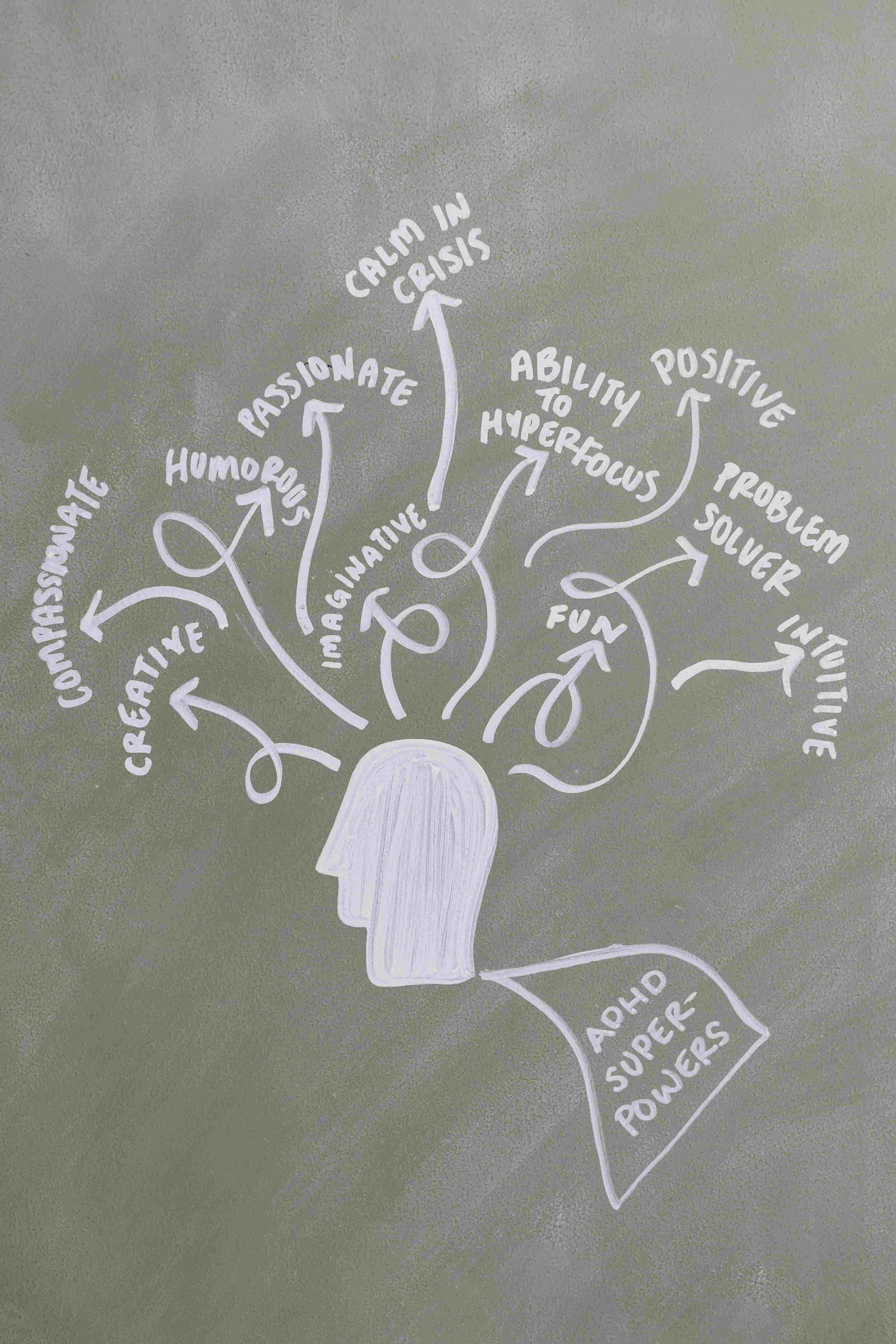
Written by Mara Rowcliffe, BS
#117 - Sleep Like A Baby!

Written by Mara Rowcliffe, BS
#116 - Emotional Dieting

Written by Mara Rowcliffe, BS
#115 - Children & Generosity

Written by Mara Rowcliffe, BS
#114 - Memory Lane

Written by Mara Rowcliffe, BS
#113 - Food Dudes eat veggies

Written by Katie Kavanaugh, MS, BCBA
#112 - Body Image & Eating Disorders

Written by Kyle Piecora, M.S.
#110 - Gossip & popularity

Written by American Psychological Association, adapted by Juanita N Baker, Ph.D.
#108 - Get Excited Instead of Anxious!

Written by Kyle Piecora, M.S.
#107 - Measuring Pain

Written by American Psychological Association, adapted by Juanita N Baker, Ph.D.
#106 - Concussion Recovery & Prior Concussion
.jpg)
Written by Kyle Piecora, M.S.
#612 - Fear Appeal

Written by Kristin M. Harris, Ph.D.
#611 - Mafia & Fear

Written by Kristin M. Harris, Ph.D.
#610 - Scared Athletes

Written by Kristin M. Harris, Ph.D.
#609 - Powerholders & Work

Written by Kristin M. Harris, Ph.D.
#608 - Newcomers

Written by Kristin M. Harris, Ph.D.
#607 - Exercise and Anxiety

Written by Kristin M. Harris, Ph.D.
#606 - Zoom Fatigue

Written by Kristin M. Harris, Ph.D.
#605 - Supervisor Ratings

Written by Kristin M. Harris, Ph.D.
#604 - Breaking the Silence
.jpg)
Written by Kristin M . Harris, Ph.D.
#603 - Security & Helping
.jpg)
Written by Kristin M . Harris, Ph.D.
#602 - Manipulation at Work
.jpg)
Written by Gary Burns, Ph.D.; Kristin M. Harris, Ph.D.
#601 - Friend Yourself
.jpg)
Written by Kristin M . Harris, Ph.D.
#600 - Compassion and Social Class
.jpg)
Written by Kristin M . Harris, Ph.D.
#599 - Empathy & Cyberbullying
.jpg)
Written by Kristin M . Harris, Ph.D.
#598 - TV Age Stereotypes
.jpg)
Written by Kristin M . Harris, Ph.D.
#597 - Mental Health & Birds
.jpg)
Written by Juanita N. Baker , Ph.D.
#596 - LGBTQ+ Labels
.jpg)
Written by Kristin T. Harris, Ph.D.
#595 - National Satisfaction
.jpg)
Written by Kristin T. Harris, Ph.D.
#594 - PTSD & Activist African Americans

Written by Kristin T. Harris, Ph.D.
#593 - School Belonging

Written by Kristin Harris, B.S.
#592 - Father & Parenthood

Written by Kristin Harris, Ph.D.
#591 - Catfishing Online

Written by Jarret Bain B.S.
#584 - Disadvantaged Youth & Preschool

Written by Jarret Bain B.S.
#585 - Pretty Meaningful

Written by Jarret Bain B.S.
#583 - Psychosis and CBT-P

Written by Juanita N. Baker, Ph.D.
#581 - Invisible Women of Color

Written by Jarret Bain B.S.
#582 - Seasonal Depression

Written by Jarret Bain B.S.
#578 - Marriage in Malaysia

Written by Jarret Bain B.S.
#580 - Postpartum Depression

Written by Jarret Bain B.S.
#577 - Body Positivity

Written by Jarret Bain B.S.
#576 - Parental Involvement & Adolescents

Written by Jarret Bain B.S.
#575 - Loneliness Over Lifetime

Written by Jarret Bain B.S.
#573 - Social Media & Anxiety

Written by Jarret Bain B.S.
#574 - Purpose & Aging

Written by Jarret Bain B.S.
#571 - Mass Murderers

Written by Jarret Bain B.S.
#572 - Romantic Attachment

Written by Jarret Bain B.S.
#568 - Enjoy Waiting

Written by Jarret Bain B.S.
#569 - Adolescent Cannabis Use

Written by Jarret Bain B.S.
#570 - Animals & BPD

Written by Jarret Bain B.S.
#567 - AI-Human Connection

Written by Jarret Bain B.S.
#566 - Illusion of Moral Decline

Written by Jarret Bain B.S.
#563 - Opinion Neutrality Risk

Written by Jarret Bain B.S.
#561 - Nature Walks & Emotions

Written by Jarret Bain B.S.
#560 - Personality & Longevity
Written by Jarret Bain B.S.
#562 - Sleep & Empathy

Written by Jarret Bain B.S.
#558 - Fiction & Perspective

Written by Jarret Bain B.S.
#557 - Mother’s voice & Brain reward

Written by Jarret Bain B.S.
#559 - Food for Thought

Written by Jarret Bain B.S.
#555 - Dating Age Preference

Written by Jarret Bain B.S.
#556 - Contagious Infidelity

Written by Jarret Bain B.S.
#529 - Checking In & Reaching Out

Psychology Science Minute #529
Connecting with friends and loved ones results in pleasant and positive experiences. Yet do you find you are out of touch with important people in your life? Past research suggests a steady decline of social interactions in our society. Maintaining ties is challenging in many settings, like school and some workplaces. If reaching out results in positive appreciation, how come we don’t...
#532 - Savoring the Moment

Psychology Science Minute #532
Written by Vanessa Melendez, B.S.
People who experience more adversity tend to report more savoring or cherishing of positive situations. Researchers have investigated reducing negative emotions like anxiety but less on what enhances positive emotions when experiencing sights, songs, or smells. Like “stopping to smell the roses...
#531 - Cyber Leisure
.png)
Psychology Science Minute #531
Written by Vanessa Melendez, B.S.
Do cyber distractions cause you to delay going to bed?
Past research indicates bedtime procrastination is related to stress and poor sleep quality. The more individuals delay their bedtime, the more they experience poorer sleep and psychological outcomes.
#097 - Savings & Procrastination

Reference:
Thaler, R. H. & Benartzi, S. (2004). Save More Tomorrow™: Using behavioral economics to increase employee saving. Journal of Political Economy, Vol. 112, No. S1.
For more details see:
American Psychological Association, February 19, 2004
http://www.apa.org/research/action/finance.aspx
Based on research by Thaler, Richard, Benartzi, 2004, written by Juanita N. Baker, Ph. D.
Looking for sound financial advice? Behavioral economics uses psychological principles to help people make better choices with their money, including saving for retirement.
Behavioral scientist and economist Richard Thaler’s University of Chicago study was the driving force behind a program to get workers at a manufacturing company to save more for retirement. One key aspect of the program was to counter procrastination in making an effort to save. Instead, workers had to opt out, if they didn’t want a salary portion automatically saved for them. Workers that participated in Thaler’s “Save More Tomorrow” program went from saving 3.5% for their retirement accounts to 13% over 3 years. This increase was also made possible by convincing 78% of the workers to commit in advance to allocating a portion of their future salary increases toward retirement savings. This also counters the human tendency to be overly optimistic (that prevents saving) by getting people to commit to saving more for their future.
With compound interest and wise investments, every $1000 more saved per year can make the difference in thousands of dollars more at retirement.
Put in use the same behavioral tendencies – e.g., procrastination – set yourself up so more energy is needed to stop from saving than to save.
#088 - Polygraphs & Lies

Cited Research & Additional Sources
Grubin, D., & Madsen, L. (2005). Lie detection and the polygraph: A historical review. The Journal of Forensic Psychiatry & Psychology,16, 357-369.
Langleben, D. D., Dattilio, F. M., & Guthel, T.G. (2006). True lies: Delusions and lie-detection technology. Journal of Psychiatry & Law. 34, 351-370.
Lykken, D. (1998). A Tremor in the Blood: Uses and Abuses of the Lie Detector, 2d ed. New York: Perseus.
National Academy of Sciences (2002). The Polygraph and Lie Detection. Washington, DC: National Academy Press.
Saxe, L. (1991). Lying: Thoughts of an applied social psychologist. American Psychologist, Vol. 46, No. 4, pp. 409-4
Based on research by the American Psychological Association, adapted by Juanita N Baker, Ph.D..
What’s The Truth About Lie Detectors? Courts, including the United States Supreme Court (cf. U.S. v. Scheffer, 1998 in which Dr. Leonard Saxe’s research on polygraph fallibility was cited), have repeatedly rejected the use of polygraph evidence because of its inherent unreliability. A “lie detector” only infers deception by analyzing physiological responses to an unstandardized series of questions.
The polygraph typically records three indicators of arousal: heart rate/blood pressure, respiration, and skin conductivity. The procedure compares responses to “relevant” questions (e.g., “Did you shoot your wife?”), with “control” questions concerning misdeeds that are similar to those being investigated, but refer to the person’s past, e.g., “Have you ever betrayed someone who trusted you?”
People are assumed to fear control questions designed to arouse their concern about their past truthfulness, more than relevant questions asking about a crime they know they did not commit. Thus, persons are labeled “deceiving” if they respond more to relevant questions. Yet, there is no evidence that any pattern of physiological reactions is unique to deception. An honest person may be nervous when answering truthfully and a dishonest person may not be anxious.
Most psychologists agree there are few good studies showing that polygraph tests can accurately detect lies. Remain skeptical about any conclusion wrung from a polygraph.
#079 - Anti-Bullying Training

References
Espelage, D. L., Low, S., Polanin, J. R., & Brown, E. C. (2013). The impact of a middle school program to reduce aggression, victimization, and sexual violence. Journal of Adolescent Health, xxx, p. 1-7.
For many more ideas on prevention, what to do about bullying, and stopping bullying, see the government website: http://www.stopbullying.gov
Based on research by Dr. Dorothy L. Espelage et al, 2013. Psychology Science Minute written by Kyle Piecora, M.S..
What can be done to reduce school violence and stop bullying?
Dr. Dorothy Espelage and psychologists from Illinois, Arizona, and Washington evaluated the impact of the Second Step: Student Success Through Prevention Middle School Program, designed to reduce peer aggression and victimization, homophobic name calling, and sexual violencesuch as unwanted sexual touching or talk.
They randomly assigned 36 different middle schools, over 3,600 students, to either the program or a control condition. All 6th graders completed self-report instruments measuring bullying, name calling, and sexual touch both before and after the 1-year program that taught problem solving skills, empathy, and emotion management. The program students were 42% less likely than students in control schools to report physical aggression but not significantly different in verbal and relational bullying, or sexual talk. Further research is needed on effective ways of reducing these.
Since the program demonstrates it does reduce physical aggression in adolescents, it gives hope that schools taking time to provide students with this tested effective program using rich multimedia demonstration, practice and feedback in skill training can also achieve reduced physical violence. Parents and teachers speak up and encourage schools to use proven effective training to reduce peer conflict and violence!
#073 - Social Pressure and Countries

References:
Asch, Solomon E. (1952). Chp. 16 Group forces in the modification and distortion of judgments, (pp. 450-501). In Asch, Solomon E. (1952). Social psychology. Englewood Cliffs, NJ, US: Prentice-Hall, Inc. xiii, 649 pp. doi: 10.1037/10025-016
Asch, Solomon E. (1955). Opinions and social pressure. Scientific American, 193, 5, 31-35.
Asch, S. E. (1956). Studies of independence and conformity. A minority of one against a unanimous majority. Psychological Monographs, 70(9, Whole No. 416).
Bond, Rod & Smith, Peter B. (1996). Culture and conformity: A meta-analysis of studies using Asch’s (1952b, 1956) line judgment task. Psychological Bulletin, Vol 119(1), 111-137. doi: 10.1037/
Based on Research by Solomon Asch, Ph.D., 1952 and Drs Rod Bond and Peter B. Smith, 1996. Psychology Science Minute written by Juanita N. Baker, Ph.D..
Why are some people more likely to give into social pressure and others are not? English psychologists, Rod Bond and Peter Smith found that people from different cultures vary considerably on their response to social pressure.
They analyzed the results of 133 different research studies on conformity in the US and in other countries. They also gathered surveys measuring each country’s beliefs in group relations versus individualism. Group relations countries valued people working together, and the need for responsibility and obedience. Individualistic countries emphasized independence, individual achievement, and self-reliance. Not surprisingly, persons from group oriented countries scored higher on conformity than persons in countries identified as valuing individualism.
More research is needed to determine how individualistic and group-oriented countries can best relate to establish common goals, resolve conflicts and work together for a better world.
Countries need a certain amount of compliance to social rules and laws in order to cooperate for the benefit of its members. However, for countries to thrive, they also need individuals who are willing to weather ridicule, embarrassment, or be ostracized so that creativity, innovation, and diverse ideas can facilitate adaptation to new circumstances.
Be open-minded and kind when others express new or diverse ideas as they may benefit everyone.
#072 - Memory & Aging

References:
For more details see:
http://www.apa.org/research/action/memory-changes.aspx
American Psychological Association, June 11, 2006
Cited Research
Willis, S.L.; Tennstedt, S.L.; Marsiske, M.; Ball, K; Elias, J.; Koepke, K. M.; Morris, J. N.; Rebok, G.W.; Unverzagt, F. W.; Stoddard, A. M.; Wright, E.; (2006). Long-term effects of cognitive training on everyday functional outcomes in older adults. JAMA, 296 (23), 2805-2814. doi:10.1001/jama.296.23.2805.
Full article: http://jama.jamanetwork.com/article.aspx?articleid=204643
From a study called Advanced Cognitive Training for Independent and Vital Elderly (ACTIVE), which Michael Marsiske
Based on Research by Sherry Willis & Michael Marsiske, 2006. Psychology Science Minute written by Psychological Association, adapted by Juanita N. Baker, Ph.D..
As we age and cannot remember names, we worry about memory. What can we do to keep our memory sharp?
Psychologist Michael Marsiske and colleagues wondered whether short mental workouts would improve performance and prevent memory loss. They assigned 2,800 well-functioning elder volunteers, average age 74, to one of three different thinking skills training: memory (or mnemonic strategies for remembering lists), reasoning (strategies for finding the pattern in a letter or word series), and processing speed (visual search with divided attention). Another condition had no training.
All trained participants received ten hours of instruction. A year later half received 8 hours of “booster” training. Five years later, compared to untrained controls, each trained group still performed significantly better on their specifically trained brain skills. In addition, the groups exhibited fewer declines in real world activities, such as accurately reading medicine labels, finding items, or reacting quickly to road signs. The reasoning-trained group showed the most improvement and additional benefits from the booster sessions.
You too can get 18 hours of intense instruction. Take a course; learn a new skill, language or musical instrument. Stay active: volunteer, socialize and support friends, do puzzles. Use your brain in new areas to prevent memory loss and the development of dementia such as Alzheimer’s.
#068 - Dyslexia & Video Games

References:
For more details see:
http://www.apa.org/research/action/dyslexia.aspx
American Psychological Association, June 1, 2004
Cited Research
Holly Fitch, R., & Tallal, P. (2003). Neural mechanisms of language-based learning impairments: Insights from human populations and animal models. Behavior and Cognitive Neuroscience Reviews, Vol. 2, pp. 155-178.
Tallal, P., & Benasich, A. A. (2002). Developmental language learning impairments. Development and Psychopathology, Vol. 14, pp. 559-579.
Temple, E., Deutsch, G.K., Poldrack, R.A., Miller, S.L., Tallal, P., Merzenich, M.M. & Gabrieli, J. (2003). Neural deficits in children with
Based on Research by Paula Tallal, Ph.D.. Psychology Science Minute written by Psychological Association, adapted by Juanita N. Baker, Ph.D..
Why do about 15 percent of Americans struggle to learn to read? Some letters like “b” and “p” are difficult to distinguish by sight or sound. Letter sounds occur exceedingly fast in only ten hundredths of a second. Being able to quickly identify these ultra fast sounds and segment them out of words is essential to basic language foundation, affecting what we hear, read, spell and speak. Dyslexia, defined as difficulty learning to read despite average intelligence may cause children academic problems.
Cognitive neuropsychologist Paula Tallal and colleagues developed research-based computerized video training games, called “Fast ForWord,” helping children with this form of dyslexia to function more like normal readers. The games provide intensive, highly individualized cross-training for attention, processing, cognitive, linguistic and reading skills, all of which are vital for academic success. For example, in one of the games a child earns points by distinguishing the sounds “ba” from “pa.” When a child masters the task, the game adjusts its playing level so the child is challenged on a more advanced level the next day. The result: treatment effects that formerly required years can be accomplished in a few weeks.
Can video games be a positive activity? When carefully designed, the games can educate and remediate!
#059 - Psychologists Teach Coaches

References:
For more details see:
http://www.apa.org/research/action/coach.aspx
American Psychological Association, May 29, 2003
More about researchers and availability of coaching, see:
http://www.washington.edu/research/pathbreakers/1975b.html
Cited Research
Smith, R. E., Smoll, F. L., & Hunt, E. B. (1977). A system for the behavioral assessment of athletic coaches. Research Quarterly, 48, 401-407.
Smith, R. E., Smoll, F. L., & Curtis, B. (1979). Coach effectiveness training: A cognitive behavioral approach to enhancing relationship skills in youth sport coaches. Journal of Sport Psychology, 1, 59-75.
Based on Research by Ronald Smith, Ph.D. and Frank Smoll, Ph.D.. Psychology Science Minute written by American Psychological Association, adapted by Juanita N. Baker, Ph.D..
Is playing a sport good for kids? Some critics argue that parents and coaches place too many demands upon kids especially by “winning at all costs” and creating fear of failure and excessive anxiety.
A quality child’s sports experience largely depends on the environment created by the coach. Psychologists Ronald Smith and Frank Smoll designed the Coach Effectiveness Training program to instruct youth sports coaches on the finer points of team building, esteem nurturing, and example-setting. Based on cognitive-behavioral therapy techniques, they taught coaches to be aware of and foresee the impacts of their behaviors by understanding how their young athletes perceive their behaviors. The training encourages coaches to replace the “winning is everything” philosophy with a commitment to reduce criticism and punishment, improve children’s skills and reward their efforts.
After training, these coaches had similar win-loss records but were evaluated more positively by their players compared to coaches without training. Their athletes also enjoyed playing for their coaches more, thought that their teammates got along better, and had more fun. Subsequent research with other sports teams confirms that athletes under Coaching Effectiveness Trained coaches are also less anxious and 30% less likely to drop out of their sports program.
Coaches and parents! Focus on team and skill-building and encourage kids’ efforts.
#064 - Teaching – Families for Troubled Kids

References:
For more details see:
http://www.apa.org/research/action/family.aspx
American Psychological Association, December 15, 2003
Cited Research
Bernfeld, Gary A. (2001). Chapter 8. The Struggle for Treatment Integrity in a “Dis-integrated” Service Delivery System, p 167-188. In Gary A. Bernfeld, David P. Farrington, Alan W. Leschied, Eds. (2001). Offender Rehabilitation in Practice: Implementing and Evaluating Effective Programs. Chichester, UK: John Wiley & Sons, LTD.
Fixsen, D. L. & Blase, K. A. (1993). Creating new realities: Program development and dissemination. Journal of Applied Behavior Analysis, Vol. 26, pp. 597-615.
Based on Research by Drs. Montrose Wolf, Elaine Phillips, Elery Phillips, and Dean Fixsen. Psychology Science Minute written by American Psychological Association, adapted by Juanita N. Baker, Ph.D.
In the late 1960’s, Psychologist Montrose Wolf and colleagues developed an empirically tested treatment program to help troubled children and juvenile offenders who had been assigned to residential group homes. These researchers combined the successful components of behavioral principles into the Teaching-Family Model, which offers a structured family-like environment. A married couple (called teaching-parents) rated warm and caring by children lives with children in a group home and teaches them essential interpersonal and living skills.
Teaching-parents also work with the children’s parents, teachers, employers, and peers to ensure support for the children’s positive changes. Compared to children in other residential treatment programs, children in Teaching-Family Model centers had fewer contacts with police and courts, lower dropout rates, and improved school grades and attendance during treatment.
The Teaching-Family Model currently is being used in schools, treatment facilities, and group homes for emotionally disturbed adolescents. The method shows the power of good parenting that includes love and kindness, setting rules, and teaching effective interpersonal skills. As a result, children and teens learn how to get along with others and work to maximize their success. Parents, be aware of what you are teaching your children — through your words and, even more so, through your actions.
#049 - Early Childhood Aggression

References
August, G.J., Realmuto, G.M., Hectner, J.M., and Bloomquist, M.L. (2001). An integrated components preventive intervention for aggressive elementary school children: The Early Risers Program. Journal of Consulting and Clinical Psychology, 69(4):614-626.
For further information on this research see:
http://actagainstviolence.apa.org/specialtopics/earlyrisers.html
You may be interested in a related study on violence prevention with early elementary-age children. See Special Topics: Playground Aggression.
Other references
Conduct Problems Prevention Research Group. (1999). Initial impact of the Fast Track prevention trial for conduct problems: I. The high...
Based on Research by Dr. Gerald J. August. Psychology Science Minute written Amaerican Psychological Association, adapted by Juanita N. Baker, Ph.D.
Since early childhood aggression, anger, and fighting places a child at serious risk for later chronic antisocial behavior, like violence and substance abuse, what is effective in reducing this risk?
Dr. Gerald August and colleagues evaluated an annual 6-week violence prevention program for elementary school children with a high risk for aggression and their parents. The program focused on building academic and social skills, and included art, sports, recreation and a rewards program to encourage children to control their behavior.
A peer mentor and a family advocate worked with children, parents, and teachers during regular school. Four competencies were taught: children’s academic skills, self-control of impulsive behaviors, competence in getting along with others, and parent’s involvement with their children.
After two years, both boys and girls, in the program showed significant improvement in academic achievement, classroom concentration and school behaviors as compared to those who did not participate in the program. Parents who attended more often showed more improvement in effectively helping their children. The most severely aggressive children showed significant improvements in controlling their angry responses. Early intervention can get high-risk kids on a healthier and more productive life course.
#050 - Pavlov & Classical Conditioning

References:
Pavlov, Ivan. (1927). Conditioned Reflexes. Oxford, England: Clarendon Press.
Pavlov, I. P. (1928). Lectures On Conditioned Reflexes. (Translated by W.H. Gantt) London: Allen and Unwin.
Pavlov, I. P. (1927). Conditioned Reflexes: An Investigation of the Physiological Activity of the Cerebral Cortex. Translated and Edited by G. V. Anrep. London: Oxford University Press.
See original article:
http://psychclassics.yorku.ca/Pavlov/
Based on Research by Ivan Pavlov, M.D.. Psychology Science Minute written by Kyle Piecora, M.S.
A key figure in the psychology world is Dr. Ivan Pavlov, whose vital discovery of classical conditioning has changed the way psychologists look at learning. Pavlov was studying digestion and the nervous system, measuring the amount of salivation in response to food quantities.
He labeled the food an unconditioned (or unlearned) stimulus that set off an automatic, unlearned or unconditioned response in the dog’s mouth: salivation. However, he found that when he entered the room, the dogs would salivate before the food was presented. He was irritated that this kind of salivations was interfering with his experiment.
He hypothesized that if another stimulus, such as a ringing bell, occurred just before the food, the bell alone may eventually trigger the dogs’ salivation, because the bell occurring just prior to the food presentation predicted the food.
Sure enough, the more frequently Pavlov presented the bell just before the food, the more saliva flowed, something that would not have had this effect on his dogs prior to his study! Thus the dogs had learned this association. When in 1901 Pavlov realized that he had made an important scientific discovery, he devoted the rest of his life to studying what is now called Classical Conditioning.
#039 - Segregation is Not Equal

For more details see:
http://www.apa.org/research/action/segregation.aspx
American Psychological Association, May 28, 2003, Revised July 2007
Cited Research
Clark, K. B., & Clark, M. K. (1939). The development of consciousness of self and the emergence of racial identification in Negro preschool children. Journal of Social Psychology, 10, 591-599.
Clark, K. B., & Clark, M. K. (1939). Segregation as a factor in the racial identification of Negro pre-school children: A preliminary report. Journal of Experimental Education, 8, 161-163.
Clark, K. B. & Clark, M. K. (1940). Skin color as a factor in racial identification of Negro preschool children. The Jou...
Based on Research by Mamie K. Clark, Ph.D. and Kenneth B. Clark, Ph.D. Psychology Science Minute written by American Psychological Association, adapted by Juanita N Baker, Ph.D.
Psychology Research has contributed to the law of our land.
Psychologists Mamie and Kenneth Clark in the 1940s investigated black children’s racial identification and preference. Using drawings and dolls of black and white children, they asked Black pre- and elementary school children to pick which drawing or doll they preferred and which looked most like them and matched their own skin color. The Clarks found that Black children often chose the white doll. They drew and colored the child drawing a shade lighter than their own skin, illustrating that they viewed white as good and pretty, but black not so. Quoting the Clarks: Many Black children, “indicate a clear-cut preference for white. It is clear that the Negro child, by five, is aware of the fact that to be colored in contemporary American society is a mark of inferior status. A child accepts as early as six, the negative stereotypes about his own group.”
With the help of the Clark’s research findings, that illustrated the effect of prejudice and discrimination on a child’s development, the plaintiffs in Brown v. Board of Education were able to show that segregated schools were inherently unequal, leading to the Supreme Court’s unanimous decision that segregated schools are unconstitutional.
#037 - Facilitated Communication

General References:
Crossley, R., & McDonald, A. (1980). Annie’s coming out. Middlesex, England: Penguin Books
Peer-reviewed references:
Eberlin, M., McConnachie, G., Ibel, S., & Volpe, L. (1993). Facilitated communication: A failure to replicate the phenomenon. Journal of Autism and Developmental Disorders, 23, 507-530.
Jacobson, John W., Mulick,, James A. & Schwartz, Allen A. (1995). A History of Facilitated Communication, Science, Pseudoscience, and Antiscience Science Working Group on Facilitated Communication. American Psychologist. Vol. 50, 9, 750-765.
KJewe, L. (1993). An empirical evaluation of spelling boards as a means of communication for the multihandica...
Based on Research by Michael Eberlin, Ph.D. Psychology Science Minute written by Juanita N. Baker, Ph.D.
Autistic children with minimal language skills cannot type words on a keyboard by themselves. Yet Facilitated Communication (“FC”) was invented. A helper held a keyboard with one hand and with their other hand guided the elbow of the child who typed with one finger.
In the early 1990s FC became so popular it was heavily marketed. Thousands took workshops and purchased equipment. Children with no language or reading skills suddenly began writing poetry and solving complex math problems with their FC adult helpers. A miracle!
Unfortunately about 8% of children, only when assisted through FC, typed someone had sexually abused them. A 1993 court case first questioned the validity of a child accusing someone of sexual abuse only via FC. Psychologist Michael Eberlin and subsequent double-blind studies confirmed that people with profound autism are 100% unable to accurately identify objects unseen by their helper via FC. Thus it was demonstrated that the helpers were totally, but unknowingly, typing the FC messages via the child!
Be skeptical of miracles. Untested methods can do great harm.
#038 - Teen Suicide is Preventable

Cited Research
American Psychological Association explains more, see: http://www.apa.org/research/action/suicide.aspx
Aseltine, R.H. & DeMartino, R. (2004). An Outcome Evaluation of the SOS Suicide Prevention Program. American Journal of Public Health, 94, 3, 446-451.
Center for Disease Control Suicide Fact Sheet
Gould, M., Greenberg, T., Velting, D., Shaffer, D. (2003). Youth suicide risk and preventive interventions: A review of the past 10 years. Journal of the American Academy of Child & Adolescent Psychiatry. 42(4):386-405.
Achilles, J., Gray, D., Moskos, M. (2004). Adolescent Suicide Myths in the United States. Crisis: The Journal of Crisis Intervention and Suicide Pre
Based on Research by Robert H. Aseltine Jr, Ph.D. and Robert DeMartino, M.D. Psychology Science Minute written by American Psychological Association, adapted by Juanita N Baker, Ph.D.
Suicide is the third-leading cause of death for young people ages 15 to 24, and surpassed only by homicide and accidents, according to the U.S. Center for Disease Control and Prevention.
According to a 2004 report distributed by the National Institute of Mental Health, research shows that among the risk factors for suicide are depression and substance abuse. The risk for suicide frequently occurs in combination with external stressors that seem to overwhelm at-risk teens, such as disciplinary problems, interpersonal losses, family violence, sexual orientation confusion, physical and sexual abuse and being the victim of bullying.
Screening and educational programs for suicidal thoughts and depression that identify at-risk adolescents, such as Drs. Aseltine and DeMartino’s research, have proved helpful as suicide prevention efforts. Educating teens to get help reduces suicidal attempts and thus can save lives.
If you hear a teen talking about dying, using weapons or other types of self-harm, and saying things like “everyone would be better off without me,” take these depressed or suicidal statements seriously. Express caring and concern. Go with them to tell another respected adult, teacher, or their parents. Help them find and get mental health resources. Most schools have confidential guidance and counseling services.
#028 - Environmental Persuasion

References:
American Psychological Association explains more, see: http://www.apa.org/research/action/shaping.aspx
Cialdini, R. B. (2003). Crafting normative messages to protect the environment. Current Directions in Psychological Science, 12, 105-109.
Goldstein, Noah J.; Cialdini, Robert B.; Griskevicius, Vladas. (2008). A room with a viewpoint: Using social norms to motivate environmental conservation in hotels. Journal of Consumer Research, 35(3), Oct 2008, 472-482.
Goldstein, Noah J.; Griskevicius, Vladas; Cialdini, Robert B. (2007). Invoking social norms: A social psychology perspective on improving hotels’ linen-reuse programs. Cornell Hotel and Restaurant Administration Quarterly, 48(2
Based on Reasearch by Robert Cialdini, Ph.D.. Psychology Science Minute written by American Psychological Association, adapted by Juanita N. Baker, Ph.D.
Psychology Science Minute brought to you by the School of Psychology at Florida Institute of Technology, I’m Dr. Sarah Arnett.
For years advertisers have found what appeals to our psyches. Now environmentalists are using psychological research to investigate what messages will encourage us to help us all reuse, repair, recycle, use it up, or do without.
Applying theories from social psychology to environmental problems, Dr. Robert Cialdini, and graduate students worked with a local hotel on a program to encourage lodgers to reuse towels. The researchers randomly assigned cards with one of five different messages to 260 guest rooms. Which message would more likely lead to greater towel recycling?
“Help the hotel save energy”
“Help save the environment”
“Partner with us to help save the environment”
“Help save resources for future generations”
or “Join your fellow citizens in helping save the environment”?
The last message, which described a social norm (i.e., what is said or done in a culture that is accepted as most socially valued), was the most successful: Forty-one percent of the guests who got those cards recycled their towels. Next best were the messages urging environmental protection and the benefit to future generations, which led to about 31 percent reusing towels.
So if “everyone” is doing it,” it is a social norm and we feel pressure and want to join in. Encourage others by letting them know you are and “everyone is doing it.”
That’s your Florida Tech Psychology Science Minute. I’m Dr. Sarah Arnett.
#029 - Labeling Affect/Emotions: Fear of Spiders

References:
National Institute of Mental Health (n.d.). http://www.nimh.nih.gov/statistics/1SPEC_ADULT.shtml
Kessler RC, Chiu WT, Demler O, Walters EE. Prevalence, severity, and comorbidity of twelve-month DSM-IV disorders in the National Comorbidity Survey Replication (NCS-R). Archives of General Psychiatry, 2005 Jun;62(6):617-27.
Kircanski, K., Lieberman, M. D., Craske, M. G. (2012). Feelings into words: Contributions of language to exposure therapy. Psychological Science, DOI: 10.1177/0956797612443830.
Based on Reasearch by Katharina Kircanski, Ph.D.. Psychology Science Minute written by Kyle Piecora, M.S.
Psychology Science Minute brought to you by the School of Psychology at Florida Institute of Technology, I’m Dr. Sarah Arnett.
Are you afraid of spiders? About 2% of the adult U.S. population suffers from severe specific, phobias, such as, Arachnophobia, the fear of spiders.1 2 Prior research demonstrates that exposure therapy, gradually confronting and getting closer and closer to the feared object, reduces our anxiety and fear. But what role do our thoughts play? Some psychologists believe using logical thinking to dispute one’s beliefs about the feared object would help. However, Katharina Kircanski and colleagues looked at the role that describing or labeling the emotions has on helping people cope with their fears.3
She assigned 88 students scoring high on the Spider Phobia Questionnaire to four different treatments groups. Each group used a different method of coping with their stress during their exposure to huge South America spiders. Students who spoke about their feelings and fears maintained lower levels of anxiety as measured by the electrical activity present in their skin compared to the others using different approaches such as using distracting words, reappraising one’s fearful thoughts about the spiders, or just exposure! They were also able to take closer to the spiders.
Speaking about feelings may help us feel more in control in approaching the feared stimulus. Next time you are facing your own feared situation, put your feelings into words, label and describe them!
That’s your Florida Tech Psychology Science Minute. I’m Dr. Sarah Arnett.
#026 - Exercise and Psychotherapy

Cited Research
American Psychological Association explains more, see: http://www.apa.org/research/action/fit.aspx
North, T. C., P. McCullagh, and Z. V. Tran. (1990). Effect of exercise on depression. Exercise and Sport Sciences Reviews Vol. 18 pp. 379-415.
American Psychological Association, May 28, 2004
Additional Sources
Hays, K. F. (1999). Working it Out: Using Exercise in Psychotherapy. Washington, DC: APA.
Hays, K. F. (2002). Move your body, tone your mood. Oakland, CA: New Harbinger.
Johnsgard, K. W. (2004). Conquering Depression and Anxiety Through Exercise. New York: Prometheus.
Leith, L. M. (1998). Exercising you
Based on Reasearch by Penny McCullagh, Ph.D. Psychology Science Minute written by American Psychological Association, adapted by Juanita N. Baker, Ph.D.
Psychology Science Minute brought to you by the School of Psychology at Florida Institute of Technology, I’m Dr. Sarah Arnett.
Why is exercise good for us? Among other facts, exercise decreases the risk of coronary heart disease, stroke, and various cancers; lowers blood pressure, reduces problems related to diabetes, assists in the maintenance of bone density, and improves your immune system!
But did you know that exercise is also good for our psyches?
In a 1990 analysis of eighty studies on exercise and depression, a research team that included psychologist Penny McCullagh, PhD, reached the following conclusions:
Exercise reduced depression especially for those most physically and/or psychologically unhealthy and over age 55 years
Exercise was an equally effective antidepressant for both men and women
Walking and jogging were the most frequent forms of exercise that had been researched, but all modes of exercise, anaerobic as well as aerobic, were effective in lessening depression.
The longer the exercise program and the more exercise sessions, the greater the decrease in depression.
The most powerful antidepressant effect occurred with the combination of exercise and psychotherapy.
So find a way to increase your physical activity and consult an expert therapist to help you figure out and learn ways to reduce your depression.
That’s your Florida Tech Psychology Science Minute. I’m Dr. Sarah Arnett.
#023 - Why Psychology is Science

References:
Wilhelm Wundt. (2011). In Encyclopædia Britannica. Retrieved 03/06/11 from http://www.britannica.com/EBchecked/topic/650018/Wilhelm-Wundt Wundt, Wilhelm. (1858–62). Contributions Towards A Theory Of Sense Perception (Beiträge zur Theorie der Sinneswahrnehmung).
Viney, W. and King, D. Brett. (2003). A History of Psychology, Ideas and Context, Third Edition. Boston: Allyn and Bacon, p. 21
Based on Research by Whelhelm Wundt. Psychology Science Minute written by Juanita N. Baker, Ph.D.
Psychology Science Minute brought to you by the School of Psychology at Florida Institute of Technology, I’m Dr. Sarah Arnett.
[Cell phone ringing once]. How long does it take you to answer your cell phone? Not until 1879 did Wilhelm Wundt teach the first psychology course and establish the first psychology experimental laboratory in University of Leipzig, Leipzig, Germany. He wanted to learn about human perception. How do we measure what we can’t see? How did he think to first measure perception of a bell? By the amount of time: from hearing a bell ring to pressing a button, what we now call “reaction time.” He decided to isolate one part of perception and measured it by its effect on behavior. Humans differ in their reaction times.
In essence psychology is the study of human and all animal behavior or responses. But behavior includes not only our verbal and physical actions and gestures that we can observe, but also our emotions, attitudes and cognitions that we can’t observe directly in others.
Categorizing and defining a unit of behavior and measuring it, is the first step in making a field scientific. Why is psychology a science? Because it observes and measures behavior so that hypotheses generated from theories can be tested and shown to be valid or not through experiments, thus demonstrating causality. It has taken our brightest minds to figure out how to measure behaviors.
So when you wonder about some behavior, human problem, or achievement, ask, “What does psychological science say about this?”
That’s your Florida Tech Psychology Science Minute. I’m Dr. Sarah Arnett.
#021 - Chimpanzees’ Intelligence

Reference:
Classic study:
Köhler, W, Winter E, translator (1925) The Mentality of Apes. New York: Harcourt, Brace & Company, Inc.
Based on Research by Wolfgang Kholer, Ph.D.. Psychology Science Minute written by Sarah W. Arnett, Psy.D.
Psychology Science Minute brought to you by the School of Psychology at Florida Institute of Technology, I’m Dr. Sarah Arnett.
Psychologists do not just study humans, but also animals, including our closest primate relatives, the chimpanzee. Psychologist Wolfgang Köhler became inspired to study chimpanzees in the early 1900’s based on the fact that the anatomical and chemical structures of their brains were more similar to human brains than to those of lower apes. Kohler’s work on the intelligence of apes was a turning point in the psychology of thinking.
Kohler designed scenarios where chimpanzees were placed in cages with bananas more than an arms lengths away. They used sticks as an extension to their own arm length to obtain their dinner. In another situation food was placed high out of reach but the chimpanzees stacked available boxes and climbed up to rescue their dinner. Kohler concluded that chimps engaged in problem solving, not through trial and error, but instead through insightful thought. The chimps experienced an “aha moment” where they realized the solution and then carried it out through purposeful movement.
Once humans were thought the only species smart enough to solve problems and use tools. However, chimpanzees were also revealed to be capable of insightful thought. Kohler attributed this delay in our true understanding of primate intelligence to our inability to assess it appropriately. What else is out there waiting to be discovered?
That’s your Florida Tech Psychology Science Minute. I’m Dr. Sarah Arnett.
#018 - Personality, Pet Ownership, and Support

Reference:
McConnell, A. R., Brown, C. M., Shoda, T. M., Stayton, L. E., & Martin, C. E. (2011). Friends With Benefits: On the positive consequences of pet ownership. Journal of Personality and Social Psychology, 101(6), 1239-1252.
Based on Research by Allen R. McConnell, Ph.D. Psychology Science Minute written by Tess Whelan Hare, Radhika Krishnamurthy, Psy.D. Class
Psychology Science Minute brought to you by the School of Psychology at Florida Institute of Technology, I’m Dr. Sarah Arnett.
Rachel is in her first professional job. She just moved cross-country and is on her own for the first time. Her work is demanding and she feels lonely. She was surprised to read a magazine article that advised getting a dog. “A dog?” I’d just be more stressed!?
People love having pets, but what do we know about pets and pet owners from research? Psychologists at Miami University, Ohio, McConnell and colleagues, showed compelling evidence that having a pet fulfills needs of self-esteem, meaningful existence, and personal control, and in a different way from having support by people. Compared to people who don’t have pets, pet owners are less depressed, less lonely, and less stressed out. Important differences between the personalities of pet owners and non-owners were also found – pet owners’ personalities are healthier, meaning they tend to be more conscientious, more extraverted, less fearful, less preoccupied and have a more positive sense of self. The researchers also found that dog owners who were stronger on conscientious and agreeable qualities received greater fulfillment from having a dog, demonstrating a complementary relationship between personality and social need fulfillment from dog ownership.
Having a pet is likely to meet needs for social support and improve coping abilities, especially if the owner’s personality allows them to maximize these benefits. Dogs may not be just “man’s best friend”—they may be man and woman’s best medicine, too.
That’s your Florida Tech Psychology Science Minute, I’m Dr. Sarah Arnett.
#014 - Team Decisions & Fatigued Individuals

Reference
Frings, D. (2011). The Effects of Group Monitoring on Fatigue-Related Einstellung During Mathematical Problem Solving. Journal of Experimental Psychology: Applied,17(4), 371-381.
Based on Research by Daniel Frings, Ph.D. Psychology Science Minute written by Juanita N. Baker, Ph.D.
Psychology Science Minute brought to you by the School of Psychology at Florida Institute of Technology, I’m Dr. Sarah Arnett.
Emergency workers, military, students, and doctors are often subject to long hours, fatigue and stress, yet often have to solve problems and make crucial decisions. Often we find ourselves under stress and trauma so what does research indicate we might do to help us?
During the course of a weekend military training exercise, psychologist Dr. Daniel Frings of London, had 171 army cadets attempt to solve a series of problems either alone or in a team, and while either reasonably alert (nonfatigued) or fatigued through sleep deficit. Participants in the fatigue condition were subjected to intensive teaching, vigorous exercise, and systematically being woken up during their 5 hour sleep period for an hour of watch duty each night in cold, rainy, outdoor conditions. Fatigued problem solvers working alone showed inflexible thinking, decreased ability to shift task sets, and an overreliance on previously identified solutions in comparison to the non-fatigued. In addition, fatigued problem solvers working in groups did not. Also teams with one group member who was relatively less fatigued experienced less difficulty problem solving than other groups.
So team up and problem solve with others to make better decisions when under stressful conditions! And, add a rested team member periodically.
That’s your Florida Tech Psychology Science Minute. I’m Dr. Sarah Arnett.
#015 - Change your mood: Listen to your favorite music!

References:
Barrett, F., Grimm, K., Robins, R., Wildschut, T., Sedikides, C., & Janata, P. (2010). Music-Evoked Nostalgia: Affect, Memory, and Personality. Emotion, Vol. 10, No. 3, 390–403.
Clark, D. M. (1983). On the induction of depressed mood in the laboratory: Evaluation and comparison of the Velten and musical procedures. Advances in Behaviour Research and Therapy, 5, 27-4
Davis, C. (2009). Music And Its Effects On Mood And Affective Experience. Dissertation. Long Island, New York: Adelphi University.
Lesiuk,T. (2010). The Effect of Preferred Music on Mood and Performance in a High-Cognitive Demand Occupation. Journal of Music Therapy, XLVII (2), 2010, 137-154.
Martina T. Mitterschi
Based on Research by Petr Janata, Ph.D., Frederick S. Barrett. Psychology Science Minute written by Sarah W. Arnett, Psy.D.
Psychology Science Minute brought to you by the School of Psychology at Florida Institute of Technology, I’m Dr. Sarah Arnett.
Most of us remember the song that was playing on our first date, first kiss, and most painful break up. In fact, hearing a song from our past instantly transports us back in time to some of our most emotionally charged memories. Music has a much bigger impact on our mood than most of us realize.
Can music alter our mood states? Yes, upbeat music is likely to give us a positive mood just as somber music can make us sad.2,3,5,6 In addition, recognition of a positive song triggers an associative network of memories laden with emotions implicating the potential to positively impact our mood.1
Psychologists have found that when we listen to a song that is nostalgic, it elicits mood states and experiences similar to those experienced with the memory associated with the song. 1 Research indicates that listening to our favorite songs may improve our mood states as well as improve our performance with high cognitive demand activities.4,6 The most notable finding is that it does not require conscious effort to alter your mood, you simply have to play one of your favorite songs.1,3,5.
So the next time you find yourself feeling down just press “play” for your favorite song!
That’s your Florida Tech Psychology Science Minute, I’m Dr. Sarah Arnett.
#016 - Music & Science

References
5Martina T. Mitterschiffthaler, Cynthia H.Y. Fu, Jeffrey A. Dalton, Christopher M. Andrew, and Steven C.R. Williams (2007). A Functional MRI Study of Happy and Sad Affective States Induced by Classical Music. Human Brain Mapping 28:1150–1162.
Peretz, I., Hebert, S. (2000). Toward a biological account of music experience. Brain Cognition, 42:131–134.
Trehub, S.E. (2003): The developmental origins of musicality. Nat Neuroscience, 6:669–673.
Based on Research by Martina T. Mitterschiffthaler, Ph.D.. Psychology Science Minute written by Juanita N. Baker, Ph.D.
SubTitle: Can scientific evidence help us make wiser decisions?
Psychology Science Minute brought to you by the School of Psychology at Florida Institute of Technology, I’m Dr. Sarah Arnett.
You just heard some opening stanzas from Johann Strauss’s Radetzky’s March. Why did we select that to open? Whenever you hear that phrase, we want your mind to perk up and listen, thinking, “Ah, Psychology Science Minute!” When we were thinking about choosing a theme song, we discussed wanting to have something catchy and happy to make our listeners feel good. Ok, we could have chosen something like Disney’s “Zip-a-dee-doo-dah,” Tchaikovsky’s 1812 overture, or Lady Gaga’s latest, Born This Way. But what does psychology science suggest?
Previous research shows that music evokes comparable emotional responses across different musical categories and cultures. Dr. Mitterschiffthaler and her colleagues verified ratings of 5 happy, 5 sad, and 5 neutral songs by subjects. In their research, only with happy music did the Magnetic Resonance Imaging show increased BOLD signal in the anterior cingulate area of the brain …happy music impacted a different part of the brain than the sad or neutral music. Therefore, we selected a piece that her study verified as impacting this area of the brain.
So we invite you to sit back and let the music make you happy in your anterior cingulate!
That’s your Florida Tech Psychology Science Minute. I’m Dr. Sarah Arnett.
#011 - Media and Game Violence

References
Bandura, A., Ross, D., & Ross, S.A. (1961). Transmission of aggression through imitation of aggressive models. Journal of Abnormal and Social Psychology, 63, 575-582.
Huesmann, L. R., Moise-Titus, J., Podolski, C, Eron, L. D.( 2003). Longitudinal relations between childhood exposure to media violence and adult aggression and violence: 1977-1992. Developmental Psychology, Vol 39(2), 201-221.
Paik, H. and Comstock, G. (1994). “The Effects of Television Violence on Antisocial Behavior: A Meta-Analysis,” Communication Research, 21:4, 516–546.
Steur, F.B., Applefield, J.M, and Smith, R. (1971). Televised aggression and the interpersonal aggression of preschool children.
Based on Research by L. Rowell Huesmann, Ph.D. and Albert Bandura, Ph.D. Psychology Science Minute written by Juanita N. Baker, Ph.D.
Psychology Science Minute brought to you by the School of Psychology at Florida Institute of Technology, I’m Dr. Sarah Arnett.
Should the Supreme Court have overturned California’s law to ban selling ultraviolent violent video games to minors?
For years psychological science has helped us understand the consequences of watching violence. Dr. Albert Bandura’s 1961 classic Bobo doll experiments found that when preschool children saw an adult commit violent acts towards a doll, they were more likely to copy the same violent acts when allowed to play with the doll. They copied violent acts even if they saw them in a movie or TV show. Other studies show that nursery school children actually engage in more physical fights during recess after watching aggressive videos in comparison to children who watched nonviolent videos.
Longitudinal studies over 20 years indicate that 6-10 years old children who watch more TV, prefer more violent programs and identify more with the violent characters are more likely as adults to have committed interpersonal crimes of domestic violence and murder.
Bandura explained aggressive behaviors in several ways. 1. We learn new behaviors by watching others 2. Watching may lower our inhibitions to refrain from violent acts or desensitize us to violence. 3. If the behavior is something we’ve done before, TV may just elicit our own behavior.
So the next time you purchase a video game or movie for your child, give thought to its aggressive models and its impact on children.
That’s your Florida Tech Psychology Science Minute. I’m Dr. Sarah Arnett.
#012 - Sibling Rivalry

References:
Kramer, Laurie, and Radley, Chad. (1997). Improving sibling relationships among young children: a social skills training model. Family Relations, 46,3, 237-26.
Ross, Hildy S., Michael Ross, Nancy Stein, and Tom Trabasso. (2006). How siblings resolve their conflicts. Child Development, 77, 6, 1730-1745.
Based on Research by Carol S. Dweck, Ph.D. and Claudia M. Mueller, Ph.D. Psychology Science Minute written by Sarah W. Arnett, Psy.D.
Psychology Science Minute brought to you by the School of Psychology at Florida Tech, I’m Dr. Sarah Arnett.
Growing up with a younger brother has its ups and downs. One moment he was my best friend, next my mortal enemy. Do you have fond memories of having a best friend living in the next room as well as having them wage war on your favorite toys? As parents, what is the best way to manage sibling rivalry?
Psychological research shows that all siblings fight, and 3-7 year olds average 3.5 times/hour, about 10 minutes fighting per every hour of play. Yet, fighting can become violent or predictive of interpersonal difficulties later in life. Dr. Laurie Kramer’s recent studies have found social skills training to be an effective method for reducing sibling conflict and increasing warmth by teaching siblings how to have fun with each other (and parents how to encourage this). Siblings are taught skills by instruction and role play.
Teach your children:
1. How to initiate play together,
2. How to find activities they both like to do together,
3. How to gently decline when they’re not interested and
4. How to recognize the feelings of their sibling also known as empathy.
So the next time you find your children squabbling with each other, instead of punishment, try teaching them these skills so both can enjoy playing together.
That’s your Florida Institute of Technology psychology science minute, I’m Dr. Sarah Arnett.
#008 - Couple Relationships

References
General Reference with a collection of research and an excellent scientific resource:
- Gottman, J. (1994). What Predicts Divorce? The relationship between marital processes and marital outcomes. Hilldale, New Jersey: Lawrence Erlbaum Associates, Publishers.
Peer reviewed research references:
- Gottman, John M.1 ((1982). Emotional responsiveness in marital conversations. Journal of Communication. Vol 32(3), Sum, pp. 108-120.
- Gottman, John M.1& Krokoff, Lowell J. (1989). Marital interaction and satisfaction: A longitudinal view. Journal of Consulting and Clinical Psychology. Vol 57(1), pp. 47-52.
- Gottman, John M.1; Levenson, Robert W. (1992).
Based on Research by John Gottman, Ph.D. Psychology Science Minute written by Sarah Arnett, Psy.D.
Psychology Science Minute brought to you by the School of Psychology at Florida Institute of Technology, I’m Dr. Sarah Arnett
Like most little girls, I dreamed of finding my prince charming and living happily ever after. We’re all read the stories of Cinderella and Sleeping Beauty yet these stories never showed us how happily ever after could last. What is it that leads some to marital bliss while others to a quick divorce?
Dr. John Gottman, a leading researcher on marital satisfaction, sought out answers to such questions. Over the past thirty years he developed the ability to predict with 95 percent accuracy whether a couple will divorce based on watching a brief interaction. He identified four factors that are toxic to marriages: first is criticism, which comes across as “you” statements such as “You never listen to me,” 2. contempt which is anger, 3.defensiveness and 4. stonewalling meaning ignoring your partner and acting as if you were a stone wall.
Thankfully there are solutions: Reduce criticism by valuing each other. Every day compliment your partner. Avoid angry or sarcastic statements and stonewalling by using I statements such as “I feel hurt when or I am worried about…” preventing a defensive reaction. Take 10 minutes each night to share about your day.
That’s your Florida Tech Psychology Science Minute. I’m Dr. Sarah Arnett.
#516 - Relatedness & Prosocial Behavior
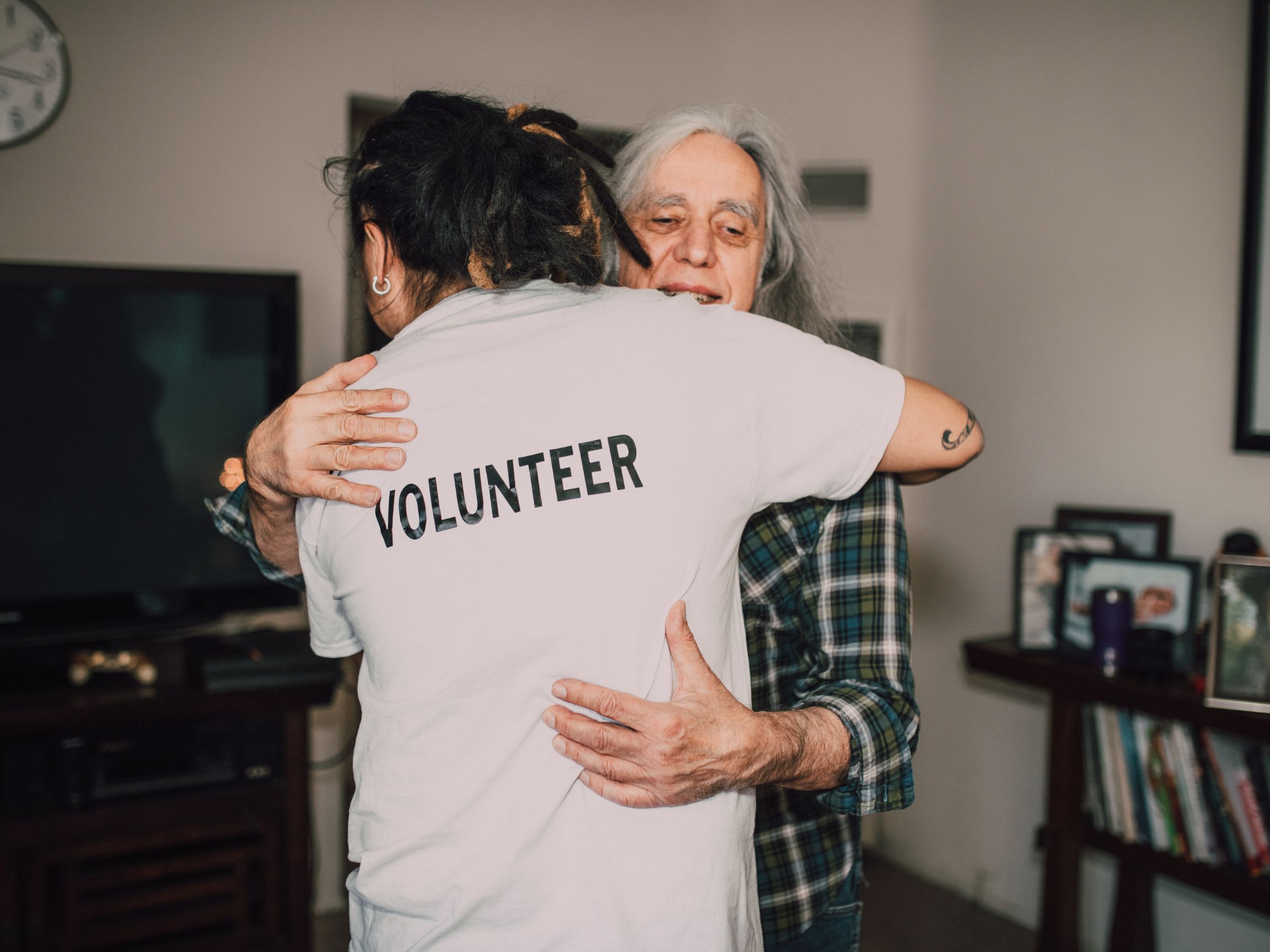
Reference: Pavey, L., Greitemeyer, T., & Sparks, P. (2011). Highlighting relatedness promotes prosocial motives and behavior. Personality and Social Psychology Bulletin
Prosocial behavior is voluntary effort or giving charity to help others.
What best fosters prosocial behavior? Psychologists assert that what motivates people can be one of three basic needs: feeling related to others, being self-competent, or being responsible for one’s own actions. To study which best fosters prosocial behavior, researchers studied university students in three experiments, each isolating these needs.
On different tasks, researchers measured how much the participants felt connected to or had empathic concern for others; sensed their own competency; and felt responsible for their own actions. In one realistic setting, researchers measured participants’ actual donations from money earned by participating in the study.
Results? Feelings of relatedness or connectedness to others increased prosocial motivation the most in all situations. In a real-life situation, when participants felt appreciated and related to the recipient, they donated significantly more money to a charity.
Reach out to others and express appreciation for their efforts. This encourages feelings of relatedness and sharing in community efforts and, thus, enhances giving. You benefit both your and their social relationships and society!
#486 - Early Behaviors & Autism
.jpg)
Written by Robin N. Fatovic
Reference: Miller, M., Sun, S., Iosif, A.-M., Young, G. S., Belding, A., Tubbs, A., & Ozonoff, S. (2021). Repetitive behavior with objects in infants developing autism predicts diagnosis and later social behavior as early as 9 months. Journal of Abnormal Psychology, 130(6), 665–675. https://doi.org/10.1037/abn0000692
How early can professionals detect autism?
California researchers assessed about 150 infants at 6 timepoints between the ages of 9 and 36 months. Each time, they gave the infants objects and observed how they inspected them, and they observed the infants’ social behaviors. They administered psychological tests for cognitive functioning and for autism. At 36 months, the researchers classified the infants into the autism, high-risk non-autism, and low-risk non-autism groups.
Results? At 9 months old, the infants eventually diagnosed with autism showed unusual, repetitive visual inspection behaviors of the objects they looked at, including looking at them from different angles, squinting or blinking repeatedly, or for a prolonged time. These behaviors at 9 months predicted social autism behaviors even at 12 months like lack of eye contact, of sharing emotional responses, and of responding appropriately in social situations.
Identifying these unusual visual inspection behaviors as early as 9 months old is essential, so these children must get early skill training vital to their development, especially in language and social interaction with others. Seek an expert’s evaluation if a child has these or any unusual behaviors.
#485 - Retirement and Cognitive Functioning
.jpg)
Written by Robin N. Fatovic
Reference: Hale, J. M., Bijlsma, M. J., & Lorenti, A. (2020). Does postponing retirement affect cognitive function? A counterfactual experiment to disentangle life course risk factors. https://doi.org/10.4054/mpidr-wp-2020-013
Cognitive decline, or the change in functions such as mental processing, memory, or physical movement, naturally comes as people get older and their brains age. But can a late retirement delay the progression?
Researchers analyzed data from over 20,000 participants in the U.S. Health and Retirement Study. Available data included cognitive testing results, employment status, medical history, and other demographic information.
Results? People who retired from age 67 and above slowed their cognitive decline by 30-34% compared to those who retired younger. Researchers did not find any differences in the results based on age, gender, or occupation. They also found that retirement age does not affect cognitive functioning differently due to depression or medical conditions. However, they found that people with some college education had an even larger, 50% reduction of cognitive decline when retiring later.
Working helps keep our brains active, protecting against cognitive decline. Find meaning in your work and a career that you are passionate about to work longer. Upon retirement get active in volunteer or part-time work using your skills and brain to continue to stimulate your brain health!
#484 - Grief & Growth

Written by Robin N. Fatovic M.S.
Reference: Packman, W., Bussolari, C., Katz, R., Carmack, B. J., & Field, N. P. (2016). Posttraumatic growth following the loss of a pet. OMEGA - Journal of Death and Dying, 75(4), 337–359. https://doi.org/10.1177/003022281666341
“It’s just a pet, get over it.” These are unkind words some hear when grieving the loss of their pet.
Grief over your pet’s death is normal. Like other traumas, health researchers aimed to see if this grief also leads to positive growth in other areas of a person’s life. They surveyed about 300 people who lost their pets.
Results? Participants reported having more grief over their pets on average than another study found for the loss of a human. However, there is Post-traumatic Growth too! 19% of the sample reported feeling closer to loved ones in their lives after bonding over the loss of the pet, and even 17% reported having a pet increased their ability for unconditional love. 12% reported a greater appreciation for life, 7% gained a positive view on all the opportunities life provides, 8% developed a stronger connection with their spiritual beliefs, 12% also recognized their personal strengths, and 15% identified having greater coping ability.
Grieving over the loss of a pet, who often feels like a family member, is difficult. However, there is room to both grieve and grow from the pain!
#483 - Dress for Survival
.jpg)
Vrig, Aldert. (1997). Wearing black clothes: The impact of offenders’ and suspects’ clothing on Impression Formation. Applied Cognitive Psychology
How do our clothes’ color impact a jury, a police officer, or even an observer in deciding if we are a threat? Do people judge you based on stereotypes or even the color of your clothes?
A UK psychology researcher conducted 2 studies: in the first, 90 participants watched a video of a man threatening a participant with a weapon. He wore black in some videos, and light-colored clothes in the other. In another study, 50 participants viewed a mugshot of a woman suspected of committing a crime. Half saw the woman wearing a light-colored shirt, while the other half saw her wearing black. Both groups then answered a questionnaire about the scenario.
Results? In study 1, participants reported that the man wearing black appeared more aggressive and upset them more than the man in light-colored clothes. In study 2, participants believed that the woman was more aggressive when wearing black and thought that she was guilty of the crime significantly more than those who viewed her in light-colored clothes.
Let’s be careful how we judge others depending upon their looks and clothes they wear. How are you judged by the color of your clothes?
#500 - Zoom Fatigue - 2
-(1).jpg)
Written by Vanessa Melendez, B.S.
Reference: Bennett, A. A., Campion, E. D., Keeler, K. R., & Keener, S. K. (2021). Videoconference fatigue? exploring changes in fatigue after videoconference meetings during COVID-19. Journal of Applied Psychology, 106(3), 330–344.
Since Covid-19, workers have returned to in-person settings. However, many still participate in video conferences. Research shows employees prefer remote to in-person meetings as they are more efficient. But they feel fatigue and less camaraderie.
To test factors contributing to video conference fatigue, 55 participants from various industries completed a demographics questionnaire, 9 hourly reaction surveys, and three open-ended questions daily for 5 days. Participants reported how they felt after video conferences, and how they have changed their approach since March 2020 to reduce their videoconference fatigue.
Recommendations? Due to a productivity-fatigue tradeoff, schedule meetings at a low-fatiguing time of day—earlier in the day. Take breaks, stretch, look away from the screen. Enhance feelings of belongingness: encourage brief periods of everyone brainstorming problems or sharing ideas in genuine conversation and humor. This reduces mere obligatory attention. Lastly, unless someone is speaking, have everyone mute their microphones. Permit a quiet environment so all can focus. Hide your own distracting self-screen but view other participants.
Bring people together over long distance, by fostering belonging, and considering fatigue levels! Understand that productivity levels fluctuate and encourage what works best for all!
#002 - Women's intelligence: Gender Equality

Based on Research by Luella Winifred Pressey. Psychology Science Minute written by Juanita Baker, Ph.D.
Even Charles Darwin thought his theory of natural selection supported why women were inferior to men. In the late 1800s scholars measured women’s and men’s brains and determined women’s brains were smaller, thinking that proved their inferiority; and concluded, the reason for women’s being less intelligent....
#393 - TV Shows & Suicide

Research by Bridge, Jeffrey A., Greenhouse, J. B., Ruch, D., Stevens, J., Ackerman, J., Sheftall, A. H., … Campo, J. V. (2019). Association Between the Release of Netflix’s 13 Reasons Why and Suicide Rates in the United States: An Interrupted Time Series Analysis.
Written by Shannon Cantalupo, B.S.
Suicide can be prevented. Help is available. Yet, tragically, when a teen commits suicide, it seems contagious. Others follow. Can TV shows impact a person’s behavior? Could a powerful TV series, “13 Reasons Why” about a female teen deciding to commit suicide lead other teens to suicide?
Psychologists assessed if there was an association between the release of this show and suicide rates. They used The Centers for Disease Control and Prevention’s data specifying cause of death between 2013 and 2017, for U.S. persons ages of 10 – 64 years old.
Results? The suicide, but not homicide rate among individuals 10-17 years old increased during the months immediately following, but primarily for boys, not girls, and not for older individuals...
#395 - Self-Esteem, Social Support & Health

Research by Lee, D. S. & Way, B. M. (2019). Perceived social support and chronic inflammation: The moderating role of self-esteem. Health Psychology, 38(6), 563-566.
Written by Shannon Cantalupo, B.S.
Do you think you have strong social support? Believe others have your back? Be there when in need? When we believe we have social support, we are more likely to have better mental and physical well-being. Does our perception of ourselves, our self-esteem influence our having more social support, thus likely have better health benefits?
Ohio State University psychologists assessed if the relationship between social support and physical health was dependent on an individual’s self-esteem. Over nine hundred middle-aged adults completed questionnaires on perceived social support, self-esteem, sociodemographic information, and health-related behaviors. Researchers collected blood samples of C-Reactive protein at a two-year follow-up to assess participants’ physical health.
Results? Those who perceived they had social support had better health (indicated by protein levels) if they had high self-esteem. But not if they had low self-esteem. These findings supported the research hypothesis. Self-esteem is key to influencing the link between our seeing ourselves as having social support and our having better physical health.
#400 - Emotion Differentiation & Depression

Psychology Science Minute #400
How well can you identify and label your negative emotions? Negative emotion differentiation is the ability to label your feelings precisely, e.g., telling the difference between anger, depression, anxiety, panic, guilt, and shame. Research has indicated that the low ability to identify negative emotions is associated with having negative moods. Is this true for adolescents who are going through numerous life changes?
Psychologists assessed if the low ability to label negative emotions intensifies the relationship between a stressful life event and depression in 233 adolescents. Each participant completed a variety of measures to determine mood, life stressors, ability to differentiate negative emotions, daily hassles, and diagnosis. Participants engaged in a follow-up survey 1.5 years later.
Results? Teens who had a poor ability to label negative emotions showed an increase in depression, reporting more stressful daily events. Instead of seeing their different emotions as a response to life events, they are so over-whelmed by the stressors and become more hopeless. This association between a high Stressful Life Events ratings and depression occurred again at the 1.5-year follow-up.
#409 - Coping with Pandemics: COVID-19

Psychology Science Minute #409
Do you notice that you or the people around you are having difficulty coping during COVID-19?
Psychologist Steven Jay Lynn and doctoral students reviewed research done on prior mass crises to assess which coping interventions were effective. By studying events such as 9/11, natural disasters, and other pandemics, the researchers identified that following the “3 C’s” can improve resiliency.
The first “C” stands for “Control.”If we create short and long-term goals, plan activities, maintain a sleep schedule, limit media exposure, and prepare post-pandemic plans, we gain Control.
#417 - Optimistic Bias and COVID-19
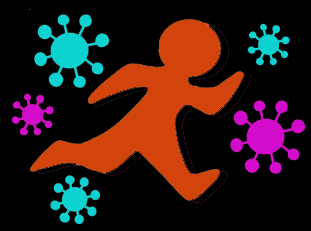
Psychology Science Minute #417
When you see someone else experiencing a tragedy, have you ever thought “that would never happen to me”? Optimistic bias occurs when people think that their level of risk is lower than others.’
Researchers, through an online survey, studied the impact of optimistic bias on preventative COVID-19 behaviors of 290 participants. These preventative behaviors included discussing the risks, taking preventative actions, and intending to seek information about the virus from others.
Results? The researchers found that people who felt more fear and anxiety about the virus tended to engage in more preventative behaviors. However, those with more optimistic bias believed that they were less likely to become infected by the virus. They did not experience as much fear; thus, were less likely to seek information on prevention. And were more at risk.
Do not let optimistic bias delude you about the real risks of COVID-19. Seek science-based information about the virus from reliable sources.
#518 - Empathy Training

Psychology Science Minute #518
Empathy is the ability to understand and share the feelings of another person. Psychologist Carl Rogers considered empathy essential for psychotherapists and everyone’s healthy relationships. How do people become empathetic? Can training increase empathy?
#530 - Benefits of Blue-Light Glasses

Psychology Science Minute #530
Most workplace technology emits blue light that may cause sleep deprivation impacting work performance. If we reduce blue light exposure, will employee sleep improve and impact their work outcomes?
#527 - Reducing Peer Victimization

Psychology Science Minute #527
What can students, teachers, and parents do to reduce student bullying?
Classroom climates that aren’t socially supportive for students are scary. These can...
#528 - Ideal Sleep for Toddlers

Psychology Science Minute #528
Findings suggest sleep quality disturbances may be associated with sharing a room, the temperature of a bedroom, television, noise, and lighting that can impact circadian cycles. For infants and toddlers, which sleep variables can help?
#454 - Let’s Come Together

Psychology Science Minute #454
Across cultures, humans have danced and sung together. Does synchrony, or coordinating in unison with others, bring people together?
New Zealand researchers studied whether synchronized behaviors increase social cooperation. In study 1, some participants performed a series of routine movements with, and others without the sound of a metronome. In study 2, participants in a group read a list of words at tempo, while others read their own list of words in sequence. In study 3, the synchronized group stepped on pedals and lifted their arms in sync. A metronome kept a steady pace and stopped after 20 seconds, with the participants continuing the pace. The other group did the same motions in a sequential manner but only one person was performing the movement at any given time.
Results? Across all studies, synchronous activity coupled with a shared goal promoted social cooperation. There was less cooperation when people engaged in synchrony without a shared goal in mind or when they had a shared goal but engaged in asynchronous behaviors. Researchers suggest that brain activity across people sync during this cooperation to develop a sense of community.
#082 - Peer Pressure Inoculation

Cited Research:
McGuire, W. J. (1961). Resistance to persuasion conferred by active and passive prior refutation of the same and alternative counterarguments. Journal of Abnormal & Social Psychology, Vol. 63, pp. 326-332.
Perry, C. L., Killen, J., Slinkard, L. A., & McAlister, A. L. (1980). Peer teaching and smoking prevention among junior high students. Adolescence, Vol. 15, pp. 277-281.
For more details see:
Have Your Children Had Their Anti-Smoking Shots? "Attitude Inoculation" dramatically reduces teenage smoking rates. American Psychological Association, January 16, 2004
Based on research by William McGuire (1961) and Perry, Cheryl et al., (1980). Psychology Science Minute written by the Psychological Association, adapted by Juanita N. Baker, Ph.D..
Have Your Children Had Their Anti-Smoking Shots? Social psychologist William McGuire asked if it might be possible to give people an “inoculation” to resist attacks on their beliefs by giving them practice at resisting and refuting other’s persuasive arguments.
Smoking seemed like an ideal problem to study because children below the age of 10 almost always report negative attitudes about smoking. However, in the face of peer pressure to be cool, many of these same children become smokers during middle to late adolescence.
Cheryl Perry and colleagues (1980), studied whether high school students could inoculate junior high schools students against smoking by having the younger kids role-play the kind of situations they might actually face with a peer who pressured them to try a cigarette. For example, when a role-playing peer called a student “chicken” for not being willing to try an imaginary cigarette, the student practiced answers such as “I’d be a real chicken if I smoked just to impress you.” The kids inoculated in this way were about half as likely to become smokers, compared to kids in a very similar school who did not receive this special intervention.
Parents and teachers, role-play with children ways to not give in to peer pressure!
#076 - Children & Disasters

References:
For more details and resources see:
Responding to the Needs of Children and Families Following Disaster
Kilmer, R.P., & Gil-Rivas, V. (2010). Responding to the needs of children and families after a disaster: Linkages between unmet needs and caregiver functioning. American Journal of Orthopsychiatry, 80, 135-142.
Kilmer, R.P., Gil-Rivas, V., Tedeschi, R.G., & Calhoun, L.G. (Eds.). (2010). Helping families and communities recover from disaster: Lessons learned from Hurricane Katrina and its aftermath. Washington, D.C.: American Psychological Association.
Based on Research by the American Psychology Association, adapted by Juanita N. Baker, Ph.D..
How much are children impacted by major disasters? Hurricane Katrina in August 2005 caused horrendous loss of life, displacement, property destruction, and financial devastation to Gulf Coast residents. How long do children and their parents need support?
Drs. Howard and Joy Osofsky and colleagues assessed over 7,000 children and adolescents from heavily affected Louisiana parishes. They investigated factors that might impact children’s effectiveness in handling trauma. Half of the children surveyed in the 2005–06 school year had post-traumatic stress and depression symptoms severe enough to meet the cut-off for referral to mental health services. The following year, the number was still high, with 41 percent meeting the criteria. Four years out, the number of children with trauma problems was declining, but still higher than average.
A loved one’s death led to the most serious emotional problems in children, followed by exposure to physical adversity, such as the destruction of homes and schools or the loss of possessions or pets. Living in poverty and having parents with mental health problems also increased a child’s risk.
Let’s not underestimate the time children need to recover from disasters. It may take years; family and community supports must be available for extended time periods. Let’s work together to help children through their trauma.
#077 - Child Anti-Depression Training

References:
Jaycox, L. H., Reivich, K. J., Gillham, J. & Seligman, M. E. P. (1994). Prevention of depressive symptoms in school children. Behaviour Research and Therapy, Vol. 32, pp. 801-816.
Gillham, J. E., Reivich, K. J., Jaycox, L. H., & Seligman, M. E. P. (1995). Prevention of depressive symptoms in school children: Two-year follow up. Psychological Science, Vol. 6, pp. 343-351.
Seligman, M. E. P., Reivich, K., Jaycox, L., & Gillham, J. (1995). The optimistic child. Boston, MA: Houghton Mifflin Co.
Seligman, M. E. P., Schulman, P., DuRubeis, R. J., & Hollen, S. D. (1999). The prevention of depression and anxiety. Prevention and Treatment, 2.
Based on Research by Gillham, Jane E., Reivich, K.J., Jaycox, L.H., & Seligman, M.E.P. (1995). Written by the Psychological Association, adapted by Juanita N. Baker, Ph.D..
Can children experience a major depressive episode? Yes, 20% do before graduating from high school.
Psychologists Jane Gillham, and colleagues attempted to prevent depression by testing whether teaching new thinking patterns protects children from depression. Half of those 5th and 6th grade children who scored ‘at risk’ on depression screening met in small groups weekly for 12 weeks to learn new prevention skills. They focused on the interpersonal problems commonly experienced by children. They learned how to identify their own negative beliefs about themselves, others, and the world, and how to replace their pessimistic beliefs with more optimistic ones. They understood that failures and setbacks are temporary, instead of permanent; as specific to a time and place circumstance, rather than due to any personal defect. The students practiced techniques for coping with parental conflict, enhancing their assertiveness, and relaxing.
Six months after training, children with new skills had fewer depressive symptoms and better classroom behavior than children in the control group. Even two years afterwards, they were half as likely to have moderate to severe symptoms of depression as children in the control group!
If your child has depression, a child psychologist can also provide the same skills for your child in individual therapy.
#078 - Hearing and bionic ears
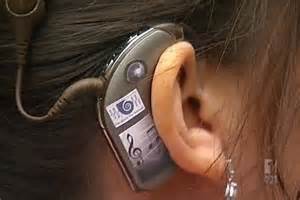
References:
Hermann von Helmholtz. (1877). On the Sensations of Tone as a Physiological Basis for the Theory of Music. London, NY: Longmans, Green, and Co.
Georg von Békésy (1974), “Some Biophysical Experiments from Fifty Years Ago”, Annual Review of Physiology 36: 1–16, doi:10.1146/annurev.ph.36.030174.000245, ISBN 978-0-8243-0336-5, PMID 19143520
S. S. Stevens, Egan, J.P., and Miller, G. A. (1947). Methods of Measuring Speech Spectra. J. Acoust. Soc. Am. 19, 771 (1947). http://dx.doi.org/10.1121/1.1916622
For more details see:
Cochlear Implants: For Many an End to Silence. American Psychological Association, February 19, 2004
Based on Research by Hermann von Helmholtz, 1877. Psychology Science Minute written by Psychological Association, adapted by Juanita N. Baker, Ph.D..
What has psychology contributed to formerly deaf persons now being able to hear?
In the 1860s, Hermann von Helmholtz, one of the founders of psychology, studied the perception of sound and music. Helmholtz theorized about the precise physiological basis of hearing, arguing that receptors in different physical locations on the basilar membrane – a coiled structure imbedded in the inner ear – responds to sound waves of different frequencies. Experiments by Nobel-prize winning physicist Georg von Bèkèsy later confirmed and refined many of von Helmholtz’s ideas. One hundred years later psychophysicist S. S. Stevens helped refine Helmholtz’s ideas showing that our auditory system organizes sounds into 24 distinct channels. Their work allowed physiologists to describe the biological basis of hearing so precisely that researchers were able to create a “bionic ear.”
Pioneering scientists in the 1960s gave a few brave deaf patients cochlear implants. Many Researchers since in sciences ranging from physics and engineering to physiology, computer science, telecommunications and psychology have all played important roles to refine implants and study ways to help persons learn and adjust to their “bionic ears.
By 2010, over 200,000 people worldwide have received cochlear implants, allowing better communication, enjoyment, and safety.
#065 - Longevity Personality Trait

References:
Cited Research
Kern, M.L. & Friedman, H.S. (2008). Do Conscientious Individuals Live Longer? A Quantitative Review. Health Psychology, 27, 505-12.
Friedman, H.S. & Martin, L.R. (2010). The Longevity Project. Surprising Discoveries for Health and long Life from the Landmark Eight-Decade Study. Throndike, NY: Hudson Street Press.
Goodwin, R. D., & Friedman, H. S. (2006). Health status and the Five Factor personality traits in a nationally representative sample. Journal of Health Psychology, 11
Based on Research by Drs. Howard S. Friedman and Leslie R. Martin. Psychology Science Minute written by Juanita N. Baker, Ph.D..
What personality traits do you think lead to living a long life? Extroversion? Optimism? Anxiety? Sociability?
To find out, Drs. Howard Friedman and Leslie Martin wanted to avoid biases in current studies. They used longitudinal data that Louis B. Terman in San Francisco collected starting in 1921 on 1500 11 year-olds who came from similar backgrounds. Selecting only intellectually bright children, Terman’s team followed them for years to learn what traits would predict leadership.
Using Terman’s data 80 years later, Friedman and Martin obtained death certificates in order to compare the personality traits of those who died early with those who died late. Their findings clearly identified the best childhood personality predictor of longevity was conscientiousness, defined as trying to do right, being well organized, truthful, and persistent. Conscientiousness is important in obtaining an education and productive career, as well as engaging in meaningful and active involvement in life activities.
Be conscientious, live longer. Psychology shows us that personality is not set. Gradually, we can work to become more conscientious by deliberately setting small goals, changing our environment to set ourselves up for success, making an effort, and monitoring progress. A bonus is a longer life..
#054 - Classically Conditioned Drug Tolerance

References:
Siegel, S. (1984). Pavlovian conditioning and heroin overdoes: Reports by overdose victims. Bulletin of the Psychonomic Society, 22, 428-430.
Siegel, S., Hinson, R.E., Krank, M.D., & McCully, J. (1982). Heroin “overdose” death: The contribution of drug-associated environmental cues. Science, 216, 436-437.
Further information:
Technical explanation of this research: Respondent Conditioning (Pavlovian Conditioning or Classical Conditioning): is the demonstrated phenomena that the body learns automatically to respond to associated environmental cues in anticipation of a reinforcement (pleasurable event, food, drug).
Based on Research by Shepard Siegel, Ph.D.. Psychology Science Minute written by Juanita N. Baker, Ph.D..
Have you ever wondered why on the news so often a person dies from a drug overdose? Our bodies are constantly trying to achieve homeostasis. When presented with environmental cues (like the bed, syringe, opening the powder paper) that a drug is going to be taken, the body starts physiological counter measures to try to protect itself. However, over a number of occasions the body adjusts, requiring a higher dose to have the same buzz effect, thus causing drug tolerance.
In a psychological experiment, Shepard Siegel and colleagues demonstrated that rats can also become drug tolerant, making these physiological changes when expecting heroin injections repeatedly given in one setting but not in another setting where sugar solution injections were given. Next, all drug-addicted rats received a larger-than-usual dose; half in the usual setting where drugs were given and half where previously only sugar injections were given. Twice as many rats, 64%, died in the sugar setting compared to 32% in the heroin setting!
You know the dangers of addictive drugs, but there is an additional danger. Caution! Your body may not be prepared to handle its usual dose in a new setting, as the old setting cues aren’t there to allow it to prepare for the dose.
#047 - To Catch a Thief: The Psychology of Fingerprints

Cited Research:
Galton, F. (1892). Fingerprints. London: Macmillan & Co.
Galton, F. (1888). Fingerprints. Nature, June 28, pp. 173–177.
Based on Research by Sir Francis Galton. Psychology Science Minute written by American Psychological Association, adapted by Juanita N. Baker, Ph.D.
What were some of the earliest fruitful psychology studies?
In the late 1800s one psychologist, Sir Francis Galton, became obsessed with measurement. In 1880, a physician named Henry Faulds asked for help in documenting some important properties of fingerprints as he suspected but did not know how to demonstrate that no two people have the same fingerprints.
Interested in fingerprints for years, Francis Galton embarked on a series of empirical studies. He was the first to apply statistical methods to the study of human differences. Using statistical probability he demonstrated that no two people have the same fingerprints. In addition, he found a person’s fingerprints remain largely unchanged over the course of a lifetime. Galton also developed the first system for classifying and identifying fingerprints as described in his book, Fingerprints, published 1892.
Law enforcement experts realized that Galton’s discoveries made it possible to use fingerprints as a highly reliable way to identify people, including people who did not wish to be identified! In 1892, an Argentine police officer used fingerprints to prove that a woman had murdered her two sons. By 1905, law enforcement agencies in both England and the U.S. were routinely using fingerprints in criminal investigations.
#034 - Rich in Wealth or Happiness?

Cited Research
American Psychological Association explains more, see: http://www.apa.org/research/action/rich.aspx American Psychological Association, March 26, 2004
Diener, E., & Biswas-Diener, R. (2002). Will money increase subjective well-being? Social Indicators Research, Vol. 57, pp. 119-169.
Kasser, T. (2002). The High Price of Materialism. Cambridge: MIT Press.
Kasser, T, & Ryan, R. M. (1993). A dark side of the American dream: Correlates of financial success as a central life aspiration. Journal of Personality and Social Psychology, 65, 410-422.
Myers, D. (2000). The funds, friends, and faith of happy people. American Psychologist, Vol. 55, pp. 56-67.
Based on Research by Tim Kasser, Ph.D, Edward Diener Ph.D, and David Myers, Ph.D. American Psychological Association, adapted by Juanita N. Baker, ph.D.
Advertisements bombard us with the message implying that money can buy our happiness. It is hard to resist getting caught up in the latest fad, digital gadget, fashion, or car.
Research on how happiness relates to material wealth by psychologists Drs. Edward Diener and David Myers clearly documents that people are happier if they live in wealthy rather than poor nations. However, once individuals have enough money to pay for their basic needs of food, shelter, etc., money does relatively little to improve happiness. Further increases in national economic growth or personal income have little effect on changes in the personal happiness of citizens.
Psychological research shows that people who “buy into” the messages of consumerism report lower personal well-being. According to research by psychologist Tim Kasser, people who find money, image, and popularity important often feel less satisfied with life. They have fewer pleasant emotions and are more prone to negative ones. In addition to reducing personal happiness, research suggests that it may also promote behaviors that hurt people’s social relationships. This appears to ring true across cultures.
So striving for what is meaningful will more likely lead us to a fulfilled life.
#035 - Elderly Drivers’ Safety
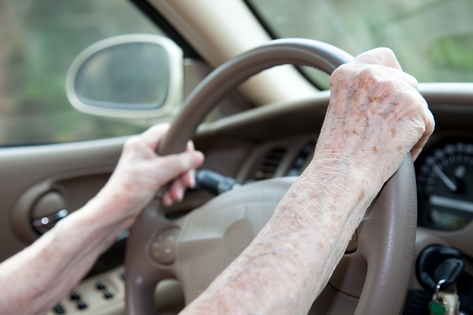
Reference
Rolison, J.J., Hewson, P.J., Hellier, E. and Poppy Husband. (2012). Risk of Fatal Injury in Older Adult Drivers, Passengers, and Pedestrians. J Amer Geriatric Society, 1-5
Based on Research by Jonathon Rolison, Ph.D. Psychology Science Minute written by Fabian Consbruck.
Have you been frustrated or impatient when driving behind an elderly driver? A recent UK study by Jonathon Rolison and colleagues reviewed accident and fatality data from the past 20 years. They concluded that the elderly generation is no more dangerous on the road when compared to young drivers in their 20’s.
Out of 100 million driving trips, 13 ended in a fatality for those less than 29 years of age. This is not significantly different to those over the age of 70, where 14 trips out of 100 million ended in a fatality. In 2009, drivers over 70 accounted for only 10% of the total deaths that year, whereas young drivers accounted for 25%. These are important findings in light of the baby boomers entering retirement and the need to focus on keeping them and our roads safe.
The researchers also looked at pedestrian deaths. Unfortunately, older adults are 5 times more at risk of being struck by a vehicle and killed than younger adults. The elderly made up 37% of all pedestrian deaths, far more than other age groups.
So when driving, let’s be more tolerant of elderly drivers and no matter what age, watch out more for bicyclists and pedestrians!
#031 - Playfulness with partners

Refereed Journal:
Chick, G., Yarnal, C., & Purrington, A (2012). Play and mate preference: Testing the signal theory of adult playfulness. American Journal of Play, 4 (4), p. 407-440.
For more discussion of this research, see:
Penn State (2012, August 3). Playfulness may help adults attract mates, study finds.
ScienceDaily. Retrieved August 28, 2012, from http://www.sciencedaily.com/releases/2012/08/120803111151.htm
Segal, J., Smith, M., Jaffe, J. (2012, June.) Playful communication in relationship: The power of laughter, humor, and play. Retrieved from http://www.helpguide.org/mental/eq7_playful_communication.htm
Bawed on Research by Garry Chick, Ph.D.. Psychology Science Minute written by Latasha L. Nadasdi, B.A.
Have you or your friends ever complained about immature dates or being frustrated by games played in romantic relationships? Many people seem to be preoccupied with looking for maturity in a partner. However, a recent study shows that playfulness may be the key to finding and maintaining a healthy relationship.
A woman’s playfulness may signal to men that she is youthful and fertile. A man’s playfulness may show women that he is less aggressive. A less aggressive man is less threatening to a mother and her children. Dr. Garry Chick and colleagues asked people to rank the traits they find most desirable in a romantic partner. For a potential mate, the most desirable qualities they chose were ‘kind and understanding,’ ‘sense of humor’, ‘fun loving’, and ‘playful.’
Playful qualities can be helpful in any partnership in maintaining happy relationships. When used effectively, playful communication can help facilitate connection with your partner, smooth over differences, overcome setbacks and problems, and put fights into perspective. Experts suggest that partners avoid using humor to cover up their angry emotions. And be sure you both are in on the joke.
So engage in playful communication. Let go of your shyness. And be more spontaneous in favor of a happy, healthy partnership.
#025 - Exercise & Depression

Psychology Science Minute #25
What have psychologists found to be one of the most powerful treatments for depression?
#027 - Elephants have insightful thought… proves they are intelligent too!

Reference:
Foerder P, Galloway M, Barthel T, Moore DE III, Reiss D (2011) Insightful Problem Solving in an Asian Elephant. PLoS ONE 6(8): e23251. doi:10.1371/journal.pone.0023251
Based on Reasearch by Preston Foerder, Ph.D.. Psychology Science Minute written by Sarah W. Arnett, Psy.D.
Psychology Science Minute brought to you by the School of Psychology at Florida Institute of Technology, I’m Dr. Sarah Arnett.
When was the last time you had an “aha” moment, when you knew exactly what to do? This experience is not limited to humans. Scientists show chimps and even crows solve problems without prior trial and error. However, during experiments scientists were unable to show that elephants had this ability. This is puzzling when elephants are at the top of the brainiest creatures list.
The problem may have been with those highly intelligent beings devising the tests, not the elephants. Scientists first used similar tests they had used on chimps involving sticks to get food out of reach. The elephants used their trunks to find and pick up food, but did not try to obtain the food when holding the sticks. Psychologist Preston Foerder experienced his own “aha” moment. Elephants used sticks for everything except getting food because when holding a stick the trunk lost its ability to locate food through smell and touch. It is like being blindfolded, then being asked to hold a stick to find food. So instead he gave the elephants strong cubes they could climb on. Using insightful thought, the elephant moved and stacked the cubes to climb on to reach the food with their trunk. Thus the problem was not with the elephants but with the humans testing them!
Just because we can’t see a solution right away doesn’t mean there isn’t one!
#024 - Bring More Love Into Your Partner Relationship

References
LeCroy, Craig W., Carrol, Pam, & Nelson-Becker, Holly. (1989). An Experimental Evaluation Of The Caring Days Technique For Marital Enrichment. Family Relations, 38, 1, pp. 15-18.
Stuart, Richard B. (1980). Helping couples change: A social learning approach to marital therapy. New York: Guilford Press.
Stuart, R. B. (2004). Helping couples change: A social learning approach to marital therapy. Paperback edition. New York: Guilford Press.
Other caring ideas to suggest:
"invite me out on a date"
"suggest we do something together that you think we’d both like"
"tell me something you appreciate that I did for you"
Based on Research by Richard Stuart, Ph.D.. Psychology Science Minute written by Juanita N. Baker, Ph.D.
Psychology Science Minute brought to you by the School of Psychology at Florida Institute of Technology, I’m Dr. Sarah Arnett.
Has your marriage fallen into a routine, and lost that spark from when you first met? How to bring the love and caring back?
Based on the principle that people tend to respond positively to those who act positively towards them, psychologist Richard Stuart devised a technique called “The Caring Days” to encourage this process of change in couples experiencing marital distress. First, partners each make a list of behaviors that if their partner did for them would make them feel cared for (small, specific, positive acts done daily, not about a recent conflict). Both agree to 18 items, such as “take me out on a date,” “encourage my ambitions,” or “give me a compliment.” Stuart then asked them to choose 5 behaviors from the list daily for two weeks and do them whether or not their partner did any. Performing these caring behaviors, even if they do not feel loving in the beginning, will gradually have a positive effect on the relationship. Charting kind acts serves as a reminder.
Craig LeCroy and colleagues verified the effectiveness of Caring Days to enhance relationship satisfaction with a controlled experiment using average married folks. Those using Caring Days showed more positive changes compared with the control group.
So when things are distant at home take the time to reconnect by having Caring Days! Try it!
That’s your Florida Tech Psychology Science Minute. I’m Dr. Sarah Arnett.
#022 - Early Childhood Education

References
Reynolds, A.J., Temple, J.A., Ou, S., Arteaga, I.A. B.A.B. (2011). School-Based Early Childhood Education and Age-28 Well-Being: Effects by Timing, Dosage, and Subgroups. Science DOI: 10.1126/science.1203618, retrieved from http://www.sciencemag.org/content/early/2011/06/08/science.1203618
Arthur J. Reynolds, Judy A. Temple, Barry A. B. White, Suh-Ruu Ou, Dylan L. Robertson. Age 26 Cost-Benefit Analysis of the Child-Parent Center Early Education Program. Child Development, 2011; 82 (1): 379 DOI: 10.1111/j.1467-8624.2010.01563.x
Based on Research by Arthur J. Reynolds, Ph.D.. Psychology Science Minute written by Juanita N. Baker, Ph.D.
Psychology Science Minute brought to you by the School of Psychology at Florida Institute of Technology, I’m Dr. Sarah Arnett.
Is it wise to fund early childhood education? What is the evidence?
Dr. Arthur Reynolds and his team carried out a controlled long-term study of the Chicago Public Schools’ federally funded Child Parent Centers’ preschool enrichment program that focused on developing early language skills and self-confidence. Early education provided services for low-income mostly African American families beginning at age three in 20 school sites. The kindergarten and school-age program had smaller classes, teacher aides, and instructional and family support services that were provided up to third grade.
Follow-up interviews collected data from many sources for 26 years. These children were compared to a group of about 500 similar children who didn’t take part in the early education but participated in the usual educational interventions for disadvantaged youths in Chicago schools.
Results showed high-quality early childhood programs can contribute to significantly higher educational attainment and income, and less substance abuse, smoking, depression, and felony arrests. Males at higher levels of risk experienced the highest economic benefits
These outcomes are beneficial for individuals as well as society, and the economic payback exceeds the program costs (increased tax revenues, less expense related to crime and savings on child welfare). Our states and nation can choose wisely to fund preschool and supplementary parent programs.
That’s your Florida Tech Psychology Science Minute. I’m Dr. Sarah Arnett.
#019 - Personality, Empathy, and Satisfaction in Relationships

Psychology Science Minute #19
Psychology research has often focused on negative behaviors and emotions to understand and explain conflict and distress in intimate relationships. However, wouldn't you want to know what makes for a satisfying relationship?
#020 - Caregivers Need Care

Psychology Science Minute #20
Are you caring for a relative who has Alzheimer's or another disabling disease? You're not alone.
#017 - Key to Racial Integration

General References:
Aronson, E. (2010). Not by Chance Alone: My Life as a Social Psychologist. Basic Books.
Aronson, E. & Goode, E. (1980). Training teachers to implement jigsaw learning: A manual for teachers. In S. Sharan, Hare, P. , Webb, S., Hertz-Lazarowitz, R. (Eds.). Cooperation in Education. Provo, UT: Brigham Young University Press.
Aronson, Elliot, and Osherow, Neal. Applied Social Psychology Annual, 1980 Vol 1, 1980, 163-196.
Aronson, E., Blaney, N., Stephan, C., Sikes, J. and Snappen, N. (1978). The Jigsaw Classroom. Beverly Hills, CA: Sage Publications.
Dean, Ben, Ph.D. Interview with Elliot Aronson from http://www.mentorcoach.com/aronson/
Based on Research by Elliot Aronson, Ph.D. Psychology Science Minute written by Juanita N. Baker, Ph.D.
Psychology Science Minute brought to you by the School of Psychology at Florida Institute of Technology, I’m Dr. Sarah Arnett.
When Elliot Aronson was 9 years old in New York City, he was beat up repeatedly as a Jewish boy walking to school through different ethnic neighborhoods. One day nursing a bloody lip, he thought, “Why do they hate me so when they don’t even know me!”
Aronson, became a social psychologist when he learned that psychology asks and answers this kind of real world question. In Texas in 1963 schools were integrating, fights between black and white students broke out. Some schools closed. Dr. Aronson sent his grad team into classrooms. They observed children’s interactions were very competitive, unfairly setting black students up for failure. They designed an alternative teaching style putting black and white students together on teams. For a team to be successful, all had to work well together…then their team shined. Within 6 weeks fights on the playground reduced, relations between children improved and integration proceeded smoothly there.
How can we use this research? We humans too often treat others who are different with prejudice…not just race, but gender, religion, etc. How can you encourage joint cooperation on common goals, bringing diverse or opposing people together?
That’s your Florida Tech Psychology Science Minute. I’m Dr. Sarah Arnett.
#009 - Parent Praise

Psychology Science Minute #009
Your child races home from school with a beaming smile and runs into the kitchen to show you their report card. Of course you want to encourage your child to continue to do well in school, but is it better to say "You must be so smart!" praising their intelligence, or praising their effort, saying "You must have worked very hard!"?
#010 - Making Highways Safer

References:
Allen, M. J. (1970). Vision and highway safety. Philadelphia: Chilton.
Decade of Behavior. (2000). Behavior Matters: How Research Improves our Lives. www.decadeofbehavior.org downloaded 2008, Keren Yairi, Decade of Behavior, 750 First Street NE, Washington, DC 20002-4242, dob@apa.org
Garvey, Philip M., Pietrucha, M. T., & Meeker, D. (1997). Effects of font and capitalization on legibility of guide signs. Transportation Research Record No. 1605, 73-79.
Meeker, Donald T., Pietrucha, M. T., and Garvey, P. M. (2010). Proportion-Based Format System for Freeway and Expressway Guide Signs. Journal of Transportation Engineering, 136, 267.
Based on Research by Philip Garvey, Ph.D. Psychology Science Minute written by Juanita N. Baker, Ph.D.
Psychology Science Minute brought to you by the School of Psychology at Florida Institute of Technology, I’m Dr. Sarah Arnett.
Have you ever been driving on an interstate to a large city where there are many signs with Exits A and B and you feel stressed concentrating on the driving while trying to read the signs and thus not missing your exit? Researchers studying the psychology of visual perception in the field of human factors and ergonomics have worked on improving the safety of signs to make our world safer for us.
Traditionally signs have been made with a bold font to try to catch our attention. Through research, Dr. Philip Garvey and his colleagues discovered that some fonts have problems with irradiation: when a letter’s line is so bright that it visually bleeds into the character’s open spaces, creating a blobbing effect that reduces legibility.
After research on visual perception of different fonts, human factors researchers created a new font that they named “Clearview.” The new font has bigger interior spaces for each letter, decreasing the blurring effect and making words easier to read. In fact, researchers found that Clearview signs gave drivers a 16% increase in recognition distance, allowing drivers more time to read signs and react appropriately. If the Department of Transportation adopts the Clearview font, highways can be safer and accident rates could decrease.
Just another example of how psychologists are paving the road toward a safer tomorrow. Drive safely!
That’s your Florida Tech Psychology Science Minute. I’m Dr. Sarah Arnett.
#005 - Hindsight Bias

References:
Meyers, D. (2007). Psychology eighth edition. Worth Publishers. New York: New York
Gilbert, D. T., Pelham, B.W., & Krull, D.S. (2003). The psychology of good ideas. Psychology Inquiry, 14, 258-260.
Fischhoff, B., Slovic, P., & Lichtenstein, S. (1977). Knowing with certainty: The appropriateness of extreme confidence. Journal of Experimental Psychology: Human Perception and Performance, 3, 552-564.
Definitions:
Hindsight bias is the inclination to see events that have occurred as being more predictable than they were before they took place. Hindsight bias has been demonstrated experimentally in a variety of settings, including politics, games and medicine.
Based on Research by Latane, B., & Darley, J.. Psychology Science Minute written by Sarah Arnett, Psy.D.
Psychology Science Minute brought to you by the School of Psychology at Florida Institute of Technology, I’m Dr. Sarah Arnett
Is psychology a science or is it merely documenting the obvious? Daniel Gilbert and colleagues note that “Good ideas in psychology usually have an oddly familiar quality and the moment we encounter them we feel certain that we knew that all along.”
However, psychologists at the Oregon Research Institute have delineated the “I knew it all along phenomenon” as the hindsight bias. Can we always trust our common sense and go with our gut? Psychological research has shown that common sense can describe what has happened much more easily than it can predict what will happen. In addition, our tendency as humans is to be over confident in ourselves and what we know. When you combine these two psychological phenomena it can lead us to overestimate our intuition. And sometimes studies show “common sense” is just not true.
Does this mean that we shouldn’t listen to Grandma’s words of wisdom and advice on life? Of course there is a lot of wisdom in the power of observation but the point to remember is to review the latest research and always be open to alternative hypotheses and realities. Maintain a scientific mind to sift out facts from illusion.
That’s your Florida Tech Psychology Science Minute, I’m Dr. Sarah Arnett.
#007 - Obedience to authority

General References:
Milgram, S. (1974). Obedience to Authority: An Experimental View. New York: Harper & Row.
Travis, Carol & Aronson, Elliot. (2007). Mistakes were made (but not by me). Why we justify foolish beliefs, bad decisions, and hurtful acts. Orlando, FL: Harcourt, Inc.
Peer-reviewed Reference:
Milgram, Stanley. (1963). Behavioral Study of obedience. The Journal of Abnormal and Social Psychology. Vol 67(4), Oct, pp. 371-378.
Based on Research by Stanley Milgram, Ph.D. Psychology Science Minute written by Sarah Arnett, Psy.D.
Psychology Science Minute brought to you by the School of Psychology at Florida Institute of Technology, I’m Dr. Sarah Arnett
Just after the start of the trial of Nazi war criminal Adolf Eichmann, Dr. Stanley Millgram began his quest to answer the question: What is it that leads some to violate the most basic of human morals?
Milgram studied the impact authority has on obedience. He recruited participants to serve as “teachers” who were led to believe they were administering increasingly lethal shocks of electricity to “learners” who failed to answer questions correctly. In reality, the learners were acting and the shocks were not real. Shock levels were labeled as “light shock” all the way up to “danger: severe shock, and XXX.” In response to the shock, the pretending learner would increase in verbal responses from slight complaints to more intense cries for help complaining of heart trouble. When a teacher refused to continue, they were pressured by an experimenter to go on.
Milgram assumed that the majority of teachers would refuse to punish “learners” with seemingly lethal levels of electric shocks. To Milgram’s surprise the majority (65%) of “teachers” administered shocks to the maximum voltage level! Why? Milgram concluded that we justify ourselves because we think “the authority wouldn’t make me do wrong things,” we fear consequences of going against others, and we feel pressure to appear cooperative even when acting opposite to our own values. Unfortunately, those in authority do not always do the right thing. So remember, think before you follow!
That’s your Florida Tech Psychology Science Minute. I’m Dr. Sarah Arnett.
#003 - Pets Reduce Loneliness

Based on Research by Allen R. McConnell, Ph.D. Psychology Science Minute written by Sarah Arnett, Psy.D.
It was just one of those days, lost your keys, your boyfriend broke up with you over the phone and none of your friends are available to talk. So you go home alone to be greeted lovingly by “Maximus Dogimus,” your black Labrador retriever. If he really is a loving member of your family does he provide you with some of the same benefits as a loving human family member?
#004 - Bystander Effect

General resource:
Gilovich, T., Keltner, D., & Nisbett, R. (2006). Social Psychology. W.W. Norton & Company.
Lilienfeld, S., Lynn, S., Ruscio, J., & Beyerstein, B. (2010). 50 Great Myths of Popular Psychology: Shattering widespread misconceptions about human behavior. London, United Kingdom: Wiley-Blackwell.
Specific:
What really happened to Kitty Genovese:
The Psych Files, Episode 36: Kitty Genovese: What Really Happened?
Latane, B., & Darley, J. (1970). The unresponsive bystander: Why doesn’t he help? New York: Appleton-Century-Crofts.
Latane, B., & Darley, J. (1968). Group inhibition of bystander intervention in emergencies.
Based on Research by Baruch Fischhoff, Ph.D. Psychology Science Minute written by Sarah Arnett, Psy.D.
Psychology Science Minute brought to you by the School of Psychology at Florida Institute of Technology, I’m Dr. Sarah Arnett.
It was initially reported in 1964 that Kitty Genovese repeatedly screamed as she was attacked, then murdered by Winston Mosely in front of her apartment building in New York but it was reported that none of the 38 witnesses came to her aid. Although upon later investigation, the number of witnesses and their inactivity may not be entirely true, it shocked the nation and it led to much social psychology research on the bystander effect and the likelihood of people intervening in an emergency.
When others are around, people are less likely to intervene due to a diffusion of responsibility. Each person present at an emergency may assume others will intervene leaving others to accept less responsibility for helping. Studies have shown that in emergency situations 75% of people who helped were alone compared to 53 % who were in the presence of others. Act first. Don’t wait for others to intervene.
So how can you increase your chances of getting help if you are ever in danger? First, make your need clear. Second, select a specific person to help you. This will overcome the major obstacles that prevent others from helping.
That’s your Florida Tech Psychology Science Minute. I’m Dr. Sarah Arnett.
#001 - Happiness

Psychology Science Minute #1
Based on research by: Ed Deiner, Ph.D. Psychology Science Minute written by: Dr. Sarah Arnett
Hello there and welcome to the School of Psychology’s very first Psychology Science Minute! We will be posting our weekly Minutes here as heard on WFIT. You can listen to us, read our Minutes and even share us on Facebook. We hope that you enjoy this educational experience and ask that you share your feedback with us as well as offer future suggestions. Please enjoy our first blog about hindsight bias.
Psychology Science Minute brought to you by the School of Psychology at Florida Institute of Technology, I’m Dr. Sarah Arnett, Psy.D.
“Each morning when I open my eyes I say to myself: I, not events, have the power to make me happy or unhappy today. I can choose which it shall be. Yesterday is dead, tomorrow hasn’t arrived yet. I have just one day, today, and I’m going to be happy in it.” Groucho Marx
Is there merit in the words of Groucho Marx? Well according to research the answer is “yes.” Dr. Ed Deiner a leading researcher on happiness has found that happier people are not only healthier but live longer. Science suggests that happiness leads to more resilience and better performance at work as well.
Are people born happy or can you learn to find the happiness you seek in your life? YES! We can take action to be happier. Deiner has found that there are factors associated with increased feelings of happiness. The wider and deeper our relationships with others are, the happier we feel. Research shows that friendships have a larger impact on happiness than a person’s income. Believe in something bigger than yourself and have goals connected to your long term values. Have meaning and purpose in your life. Keep a gratitude diary: each day write down 3-5 things for which you are grateful.
That’s your Florida Tech Psychology Science Minute. I’m Dr. Sarah Arnett.
#397 - Sleep Trends

Psychology Science Minute #397
Lack of sleep is an important National Health concern. What factors likely contribute to our getting inadequate sleep, despite evidence that good sleep hygiene has numerous physical and psychological benefits?
Researchers used the National Health Interview Survey 2004-2017 data to assess self-reported sleep duration in this longitudinal study which included almost 400,000 participants. Researchers assessed average sleep duration and personal factor trends. Sleep duration was measured: as short (less than six hours), adequate (seven to eight hours) or long (more than nine hours).
Results? Sleep was stable from 2004-2012. But from 2013-2017, perhaps because of economic downturn and technology there was an increase in individuals reporting short sleep. Yet, these reports of changes (by 10%) were for Hispanic and African Americans but not for Non-Hispanic whites. Inadequate sleep may lead to poor health and add stress, and thus create less tolerance, impact work performance, and exacerbate racial and ethnic trends and tensions.
Adequate sleep is essential for our health. Reduce blue-light, put...
#396 - Parent’s Language & Children

Psychology Science Minute #396
Since early life experiences are crucial for a child’s development, how do the language skills and actions of parents affect children’s language?
British psychologists researched how, in the home, the impact of the quantity and quality of adult speech, is associated with children’s ability to use different words and their cognitive ability. They assessed if positive and critical parenting is associated with children’s behavior.
They evaluated 105 families with 2-4 years old children by giving parents questions, self-report surveys and audio-recorders to record home conversations. They counted the number of words a child heard at home. Additionally, they identified the parents’ cognitive ability and positive and critical parenting behaviors.
Results? The number of words spoken and vocabulary diversity within a child’s home was positively associated with a child’s cognitive ability and language facility. Parents who listened to their child, responded to their child’s needs, and encouraged exploring and expression, had children who showed more on-task and less contrary behaviors...
#402 - Attachment & Involvement

Psychology Science Minute #402
How do busy fathers interact with their child to fulfill their child’s needs and help them feel loved and attached emotionally?
Psychologists studied a father’s involvement and child’s attachment and feeling safe. They measured how father’s play or care giving interactions impacted the child’s attachment on work days vs. non-workdays.
Eighty fathers filled a time diary to indicate their involvement with their three-year-old child. Reviewing a video of the father-child interaction, researchers rated the child/fathers’ attachment.
Results? On workdays, fathers who engaged in care giving, children had more secure attachments than with fathers who just engaged in play. On non-workdays fathers who engaged in play had more secure attachments. Perhaps workdays fathers responded to their child’s needs through care giving, established closer attachment. However, fathers who tried to play with their child were less responsive to the child’s needs in the restricted time they had together.
#401 - Neighbors & Serious Mental Illness

Psychology Science Minute #401
Do those who have a Serious Mental Illness (such as schizophrenia, severe bipolar disorder, or severe depression) feel rejected, socially isolated and lonely? Do they know their neighbors and feel they belong in their neighborhood?
Psychologists compared 230 persons with serious mental illness from an outpatient mental health center with 300 persons without serious mental illness examining their degree of feeling lonely and sense of community or isolation in their neighborhoods.
Those with Serious Mental Illness did report weaker neighborly relations and a higher level of loneliness with less sense of community. However, for both groups, regardless of the number of neighbors they felt close to, the higher the quality of the relationships, the less lonely and more sense of community they had.
Let’s all learn skills how to initiate brief, friendly conversations with everyone. Be neighborly! Reach out to your neighbors, especially those with mental as well as physical disabilities. Get to know each other! Even if you remain familiar strangers, give friendly greetings. You can decrease other’s feeling of loneliness! Showing...
#405 - Police Contact & Adolescent Health

Psychology Science Minute #405
To reduce criminal activity, police use proactive strategies to stop and search about 25% of the urban community, yet they do not arrest the great majority of these. What are the consequences to adolescents who experience or witness this aggressive, unfounded tactic?
McFarland and colleagues evaluated the association between an adolescent’s experiencing or witnessing stops by the police and adverse health consequences.
They used data from the Fragile Families and Child Wellbeing longitudinal Survey of families in 20 large urban areas for 3500 children over their first 15 years. These data identified personal police contact, witnessing others being stopped, and adolescent’s health self-report.
Results? Adolescents who recounted personal or witnessing contact with police reported lower levels of health and higher perceived injustice than their non-exposed counterparts. Furthermore, racial minority adolescents experiencing police contact reported lower levels of health than Caucasian adolescents having same amount of police contact.
#404 - Dishonesty Impact on Empathy

Psychology Science Minute #404
We are taught, “honesty is the best policy,” but how does our being dishonest impact us and our relationships with others?
To effectively work and negotiate with others, we must understand others’ communications, read their emotions, and empathize accurately to assess their needs. However, dishonesty in a relationship may distance us and interferes with accurately assessing others’ thoughts and emotions.
Organizational psychologists studied if people engage in dishonest behavior,does this lead to their being less able to detect another’s emotions and thus have less empathy? Researchers completed eight studies with over 2500 participants using a dice game, storytelling, cheating to earn more money, and giving bonuses to those cheating.To explain this relationship, they assessed the relationship between dishonest behavior and empathic accuracy.
Results? Psychologists found a relationship between dishonest behavior and reduced empathic accuracy and a decrease in identifying themselves as being in close relationships. Justifying dishonesty and concern for being detected may distract us from focusing...
#403 - Emotion & Group’s Influence

Psychology Science Minute #403
Have you ever noticed that when people around you are happy, you are happy? How do others around us influence our emotions and beliefs?
Psychologists examined how Stanford American college students knowing the group’s emotions influenced their own feelings. They compared differences in laboratory and real-life situations on Twitter between a person’s emotional response in groups shown low threat photos (of protests against the U.S.) to high threat (of Americans committing immoral acts).
Results? No differences between laboratory or natural settings. Only when knowing the group’s emotions (weak or strong), did participants evidently check other’s reactions and adjust their emotions accordingly. In weaker emotional situations they expressed less emotion. When they knew the group supported their strong emotions, they felt even stronger.
Then, do other’s emotions influence our support for political candidates, action, and policies? Other’s strong or even weak emotions influence us! Beware of your tendency to change your emotions to be like others around you. We have a choice: allow ourselves to...
#410 - Stress & Yoga

Psychology Science Minute #410
Did you know that both your mind and body feel the effects of stress? Accumulating research indicates that yoga practices reduce stress and have other benefits.
Southern California University of Health Sciences Psychologist Laura Schmalzland colleagues examined what aspects of yoga have an impact on stress levels and sustained attention.
Researchers assigned 40 young adults who had never attended yoga classes to an 8 weeks class. Half of the participants focused more on the movements of the practice and half on their breathing during yoga. Before and after their practice, researchers measured their perceived stress levels and levels of attention using a computerized program. They also measured their cortisol levels, as the body tends to release this hormone when stressed.
Results? Participants in both groups reported feeling less stress after 8 weeks, and their bodies reported the same, having significantly lower cortisol levels. However, participants only in the breath-focused group showed significant increased sustained attention.
#408 - Healthcare Workers & COVID-19

Psychology Science Minute #408
When news of COVID-19 broke, a worry and anxiety flooded the country. Imagine the distress of health care workers reporting to work to save those suffering from COVID-19. How is the mental health of these workers specifically affected due to COVID-19?
Chinese researchers investigated the mental health outcomes of health care workers working during COVID-19 in China. Over 1,2000 workers from 34 hospitals participated in this study. Each participant completed questionnaires assessing depression, anxiety, insomnia, and distress.
Results? More than half of the participants reported feelings of distress. Fifty percent reported depression, 44% anxiety, and 34% insomnia. Furthermore, nurses, women, frontline workers, and those working within Wuhan, China reported a more severe degree of symptoms.
Healthcare workers! If you are starting to feel distressed, depressed, or anxious, refocus on the present moment. Think how important the work you are doing is. Breathe deeply. RELAX. Take a “Minute Vacation.” Imagine details of your favorite place to enjoy. Rely on your social support between shifts. Consult mental health...
#407 - COVID-19 & Children

Psychology Science Minute #407
COVID-19 has resulted in many changes for children and adults alike. Children used to attend school or extracurricular activities where they could see friends and socialize. Now, children stay home. How does this affect our young students? Does it produce feelings of depression and anxiety? Chinese Psychologists researched depressive and anxiety symptoms among Chinese students in Wuhan and Huangshi cities, in Hubei province, China during COVID-19.
Over 1,700 students participated in an online survey, following a month of home confinement. The survey included questions regarding worry over COVID-19, depression, and anxiety symptoms.
Results? 23 percent of students reported experiencing depressive symptoms, and 19 percent of students indicated having anxiety symptoms. The results were higher for those students living in Wuhan, the epicenter for the Covid-19 pandemic and denser city, than Huangshi. Additionally, less outdoor activity and less social interaction were associated with greater symptoms of depression.
Caretakers! This is an unprecedented stress fultime for all of us. Check on the children! Go for a walk, call a friend...
#406 - Traumatic Stress & COVID-19

Psychology Science Minute #406
How are you coping with the COVID-19 pandemic? The significant stress, trauma, and changes in society signal uncertain futures, financial impacts, and fears coping with illness for self and loved ones.
What effects will there be on our mental health? In the 2020 Psychological Trauma Journal, psychologists reviewing prior research after major traumas suggest that mental health systems will need to change their ways of providing diagnostics, prevention, public outreach, communication, and work with medical staff and providers in order to address the upcoming influx of mental health problems.
Mental health systems will need a more central role in educating the public, officials, and frontline workers in dealing with trauma and stress. To make mental health care accessible to all who need it, there is a need to train workers outside mental health, reduce the stigma and barriers associated with getting mental health care,and educate the general public on the skills to handle stress and trauma. With quick publication and dissemination, mental health professionals have begun education and research on ways to treat the COVID-19...
#413 - Goals & Audience

Psychology Science Minute #413
Do you have difficulty motivating yourself to stick to a goal you’ve set? Have you ever challenged someone to complete a goal, then realized you were more committed to obtaining that goal than they were?! Psychologists examined whether we are more committed to a goal if we reveal it to a person of higher or equal status.
Psychologists completed four studies with 890 participants using both surveys and experimental sessions to determine how individuals perceived the relative status of an audience and whether this knowledge influenced their commitment to a goal.
The results from all studies were consistent. When participants shared their goals with people they perceived as having higher status, they were more committed to the goal, and more likely to attain their goal. The higher perceived status of the goal audience makes more impact, than someone of similar status (e.g., peer to peer).
Set high goals, then share your goal with someone of higher status, such as a parent, supervisor, or mentor as you are more likely be committed and attain this goal! Supervisors and mentors are also more likely to encourage and...
#412 - Lifetime Partner Selection

Psychology Science Minute #412
How do we pick our lifetime partner? What traits are more desirable than others? Do cultures differ?
UK Psychologists studied whether Eastern and Western cultures prioritize traits similarly. Researchers compared those in “Eastern” with “Western” cultures, totaling 2,500 participants from 59 countries.
To reveal which traits participants valued, researchers had each participant place money (when they had little money, moderate, and large amounts) on different desired traits they wished for a “long-term” partner in order to compare and identify highest priorities.
Results? When participants had less money, thus chose the essential traits, men and women gave the highest ratings to kindness and physical attractiveness, indicating these were most important for reproductive success. However, only women and Eastern men gave the highest ratings to “good financial prospects.”Western men and women found humor essential whereas Eastern men and women found humor a luxury (high budget only). Western women gave high priority to partner’s wanting children equally in high and low...
#411 - Relationships & Self-Esteem

Research by Harris, M. A., & Orth, U. (2019). The link between self-esteem and social relationships: A meta-analysis of longitudinal studies. Journal of Personality and Social Psychology: Personality Processes and Individual Differences, 1-19. http://dx.doi.org/10.1037/pspp0000265
Written by Shannon Cantalupo, M.S.
Does having high self-esteem produce good social relationships? Or does having good social relationships increase our self-esteem?Which way is it?
Psychologists explored the interaction between self-esteem and relationships through ameta-analysis of 80 previous studies. They used longitudinal data to analyze the effect of self-esteem on social relationships and the impact of relationships on self-esteem. Thirty samples were from the U.S. and 18 came from Canada, Australia, Europe, China, Korea, and Russia.
Results? Self-esteem does lead to good social relationships, probably because people with high self-esteem are more likely to initiate social contact. At the same time, social relationships impact self-esteem. However, self-esteem increases only when the relationship is positive, giving both social support and acceptance.
Our self-esteem likely plays a role in our initiating behaviors that lead to closer relationships like eye contact, a warm smile, speaking with confidence, listening attentively, and sharing feelings and fond memories. So even if we have low self-esteem, engage in these friendly behaviors to build social...
#416 - Gender & Taking Leadership

Psychology Science Minute #416
Why do smart, skillful women stay in the shadows and avoid leadership roles?
Economists designed a psychological experiment to study leadership in small groups to find out why some expert women choose not to lead. Forty participants were divided into small groups composed of different ratios of men and women. Teams participated in a trivia game covering diverse topics. Those who were willing to lead chose to submit their own answer on behalf of the team.
Results? Gender stereotypes play a role in who chooses to lead. Women were more hesitant to lead when the majority were men on their team. When women were experts on a topic,but the topic was more associated with men, such as sports, they were also less likely to lead. A woman’s willingness to lead significantly increased, when the group received feedback about everyone’s skill performances.
This psychological research benefits businesses. So, Businesses! Provide positive objective feedback, such as sales data, to all employees to encourage experts to take on leadership roles. As a result, women experts will be more likely to step in to lead. Businesses seeking...
#415 - Self-Criticism & Symptoms

Psychology Science Minute #415
What role do shame-based memories have in psychopathological thinking? We have self-critical thinking like, ‘I’m no good.’ ‘I’m a failure.’ ‘I can’t do this.’ ‘I’ll never be able to (get a job, girlfriend, enough money)’? Paranoid and suspicious thinking like “People are talking about me. They send me messages.” And, shame-based thinking like, “People will think I’m disgraceful. I’m flawed. I’ve dishonored my name.”
Portuguese psychologists wanted to determine the controlling role self-criticism and shame memories have in determining depressive symptoms and/or paranoid beliefs. Two hundred individuals completed self-reports to measure self-criticism, shame memories, depressive symptoms, and paranoid beliefs.
Results? Self-criticism was able to explain the observed relationship between shame memories and depressive symptoms. However, self-criticism did not similarly explain the association between shame memories and paranoid beliefs.
Understanding the role of self-criticism on depressive symptoms due to shameful...
#414 - Age & Goals

Psychology Science Minute #414
Having a goal energizes us and gives life meaning and direction.Does the importance and attainability of our goals relate to our life satisfaction across our lifetime?
Swiss psychologists examined how goals impact an individual’s life throughout adulthood. They hypothesized participants would rate goal importance and attainability based upon their developmental tasks and personal capacities.These goals would predict future well-being. Participants, ages 18-92 years old,rated the importance and attainability of various life goals and their personal well-being — initially and at 2-and 4-yearsfollow-up.
Results? Following life developmental stages, younger people gave higher importance and attainability ratings to personal-growth, status, and work goals. Older persons rated social interaction goals higher.At a four-year follow-up, goal attainment rather than importance or type of goal, contributed most to well-being.
Goals considered important at one life stage are related to developmental tasks of that stage. Status, person-growth, and work goals so important at younger ages are less important for those at older...
#420 - Brief CBT & Need

Psychology Science Minute #420
In countries around the globe, advanced science-based psychological treatments for depression are not available. How can professionals provide these new therapies in the most economical, efficient, and culturally appropriate way?
Focusing on depression in India, a team of psychologists devised a method to develop and pilot-test brief therapy modeled on effective depression treatments, but administered by non-specialist health workers in clinics where psychological treatments were not available. Their resulting Healthy Activity therapy included ideas like problem solving and doing enjoyable activities that expanded social networks. They tested its effectiveness in a randomized controlled trial.
Results? Despite a high 33% dropout rate, 28 Brief Activity Therapy participants completed 6 –8 therapy sessions. After two-months they scored lower on self-report measures of depression compared to 30 having Usual Care.
Lessons learned from this Pilot study? In places without available treatment, non-specialist strained in specific psychological treatments can provide brief therapy to those struggling with depression. This is...
#419 - Cross-cultures Giving & Happiness

Psychology Science Minute #419
How do you feel when you give money to charity? Prosocial spending is that behavior when people use their financial resources to help others. Research suggests that when people engage in prosocial spending,they feel positive emotions. Does prosocial spending create positive emotions worldwide?
Psychologists conducted three studies to examine this hypothesis. In one, 1300 participants did a survey in 136 countries. In two, 1000 participants from Canada, Uganda, and India wrote when they engaged in personal versus prosocial spending and their associated happiness. In three, 200participants from Canada and South Africa bought a “goody bag.” They could either keep it or give it to someone else. Afterwards they reported their happiness level.
Results? All studies showed individuals reported greater happiness when engaging in prosocial spending. Additionally, the results indicate that regardless of personal financial situations, those that gave were happier compared to those that did not.
We humans worldwide experience joy and happiness when helping others! Donate to a charity! Show you care. Help others. Giving will...
#418 - Toddlers Giving & Happiness

Psychology Science Minute #418
Have you ever told a child to share their toys? How does sharing affect a child’s emotions? Often, we adults feel better after engaging in a behavior beneficial to others. Do children feel similarly? Psychologists examined whether children emotionally benefit from sharing with other children.
Researchers in a five-phase study compared responses of twenty children under 2 years-old when playing with a toy, sharing a toy, being introduced to puppets, being given 8 treats, watching a puppet given a treat, and finding a treat. Researchers also asked the toddlers to give a treat to each puppet present. Coders rated the children’s “happiness” responses at each phase.
Results? Toddlers showed more happiness when they gave their treats to the puppets, compared with receiving the treats. They showed greater satisfaction when they gave their own treats to the puppets, even more than when they found a treat.
Promote sharing with your toddlers! This study indicates that children are happier when they can give others what they have—their resources. Make sure your children understand sharing at a young age!
#424 - Effectiveness of Teletherapy

Psychology Science Minute #424
Therapy can be helpful in handling the financial, health-related, and daily stresses due to the COVID-19 pandemic. However, due to social distancing guidelines, in-person therapy may be unsafe. Therefore, teletherapy, which is listening and seeing the therapist over electronic means, is an option. But, is it as effective as in-person therapy?
In 2012, researchers compared the differences between 325 clients with major depressive disorder who received eighteen 45-minute sessions of Cognitive Behavioral Therapy delivered either by teletherapy or in-person therapy.
Results? Only 21% of teletherapy clients vs. 33% in-person clients dropped out of therapy. In-person therapy averaged 13, but teletherapy 15of 18sessions. Patients in both groups showed significant decrease in depressive symptoms. There was no significant difference between the effectiveness of these different modes of therapy. Both groups continued to experience less depression after 6 months. However, face-to-face therapy clients were significantly less depressed.
If you experience distress, especially during these times, consider engaging in teletherapy. It is ...
#423 - Bilingual Infants and Attention
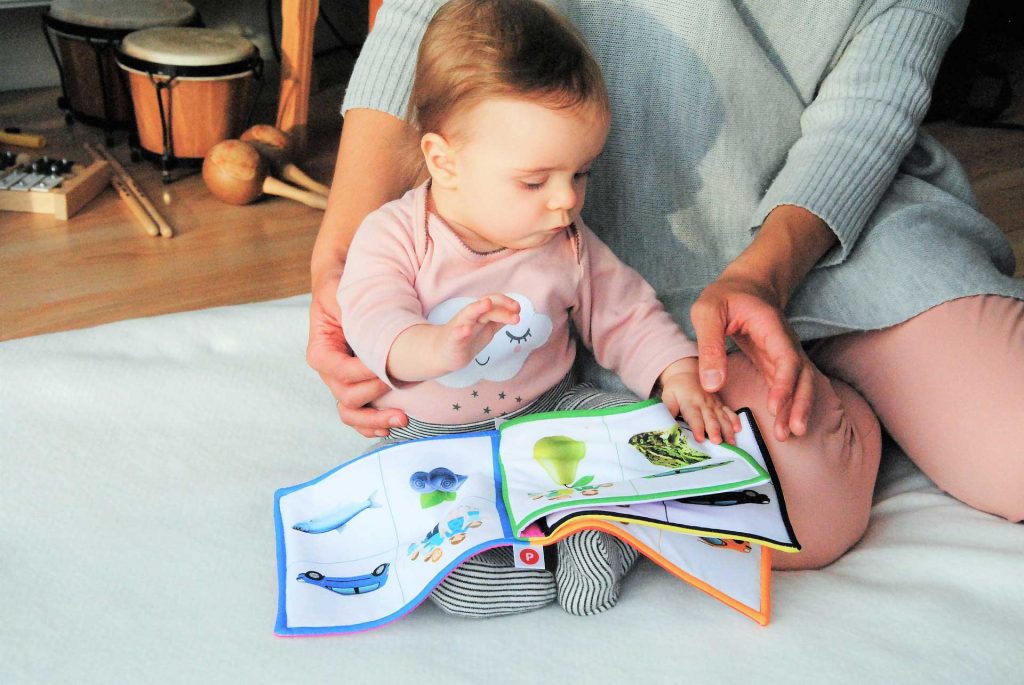
Research by D’souza, D., Brady, D., Haensel, J. X., & D’souza, H. (2020). Is mere exposure enough? The effects of bilingual environments on infant cognitive development. Royal Society Open Science,7(2), 180191. doi:10.1098/rsos.180191
Speaking multiple languages aids communication when visiting other countries or even in our multi ethnic country. Bilingual speakers and pre-language infants raised in bilingual homes also show other mental benefits, too. Why is that?
Psychologist Dean D’Souza and colleagues used a specialized camera to track eye movements of fifty-one bilingual and fifty-one monolingual infants during different visual computer exercises. Results showed that the infants raised in bilingual homes switched their visual attention faster and easier.
The researchers believe that infants in bilingual homes are better at scanning and exploring their environments because they live in more stimulating, unpredictable settings due to the changing languages spoken in the home. Therefore, these infants may be more alert to their environment to gain new information instead of focusing on what is already familiar, since they are more likely to hear words that they are unaware of in the home and need to learn them to communicate and predict.
There are more benefits to being bilingual than just communicating cross-culturally. Consider learning a new...
#425 - Vaping & Marketing

Psychology Science Minute #425
Why has vaping or e-cigarettes become so popular among our youth? Initially producers promoted e-cigarettes as a replacement for harmful cigarettes. Yet,research found vaping caused inhalation of dangerous metals that damaged DNA and caused cancer. Significant negative side effects impact the lungs, heart, brain, and dental health. These consequences are especially detrimental for the brain development of youth and young adults. Manufacturers promote a variety of enticing flavors. Now, children and adolescents commonly use vapes.
Researchers studied vaping’s appeal by analyzing 1 million vaping Tweets from January to March of 2017. They associated1200 vaping tweets with healthy sounding words such as “natural,” “vitamin,” “vegan,” and “organic.” Of these positive health related tweets, Marketers tweeted over half of them. Almost 30% of the marketers’ tweets stated vaping is harmless and 9% identified vapes as “health enhancing.”
Kids and teens likely believe these marketers who promote e-cigarettes as a healthy alternative to smoking. Educate youth on the side effects, addictive quality, and long-term harmful effects of vaping, falsely promoted as healthy. Encourage the FDA to regulate any unsupported claims used in social media.
#429 - Air Pollution & Schizophrenia

Psychology Science Minute #429
Do mental disorders develop from our genes or from our environment, or both?
Studies suggest that NO2 or Nitrogen dioxide,exposure in childhood leads to higher risk of schizophrenia. Vehicles typically produce NO2. Denmark Researchers assessed the level of NO2 exposure from the national registry for about 24,000 individuals. Over 3,500 people in that group received a diagnosis of schizophrenia. The researchers also assessed the participants’ genes to identify any genetic links to their diagnosis.
Results? Diagnoses of schizophrenia were associated with both participants’ genetic makeup and NO2 exposure. The researchers suggest that multiple genes may contribute to schizophrenia. When people share more of those genes, they are more likely to develop schizophrenia. These results also suggest that higher NO2 exposure, which more likely occurs in urban settings with polluted air, may have an impact on the developing brain.
This, one of many studies, suggests that both our genes and environment may have an impact on us! Let’s all reduce our carbon footprints, use less carbon fossil fuels. Prevent your and your...
#428 - Women Leaders & Stereotypes

Psychology Science Minute #428
How are we shaped by gender stereotypes? Does a women’s environment affect how she views herself or other women? Psychologists assessed whether a women’s automatic gender stereotype can be challenged. Specifically, to what extent does exposure to women leaders impact their traditional gender stereotypes?
Psychologists assessed this question through two studies. One study manipulated exposure, where participants saw information regarding famous women leaders. The second study compared a women’s college with a coeducational college.
Results? Women attending women’s colleges exposed to female leaders were less likely to believe in traditional gender stereotypes. Additionally, the long-term effect was dependent on the extent of exposure. Women attending coeducational colleges especially when attending male-dominated courses had greater gender stereotypes than women attending women’s colleges.
Women! Look around! Does your environment provide growth for women of all ages?! Encourage an environment clear of gender stereotyped beliefs to help women gain their full potential. Exposure to female leaders...
#427 - Lethal Force & Biases

Psychology Science Minute #427
Recent news highlights specific police officer’s inappropriate use of lethal force. What is the extent and reasons why some police engage in excessive lethal force?
In 2018, psychologists examined the factors and psychological characteristics of people in specific geographical living areas. They studied whether racial bias and stereotypes are related to death by lethal force. From databases of 2 million people they assessed racial prejudice and measured economic, racial, social, ethnic, and religious stereotypes.They defined racial prejudice as an evaluation of a group, and racial stereotyping as a belief that different groups were a threat.
Results? The most significant predictor of lethal force was related to specific regions with White stereotypes of Black individuals with weapons. Only racial bias of White individuals in that region predicted greater use of lethal force in those areas. Most important; these results reflect a regional level. Do not interpret these for any individual.
We who grew up in this culture will likely have hidden and overt biases—take extra steps to overcome these. Reach out to others...
#426 - Crisis & Resilience

Psychology Science Minute #426
Why do we study psychology? Maybe we can learn something to help us with COVID-19 or any crisis!
Researchers assessed whether positive people are more resilient, or can bounce back easier, during crises. In early 2001, college students and recent graduates participated in a study on emotions. After 9/11, 47 of the participants came back to describe their reactions to the crisis.
Results? Participants who expressed more positive emotions before the attack were less likely to develop depression after. After the crisis, those who identified as resilient,reported positive emotions such as gratitude, interest in the world, and love. While they still experienced the negative impact of 9/11, they bounced back quicker. They felt more optimistic, peaceful, and satisfied with life.
Use these findings to help cope with the pandemic. What can encourage positive emotions and resilience? Find meaning in a negative situation, appreciate other’s heroic acts and courage, and assist and care for others. Let’s focus on our values to guide us to meaning. Discover positives in negative or neutral events. Identify needs and help others...
#434 - Disability Type and Social Support

Psychology Science Minute #434
Do you feel better when you experience the support of your friends and family during a difficult time?
An Israeli researcher studied whether a child’s type of disability impacted the amount of perceived social support that the mother received, especially after a difficult time. The researcher also aimed to identify if the type of disability impacted the mothers’ ability to find positive outcomes from these difficult situations. This study focused on the experiences of 100 mothers of children diagnosed with Autism Spectrum Disorder and 120 mothers of children diagnosed with Down Syndrome.
Results? Mothers who perceived active social support appreciated the positive aspects of raising a child with a disability, such as social and religious growth. This particularly showed for parents of children with Down Syndrome as opposed to Autism Spectrum Disorder. The author believes that parents of children with autism receive less empathy from others as the disability is “invisible” in not presenting physical characteristics.
Caregivers having support is essential, especially when...
#432 - Researched Mental Health Applications

Psychology Science Minute #432
Mobile applications for stress management and self-care seem to be proliferating, helpful, and convenient. Are these applications based on effective therapeutic techniques and supported by psychological research?
Psychology and medical researchers identified and evaluated 1000 Android and iPhone wellness applications to identify how much research support they have. Results? Only 2% of the apps had support by research publications. More apps used mindfulness meditation as the singular research-supported technique, before positive psychology and goal setting. The researchers noted that the app Headspace had the most research support. Most apps had only one published research study. Only 1% of the apps used online therapists. Designers created only 2% of the apps as a supplement for in-person therapy.
Self-help mobile applications can be helpful in meeting goals. Do recognize that these apps are in the beginning stages of development. We need more research to identify which apps are most helpful based on already supported techniques in the psychological literature. Use mobile apps not to replace therapy, but in addition to therapy. If you need more help, motivation, and guidance, consider reaching out to a therapist for in-person or telehealth treatment, too.
#435 - Debt and Life Satisfaction
.jpg)
Research by Greenberg, A. E., & Mogilner, C. (2020). Consumer debt and satisfaction in life. Journal of Experimental Psychology: Applied. doi:10.1037/xap0000276
Research has found that debt impacts happiness and has life consequences. Do specific types of debt impact life satisfaction?
Marketing researchers studying psychological factors examined the impact of debt on life satisfaction in seven different studies in the U.S. Results? Of the people who reported having mortgage, credit card, and studentloan debt, only those with studentloan debt expressed a decrease in life satisfaction. Also, people who owestudent loans were more likely to label this as a “debt” compared to people who owed mortgage and credit cardloans. Results showed that it was the label used to describe student loans which impacted the participants’emotional reaction to them. Those who did not mentally label the loans as “debt” expressed significantly betterlife satisfaction, even while still having student loans.
These results show that your perspective on debtcan have an emotional impact on how content you are in your life. Having a more positive view of the debt may improve life satisfaction. Consider the loan as an investmentin your future, career, and personal growth. Focus on the positive outcomes that came from attending higher education. Money may not buy happiness, but frame of mind does!
#438 - Child Sexual Abuse Statistics

Written by Robin N. Fatovic B.S.
Rape, Abuse & Incest National Network. (n.d.). Children and Teens: Statistics. Retrieved October 11, 2020
How common is child sexual abuse? According to psychological research, The Rape, Abuse & Incest National Network or RAINN, child protective services finds reported claims of child sexual abuse every 9 minutes-10% of all girls and 2% of boys are abused, but 80% of all sexual assault victims under the age of 18 are female. Girls 16 to 19 are 4 times more likely to experience rape or assault, than the general population.
Who sexually abuses children? Sadly, 34% of the perpetrators are family members. 93% of children know their perpetrators, and only 7% of perpetrators are strangers. Sexual abuse can have long-term effects on child victims. These children are about 4 times more likely to experience post-traumatic stress disorder in adulthood. Three times more likely to have at least one major depressive episode later in life, and 4 times more likely to abuse substances.
Look for any changes in a child’s normal functioning such as depressed mood, distractibility, withdrawing from touch, or even, sexualized acts or talk. Find more warning signs at RAINN.org. Know the signs and act to protect the children! Seek specialized treatment.
#437 - Parent-Child Transmission of Stress
.jpg)
Psychology Science Minute #437
Should parents suppress their emotions to protect their children from experiencing stress? To answer this question researchers studied 107 parent-child dyads. They exposed the parents to a stressor and told half to“show no emotions” and half to “act naturally as you would at home” when reuniting with their children. The researchers measured their physical symptoms of stress by attaching sensors to the parents and children.
Results? Children who engaged with mothers who suppressed their emotions experienced more physical stress. However, fathers who suppressed their emotions did not influence their children’s stress response. Instead, the children’s stress influenced the fathers to experience more stress. When parents suppressed their emotions, both parents and children appeared less warm and engaged when communicating with each other. Stress impacts both our minds and bodies. And your stress can impact others’ minds and bodies too. While parents sometimes try to hide their emotions from their children to protect them, the result can be counterproductive.
Parents, it is acceptable to feel emotions and express your concerns. Be genuine. Yet, let them know you will be able to handle the emotional stress and you will protect them. Show them how to cope well.
#436 - Predictions of Loneliness
.jpg)
Psychology Science Minute #436
Which people are lonely? Do you have any assumptions about what age, cultural background, or gender they might be? United Kingdom psychology researchers surveyed personality characteristics and loneliness in 46,000participants of different ages across 237 areas of the world.
Results? The researchers identified that loneliness decreased with age, and younger people seemed to be lonelier. They found that men experienced more loneliness than women. People in cultures that focus more on self-reliance and individual growth felt lonelier than people who lived in cultures that focus more on community and family interdependence. These findings were slightly significant, yet consistent across different areas of the world. Therefore, these results are universal on some level across cultures. Significantly, young men who live in individualistic cultures like the US are more vulnerable to experiencing both short and long-term loneliness.
Although younger generations are known for being more open about their struggles, young men in the US might need more avenues for support. Everyone can be lonely. To combat loneliness, reach out to others, volunteer your services, join social, community service, library, political, or college organizations and help non-profits. You can be self-sufficient and still reach out for help!
#441 - Nurture with Nature
.jpg)
Psychology Science Minute #441
Some people experience depression during colder months with less sunlight and they are more likely indoors. Nature can have a profound impact on mental health. But even in warmer months, do city dwellers experience any mental health difficulties due to nature deficit?
Danish researchers studied the amount of residential greenery and tracked mental health of nearly one million children over several years. They assessed residential exposure to nature by reviewing high-resolution satellite images showing higher and lower vegetative areas. Controlling for many socioeconomic and parental factors, they found that children growing up in more urban areas with less nature had up to a 55% higher risk of developing mental disorders in adolescence and adulthood. The diagnoses included personality, obsessive-compulsive, depressive, bipolar, schizophrenic, substance use, and eating disorders.
While this “nature deficit disorder” needs research, factors such as increased stress, sensory stimulation, and air pollution likely contribute. Let’s bring nature indoors and to our cities—plant trees, replace grass with plants and flowers. Parents! Send/take children outside to explore nature. Experience more greenery! While they are still developing, give their minds a chance to unwind and their lungs a chance to breathe fresh air.
#440 - Dog is a Child’s Best Friend

Psychology Science Minute #440
Dogs are known to be “human’s best friend,” but recent research shows that they may also be “child’s teacher.”Australian researchers studied the effect of owning a pet dog on preschoolers’ social and emotional development. They surveyed 1,600 parents of 2 to 5 years old children.
Results? Preschoolers who did not own a family dog had more behavioral issues and social difficulties with other children. Preschoolers who walked with their dog at least one time per week had fewer social and behavioral difficulties compared to children who walked pets less or did not own a family dog. Finally, preschoolers who played with their dog at least three times per week were more likely to help others than those who did not own a dog.
These results indicate that even minimal exercise and bonding with a pet may have long-term benefits. During the COVID quarantine with minimal peer interaction, these findings may be even more important to consider. Spending time with pets may teach toddlers kind, caring interactions, and looking out for another’s needs.
#446 - Work Hard, Play Hard

Psychology Science Minute #446
You might be serious at work and leave play for when you get home, but what if someone told you that play could also be effective at work?
Across two studies, business psychology researchers studied the effect of humor on persistence at work with 74 Australian undergraduate students. In the first study, students watched either funny or neutral videos. They then engaged in a computer task focused on making predictions, which they believed would end if they answered 10 consecutive questions correctly. However, they did not know that the computer prevented that. In a second experiment, participants answered math-related questions with clear right and wrong answers where the researchers could measure the amount of time, thus effort put into each try.
Results? Participants, who watched the funny video before the tasks, answered almost twice as many questions and spent at least 50% longer on them. The researchers believe that feeling amused helped the participants to avoid burnout and increase motivation. When struggling with work motivation, consider focusing on something funny during your break, exchange jokes or amusing stories with colleagues, or incorporate amusement into your working style! Have fun!
#445 - Self-Control in Dieting

Psychology Science Minute #445
Have you ever started a diet, but struggled to stay motivated or dedicated to it?
Psychology researchers hypothesized that what we tell ourselves impacts our self-control when dieting. First, they separated 240 participants into two groups. Each received instructions to speak to themselves in the first or third person. For example, someone in the first-person group would say “What do I want to eat?” whereas a person in the “distanced,” or third person group would say,“What doesRobinwant to eat?” Next, half of each group watched a 2-minute health-related film encouraging goals while others watched a film on home improvement.
Results? Participants decreased their unhealthy food choices if they just watched the health-related video or used distancing self-talk. Participants had the most benefit by creating goals from the health-related film plus using the “distancing” method.
So, the best combination is to have specific health goals and speak to yourself in the third person when deciding what to eat. This strategy likely will encourage better self-control as it may create a bigger...
#444 - Psychology and Genetics

Psychology Science Minute #444
Disparate branches of science (like biology, chemistry, and psychology) create new understandings and technologies. Applying these developments across disciplines can lead to major breakthroughs.
Medical researchers from Japan, China, and the US collaborated in analyzing the behavior and genetic codes of mice with a mutation in the SETD 1A gene. This mutation turned off the gene, thereby affecting brain development. But wait—what does this have to do with psychology? Previous research shows that this special gene in humans impacts the development of schizophrenia, which is a psychological disorder that usually involves delusions and hallucinations. People with this disorder might have some thinking difficulties. The researchers tried to “turn on” this gene in the mice to see if they could improve some of these mental symptoms. They were successful! They reversed the effects using a medication that targeted this gene.
This study shows that our thoughts, behaviors, and even genetics are changeable. This can lead to changes in our brains, and more importantly, changes in our cognitive functions and life satisfaction. Collaboration and understanding across different sciences may advance the creation of life-changing therapies.
#443 - Half Glass Full, Empty, or Neither?

Psychology Science Minute #443
Business management researchers studied1,600 British participants’ views on finances and overall wellbeing using surveys. Would financial optimists feel better because of their positivity, or would financial pessimists feel better because of their preparedness or caution?
Results? Neither is better! In fact, the researchers found that realists (with no mistaken expectations) had the healthiest mental well-being over time. Compared to realists, pessimists had 37% and optimists 12% more difficulty in coping, and pessimists had a 22% reduction in overall well-being and optimists 13%.
Why might this be? The researchers believe that optimists have a greater chance of becoming disappointed if their unrealistically positive views do not come true, which leads to distress. They believe that pessimists expect negative outcomes to such a strong degree which dampers their reaction to positive results, as they might view the outcome as avoiding something bad rather than achieving something good. By hoping, but having few expectations and accepting “what will be, will be...
#442 - Misremembering Selfishness

Psychology Science Minute #442
How do people cope when acting below their standards?
Psychologist Ryan Carlson and colleagues tested this across five studies with 3200 participants. The participants allocated money to themselves and to an anonymous partner. The researchers offered them a portion of the money if they remembered how much money they gave to their partners.
Results? Participants who were more frugal compared to their personal standards of fairness reported giving more money than they truly did. The researchers call this event “misremembering,” as there is a motivation to not remember the actions that make us appear less moral according to our own prior measured principles. However, when researchers required participants to give a certain amount less than their prior standard of generosity, participants had no need to portray themselves as more generous than they acted. Thus, they did not“misremember.” Having personal responsibility impacts our misremembering.
The researchers believe we misremember actions that do not meet our standards for generosity, thus preserving our own self-image and sense of morality. Our minds protect...
#450 - Body Image and Values

Alleva, J. M., Medoch, M. M., Priestley, K., Philippi, J. L., Hamaekers, J., Salvino, E. N., . . . Custers, M. (2020). “I appreciate your body, because…” does promoting positive body image to a friend affect one’s own positive body image? Body Image
Can expressing appreciation and love to a friend change the way you view yourself?
Researchers studying how writing letters to friends can impact their own body image, instructed 150 college women to write a letter to a close friend. Half wrote appreciations about their “body functionality,” or everything that the body is able to do (like keeping them alive and functioning), rather than how the friend’s body looks. The letters were not to include anything about their friend’s appearances. The other half wrote about their favorite memories with their friends.
Results? Although the researchers believed that only women in the group who wrote about their friends’ bodies would show improvements in their own body satisfaction, the women in both groups did! People can appreciate their bodies as providing more than appearance when they consider all the amazing functions they serve. Also, the women who wrote letters about fun memories switched their focus from their own physical appearance to important values in their lives, such as friendship and enjoyment. If you feel down about the way you look, focus less on your appearance and more on the things that you value in your life, like health or friendship!
#449 - Helpful Horror

Psychology Science Minute #449
What kind of movies do you like to watch?
Psychology researchers asked, “Do horror movie fans handle stress and crises better?” They surveyed 322 U.S. participants at the beginning of the COVID-19 pandemic before much was known.
Results? Fans of zombie, apocalypse, and alien invasion horror movies felt more prepared for the COVID pandemic and experienced lower distress. They also reported having fewer negative impacts from the pandemic than those who did not watch these movies. Participants who reported having an interest in horror films at the time of the study were also better able to bounce back from difficult times than those who were uninterested. People labeled as “morbidly curious” also showed greater resilience. The authors described this personality trait as being genuinely intrigued by something that another person might be horrified by.
The researchers suggest these movies may allow people to learn alternative ways to react in dangerous situations. If danger occurs in real life, people may be better prepared and respond calmly. Also, by curiously observing a situation, it appears to be less of a...
#448 - Power and Perspective-Taking

Psychology Science Minute #448
Are effective leaders in power good at understanding other people’s needs and perspectives? Psychologist Yinan Wang from Beijing Normal University thought self-esteem or valuing oneself and one’s abilities might impact this ability.
With power comes influence, and with perspective-taking comes a connection to others. Dr. Wang believed that a good leader has a balance between power and perspective-taking based on self-esteem. 100 college students described a time in which they had more or less power than their roommates. They also filled out a survey on self-esteem and described their ability to understand their roommates’ perspective.
Results? When in a position of power, participants with higher self-esteem were better able to connect with others and understand their viewpoints. Therefore, leaders would benefit from placing an equal amount of energy on their own self-value and their ability to make connections with others. This balance can simultaneously improve compassion for themselves and others. People in power: foster your own self-worth and connect with others using your own experiences to understand them.
#451 - Illusion of Positivity
-1.jpg)
Psychology Science Minute #451
Is it helpful to always look on the bright side?
Psychology researchers argued that being overly positive, like thinking one is always in control, successful,and makes no mistakes, can result in irrational beliefs or “illusions.” Thinking this might be harmful to mental health, they studied the beliefs and mental health of 1240 people from Australia using a questionnaire.
Results? Participants who had overly positive beliefs had more anxiety, depression, and stress. They also had lower self-esteem, less optimism, and less ability to cope well. Does this mean we should never think positively? No! However, when we create an illusion of positivity and something goes wrong, this can create disappointment. To cope, accept that a situation is a challenge, but difficult. It’s okay to experience uncomfortable emotions, but don’t try to avoid them. Instead, accept the discomfort. Sit with it. Accept that we cannot control certain forces. Learn from it. Figure out what you can control in the situation and try to change it. If you ever have a belief that is overly positive in a way that does not really accept the reality of the situation, ask yourself, “is this thought really helpful?”
#453 - Child Trauma and Physical Health

Psychology Science Minute #453
Do traumatic childhood events lead to not only increased mental health difficulties but also physical health?
Researchers collected data from over 50,000 respondents from several areas in the US through the Behavioral Risk Factor Surveillance System, which asks personal questions about people’s experiences and health statuses.
Results? 60% of respondents reported having one or more childhood experiences of abuse and/or difficult living situations. Those who experienced at least 1 experience had a greater chance of reporting poor overall mental and physical health, asthma, myocardial infarction, and disability. Those who reported 3 to 6 of those experiences were at higher risk of developing diabetes, and those who reported 4 to 9 were at higher risk of stroke and coronary heart disease.
The mind and body are very intertwined. When people feel stressed, many bodily events happen that impact the different systems and organs in the body. When a child is growing, these changes can have long-term health impacts. Consider what children experience in your home. Make sure to get help, report any physical, emotional, or sexual abuse of...
#456 - Comfort and Control
-1.png)
Psychology Science Minute #456
How do you like others to comfort you when you feel down?
Communication researchers studied 325 married adults on how to express support. These adults considered a disagreement with their partners. The researchers asked them to evaluate hypothetical messages of support and pretend they were from a loved one.
Results? Though seeking support, the participants wanted to feel a sense of personal control in the situation. They were less likely to accept support from a loved one who gave advice on what the person should do, failed to discuss facts of the situation, or justified it. When the participants felt that the messages tried to persuade them, they developed a negative reaction toward the hypothetically supportive person. Because the tone of the messages appeared dominant, rather than comforting, the messages threatened their desire to have some control in the situation. Instead, participants felt more supported by a loved one who respected and accepted their emotions.
When attempting to comfort someone, instead of trying to problem-solve, acknowledge how the person is feeling, even if it is uncomfortable. Help that person feel heard.
#510 - Faster Responders
.jpg)
Written by Vanessa Melendez, B.S.
Reference: Wang, D., & Ziano, I. (2022). Faster Responders Are Perceived as more Extraverted. Journal of Experimental Psychology: General.
Do we rely upon brief cues when making quick judgments of others—e.g., when meeting new people, or making hiring decisions?
Singapore psychologist Deming Wang and a marketing colleague studied response timing (i.e., the length of delay between a question and response). They wanted to determine if this nonverbal cue leads people to make judgments of competence, character (such as honesty, certainty, and confidence), or personality traits like extraversion.
They gave 220 international individuals a brief 10-Item Personality Inventory. In 14 experimental scenarios using audio, video, and vignette formats, participants gave their impressions of responders’ personality traits for each of the varied interactions.
Results? In scenarios of people with delayed responding, participants as a “mock employer” concluded the interviewee was nervous and introverted, and then they were more likely to hire the extroverted person. Even when the responder was a known friend, they thought response delays signaled nervousness.
Everyone! We make a variety of inferences based on response timing and others’ non-verbal cues. Let’s take time to check out our automatic assumptions carefully!
#506 - Pathological Lying
.jpg)
Written by Vanessa Melendez, B.S.
Reference: Curtis, D. A., & Hart, C. L. (2020). Pathological lying: Theoretical and empirical support for a diagnostic entity. Psychiatric Research and Clinical Practice
For those whose lying is chronic, excessive, and compulsive, what is the impact of this pathological lying on them? Pathological lying is not a classified disorder. But does it warrant official diagnosis and treatment?
Researchers investigated pathological lying’s frequency, function, pain, and symptoms. Is it a symptom in psychiatric diagnoses? They recruited people from mental health forums, social media, and a university to complete distress and lying questionnaires. Of 620 usable participant responses, ages 18 to 60 years old, 13% reported they identified themselves or reported others identified them as pathological liars.
Pathological Lying had no significant association with sex, age, education, ethnicity, income, or having a psychiatric diagnosis. Pathological liars averaged 10 lies per day, mostly in person, not in writing. Pathological liars, compared to average persons, reported more distress, more danger, and impaired functioning, especially in relationships, but also in legal, financial, and occupational areas. Pathological lies often stem from an initial lie and for no reason.
This study provides evidence for identifying pathological lying as a disorder causing repeated relationship problems. If you or loved ones have pathological lying, seek psychological treatment!
#507 - Noticing Nature
.jpg)
Written by Vanessa Melendez, B.S.
Reference:
Passmore, H.-A., & Holder, M. D. (2016). Noticing nature: Individual and social benefits of a two-week intervention.
How can we enhance our well-being and happiness?
To investigate the effects of noticing and attending to nature, Canadian researchers randomly assigned 400 participants to three conditions: Group 1. Nature: they asked them to notice nature around them, Group 2. Human-Built: they asked them to notice human-built objects, and 3. a control group: they were not asked to focus on anything. They asked all groups to notice their emotions, identify what evoked the emotion, and then photograph it. After two weeks, all participants reported any perceptions of beauty, their well-being, sense of meaning, and general connectedness to others.
Results? After controlling for variables like time of day, location type, weather, and companionship, participants felt happier and more inspired when in nature. They experienced a sense of connectedness to other people, to nature, and to life, but significantly higher in the nature group compared to the human-built and control groups. Persons in all groups’ well-being increased most when evoked by natural scenes.
Stop and smell the flowers! In your everyday life, find nature’s beauty! Treasure it and observe it carefully. Photograph it. Share your feelings and experiences with others.
#491 - Words for the Whole Person
-1.jpg)
Written by Robin N. Fatovic M.S.
Reference:
Granello, D. H., & Gorby, S. R. (2021). It's time for counselors to modify our language: It matters when we call our clients schizophrenics versus people with schizophrenia.
The way we refer to people matters. Health professions encourage practitioners to use “person-first” terms, like “a person with cancer” rather than “a cancer patient.”
Researchers gave a measure of tolerance of people with schizophrenia to 250 mental health counselors and practicing students. Half received a version of the measure that referred to people as “schizophrenic,” while the other half saw people “with schizophrenia.”
Results? Those who read questions that used the word “schizophrenic” showed more authoritarian qualities and believed that people with the disorder needed control and discipline. They indicated more need for social distance from these individuals, believing they were a danger to others. In comparison to counseling students, practicing counselors showed less benevolence, or kindness and willingness to help.
We subconsciously tie certain beliefs and emotions to the words we use. Referring to people as their diagnosis disregards all their other qualities that make them human. Family, friends, journalists, and those in health services, notice the words you use about others. Refer to patients or clients as a person first, with a diagnosis. This likely will change the way you view and treat them!
#466 - Succulents vs. Stress
-(1).jpg)
Research by Yin, Jie; Yuan, Jing; Arfaei, Nastaran; Catalano, Paul; Allen, Joseph & Spengler, John (2020). Effects of biophilic indoor environment on stress and anxiety recovery: A between-subjects experiment in virtual reality. Environment International,136, 105427. https://doi.org/10.1016/j.envint.2019.10542
Written by Robin N. Fatovic M.S.
What changes can you make to your office to reduce anxiety during the workday?
Researchers wanted to know if an office space with plant life would impact stress levels. 100 people used virtual reality to view four different office spaces after engaging in stressful tasks. In their virtual offices, Group A had no plant life or windows, B had plants without windows, C had just windows with a nature view, and D had both plants and a nature view. Body sensors identified the degree of the body’s physical stress response and the participants completed surveys about their perceived stress.
Results? People who were virtually in an office space with plant life or views of nature were better able to recover after a stressful task. Having plants in the room was more effective at improving physical stress, like lowering blood pressure, while having an outdoor view of nature was better at reducing mental anxiety.
It can be easy to feel overwhelmed at work, so connecting with nature might help ground you. Have a plant or a nice outdoor view in your office. It’s crucial in managing your work stress!
#462 - Coordination in Conversation

Psychology Science Minute #462
Do you feel awkward when ending a conversation? Researchers studied how people decide when to close their conversations. In study one, 800 participants completed a survey explaining how a recent talk ended. To get the partners’ perspectives, the researchers recruited 250 strangers to engage in actual conversation in a lab, reporting when they and their partner wanted it to end.
Results? In study one, 66% of participants reported they ended the conversation because they did not enjoy it anymore. On average, they believed their partners wished it lasted 61% longer. In study two, participants wanted their conversations to last only 14% longer, yet 46% wished for different topics. In both studies, participants did not communicate with their partner what topics they liked or when they were ready to end the conversation.
The results show we likely overestimate other’s desire to continue a conversation. Talk about topics you think both would enjoy. Gracefully end when still having fun and compliment them like, “I enjoyed talking with you! I particularly like talking about this topic. What do you like to discuss?” This provides needed information for your next mutually successful conversation.
#508 - Religious and Nonreligious Judgments
.jpg)
Written by Vanessa Melendez, B.S.
Reference: Rabelo, A. L., & Pilati, R. (2021). Are religious and nonreligious people different in terms of moral judgment and empathy? Psychology of Religion and Spirituality
How does having a religion affect moral judgments? Many consider belief in religion crucial to making good moral choices. Brazilian researchers studied the relationship between religious commitment and moral judgment. Do religious people differ from non-religious people in their moral judgments of social norm violations?
Researchers had 650 participants (410 atheists or agnostics-non-religious, 170 religious, and 70 other or no religion) complete religiosity, moral judgment, and moral disgust scales. They presented 3 disgusting scenarios where a person committed extreme morally condemnable actions, such as eating human flesh to survive a plane crash, and 3 non-disgusting scenarios from mild to difficult moral wrongs. Participants rated these on two dimensions: wrongness and level of disgust.
Results? Both non-religious and religious participants showed similar patterns of moral reactions to the scenarios. All groups agreed on the severities of differing moral scenarios.
In society, we humans may differ on religiosity but react similarly to moral and immoral behaviors. Let’s be less judgmental. People can still have a strong moral code even if they are not a part of your organized religion. Embrace humanity!
#509 - Parent Math Anxiety
.jpg)
Written by Vanessa Melendez, B.S.
Reference: Oh, D. D., Barger, M. M., & Pomerantz, E. M. (2022). Parents’ math anxiety and their controlling and autonomy-supportive involvement in children’s math learning: Implications for children’s math achievement. Developmental Psychology
What can parents do at home to foster positive learning experiences in their children? Does a parent’s own math anxiety influence their children’s math learning when helping them?
Researchers examined whether parents’ math anxiety impacted their child’s math achievement in how they assist their child with homework. They recruited 560 parents (80% mothers) of Illinois elementary children to visit a lab twice in two consecutive years. Researchers collected data on parents’ math anxiety and two homework parenting styles: 1. controlling (sitting next to, immediately correcting mistakes, insisting they solve the problem ‘the right way’) or 2. autonomy supportive (giving hints, asking questions to get their child to solve a problem on their own, praising their working hard). They videotaped parents playing a math game with their children to verify how parents interacted. Children took assessments after each visit.
Results? Math anxious parents were more likely to use controlling parenting, especially with lower math-achieving students. Additionally, their children had lower math achievement a year later.
Parents! Relax. Encourage your children to solve problems on their own, ask questions, give hints, praise their efforts. Your support is beneficial!
#505 - Child Corporal Punishment
.jpg)
Written by Juanita N. Baker, Ph.D.
Reference: Gershoff, Elizabeth T. & Grogan-Kaylor, A. (2016). Spanking and Child Outcomes: Old Controversies and New Meta-Analyses. Journal of Family Psychology, 30, 4, 453–469.
Although 63 countries’ laws prohibit parents or anyone from using corporal punishment on children, half the states in the US still allow it in schools to “correct” children’s behavior. Is this harmful? What is the research evidence?
To update prior meta analyses and to differentiate results comparing and separating child physical abuse from spanking or corporal punishment, researchers meta-analyzed 75 studies on 110 relevant effects of 160,000 children.
Results? Spanking and physical abuse outcomes did not differ. Both showed detrimental child outcomes. Compared to children with no spanking, children who were spanked showed: more aggression, antisocial behaviors, anxiety, depression, impaired cognitive ability, and lower self-esteem. However, not associated with spanking was the child’s immediate defiance, abusing alcohol and substances, or low self-regulation.
Importantly, children who were spanked had poorer child-parent relationships. The more parents spanked, the more likely they would physically abuse their child. Yet as adults, the children more likely supported spanking.
Parents and teachers, find scientific ways to help children behave positively! Take time to speak privately. Sit and discuss how they can act to get their and others’ needs met. Agree on what they can do to make amends
#504 - Body Image Over Lifespan
.jpg)
Written by Vanessa Melendez, B.S.
Reference: Hockey, A., Milojev, P., Sibley, C. G., Donovan, C. L., & Barlow, F. K. (2021). Body image across the adult lifespan: A longitudinal investigation of Developmental and cohort effects. Body Image
Magazines, advertisements, television, and social media expose us to body ideals. These standards tend to favor slim waists and muscular upper body for men, and a thin, buxom, and youthful ideal for women. What trends encompass body image over a lifetime?
Danish researchers collected longitudinal data over 6 years, 2010 to 2015, from more than fifteen thousand participants ages 18 to 94 years old. 63% were women. They asked if participants were satisfied with their body’s appearance, size, and shape. They explored how body image varies over different age groups.
Results? There was a very slight increase in body satisfaction across the lifespan for everyone. Compared to women, men consistently held higher body satisfaction levels over their lifetime. Women between 24-29 and 34-39 years demonstrated a downward trajectory in body satisfaction during the assessment period. Women aged 59 and above reported satisfaction levels rising. Perhaps as women age, society and women place less importance on women’s appearance than on healthy functioning.
Women! Do not let unrealistic ideals sway your self-perceptions! Everyone! Let’s appreciate the wonders of our bodies. Focus on exercise, health, and wellness!
#503 - Maternal Diabetes Effects
.jpg)
Written by Vanessa Melendez, B.S.
Reference: Nogueira Avelar e Silva, R., Yu, Y., Liew, Z., Vested, A., Sørensen, H. T., & Li, J. (2021). Associations of maternal diabetes during pregnancy with psychiatric disorders in offspring during the first 4 decades of life in a population-based Danish birth cohort. JAMA Network Open
Prior research indicates maternal diabetes may impact a fetus’s brain by causing hypoxia or oxidative stress. Some studies indicated their children were more likely to have Autism and Attention Deficit Disorder.
A Danish population study of more than 2.4 million offspring (51% male) between 1976 and 2016 investigated the relationship between maternal diabetes during pregnancy and the onset of ten psychiatric disorders. Researchers controlled for parental history of psychiatric disorders, educational level, smoking habits, and body mass index.
Results? During the 39-year follow-up, 6.4% of the offspring had received a diagnosis of a psychiatric disorder. Offspring born to mothers with any type of diabetes during pregnancy as compared to those without diabetes were more likely to develop a psychiatric disorder. Disorders included schizophrenia, anxiety disorders, intellectual disabilities, behavioral, and other developmental disorders, but not substance use, eating, mood or personality disorders.
Thus, give good prenatal care. Screen and treat diabetes in fertile women, especially those overweight. Many mental disorders have physiological causes. Don’t stigmatize or blame mothers or offspring nor anyone who has mental health issues. Give empathy, support, and encourage those in need to seek research based therapy.
#481 - COVID Stress and Partner Aggression
.jpg)
Parrott, Dominic; Halmos, Miklós; Stappenbeck, Cynthia ; Moino, Kevin (2021). Intimate Partner Aggression During the COVID-19 Pandemic: Associations With Stress and Heavy Drinking.
What impact did the COVID quarantine have on family relationships?
Researchers aimed to see if domestic aggression increased during the height of the quarantine. 510 participants completed questionnaires about COVID stressors, intimate partner aggression, and heavy drinking during April 2020.
Results? Rates of physical and psychological aggression in partners significantly increased when people were staying at home during COVID. There was a relationship between stress from COVID and committing partner aggression, but only for those who did not drink heavily.
You might associate heavy drinking with harmful behaviors like violence, but these results show that stress affects those who do not drink heavily, and it is associated with interpersonal aggression too. Research shows that stress created from life-changing experiences, like natural disasters, increases partner aggression. COVID created new stressors for people. Check in with friends and family, especially those who seem stressed from the worldwide changes. Psychological support, finding and giving positive compliments, encouraging peaceful conflict resolution, and taking a time-out before anger gets out of hand can prevent domestic violence and further harm!
#479 - Cost Effective Care
.jpg)
Reference:
Chiles, Jeremy; Lambert, Michael; & Hatch, Arlin (1999). The impact of psychological interventions on medical cost offset: A meta-analytic review.
Did you know that psychological interventions can help in your medical treatment?
Psychologists can help with difficulties that impact your healthcare treatment like anxiety, depression, substance use, and other mental health concerns. They can even help with lifestyle changes, such as changing your diet or taking medications. But can this service also decrease healthcare costs for patients?
Researchers reviewed the impact of psychological interventions on medical care in 91 studies done between 1967-1997. Results? Engaging in therapy alongside medical treatment saved patients about 20 to 30% of their medical care costs. After receiving mental health treatment, patients decreased their medical care usage and improved their recovery time in 90% of the studies.
Therapy can help in many ways. Sometimes mental health concerns show up as physical symptoms. Depression and anxiety can interfere with medical treatment. For example, a person with a lot of anxiety might be too afraid to take new medications for diabetes and therefore sees the medical doctor more for symptoms. Speaking with a therapist can improve motivation to focus on health when depressed. Psychological interventions not only help with mental health functioning, but with physical health too!
#475 - Signs of Self-Harm

Can we predict or identify self-harming behaviors without suicidal intent in teenagers? University of Cambridge researchers reviewed longitudinal survey data of 11,000 14-year-old United Kingdom teens in the Millennium Cohort Study.
Results? The researchers identified risk factors for self-harm that were evident a decade before the self-injury began. The researchers found two subgroups of teens who self-harm: 1. teens who at a young age exhibited mental health conditions of poor emotional control, behavioral difficulties, and low self-esteem. 2. teens who were victims of bullying when younger and had a caretaker who experienced mental health problems. However, this second group showed less childhood risk factors and no mental health conditions. Yet, during adolescence...
Research by Uh, S., Dalmaijer, E. S., Siugzdaite, R., Ford, T. J., & Astle, D. E. (2020). Two pathways to self-harm in adolescence. https://doi.org/10.1101/2020.07.10.20150789
Written by Robin N. Fatovic M.S.
#105 - Marriage & Training

References
Rogge, R. D., Cobb, R.J., Lawrence, E., Johnson, M. D., & Bradbury, T. N. Is skills training necessary for the primary prevention of marital distress and dissolution? A 3-year experimental study of three interventions. Journal of Counseling and Clinical, Vol 81(6), Dec 2013, 949-961.
Based on research by Rogge et al, 2013. Written by Kyle Piecora, M.S..
Can psychological intervention help the alarming rate of divorce in our country?
Dr. Ron Rogge, compared ways of helping couples in their relationships. Newlywed and engaged couples were assigned to one of four groups:
Not able to attend treatment.
Conflict Resolution (teaching couples problem solving, and conflict resolution skills).
Caring Skills group (encouraging couples to accept their differences, learn empathy and show caring)
A simple relationship awareness group. Some professionals think couples already have basic relationship skills and only need awareness of the relationship’s importance and the need to preserve it.
Couples completed measures about their relationship at 6 months, 1, 2, and 3 years after treatment. Those not receiving treatment terminated relationships more than those in all treatments, but this may be misleading, as they did not make time to attend a class in the first place. Paradoxically, the wives in the Conflict Resolution group showed slower declines in hostile conflict, while couples in the Caring group showed faster declines in positive behaviors! Though all Treatment groups led to fewer relationships ending over 3 years, those who focused on awareness of their relationship’s importance and its maintenance were equally well off.
You can act to prevent endings, remember the need to enhance and value your relationship.
#489 - Supportive Listening & Brain Health

Written by Robin N. Fatovic M.S.
Reference:
Salinas, J., O’Donnell, A., Kojis, D. J., Pase, M. P., DeCarli, C., Rentz, D. M., Berkman, L. F., Beiser, A., & Seshadri, S. (2021). Association of Social Support with brain volume and cognition. JAMA Network Open, 4(8). https://doi.org/10.1001/jamanetworkopen.2021.21122
Can social support protect against cognitive decline?
Neuroscience researchers studied brain images and neuropsychological test results of 2,200 adults with an average age of 63 to assess physical brain health and cognitive functioning, also known as “cognitive resilience,” and then investigated the impact of the person’s social support on their cognitive resilience.
Results? Elements of social support such as affection, emotional support, and sufficient social interaction did not affect cognitive resilience. However, feeling like they were listened to enough by loved ones was associated with cognitive resilience. This finding was stronger for participants below 65 than above.
The researchers believe that supportive listening can improve brain functioning through reducing stress and exercising the brain. The brain continues to make new neural connections throughout life. Mutually connecting with others releases hormones that impact the brain. So, by talking and feeling heard, our brains can strengthen and possibly slow the effects of cognitive decline.
Spend time with those who really listen to you. Be curious and a listening ear to others. Make eye contact. Summarize what they say to show that you care and understand. Help each other to mutually enhance cognitive health!
#080 - Autism is Treatable

References
Lovaas, O. I. (1987). Behavioral treatment and normal educational and intellectual functioning in young autistic children. Journal of Consulting and Clinical Psychology, 55(1), 3-9.
Howard, J. S., Sparkman, C. R., Cohen, H. G., Green, G., & Stanislaw, H. (2005). A comparison of intensive behavior analytic and eclectic treatments for young children with autism. Research in Developmental Disabilities, 26(4), 49-68.
Based on research by O. Ivar Lovaas, 1987. Psychology Science Minute written by Byron Wine, Ph.D., BCBA-D.
Today more children are diagnosed with Autism (1 in 88) than decades ago. Identified by marked impairment of communication, poor social relations, and restricted or repetitive patterns of behavior, their prognosis is poor without treatment. Medical therapies alone are not effective.
Fortunately, psychologist O. Ivar Lovaas first demonstrated in 1987 that using intensive training based upon applied behavior analysis was effective in treating children diagnosed at an early age with autism. Applied behavior analysis is a discipline based upon the work of noted psychologist B. F. Skinner. Lovaas worked with young children with autism, average age 35 months old for 40 hours/week for up to 6 years. These showed significant gains in IQ, with 47% achieving normal intellectual and educational functioning in contrast to only 2% of the control children who received only 10 hours per week. Researchers have since extended and confirmed these results
With wide media coverage, numerous treatment options are available. Caregivers, be cautioned. Fully investigate any claims of efficacy before enrolling children in treatment. While nobody can guarantee results for any one child, early detection and diagnosis, followed by intensive applied behavior analysis-derived therapy, remains the most effective research based strategy in treating children with autism.
#482 - Hearing Voices
.jpg)
Reference:
Honig, Adriaan, Romme, Marius A., Ensink, Bernadine J., Escher, Sandra D., Pennings, Monique H., & Devries, Marten W. (1998). Auditory hallucinations: A comparison between patients and nonpatients. The Journal of Nervous & Mental Disease, 186(10), 646–651. https://doi.org/10.1097/00005053-199810000-00009
Written by Robin N. Fatovic M.S.
Hearing voices is common in about 10% of our population and in people diagnosed with psychosis. How do they differ?
Netherlands’ researchers asked nonpatients who reported hearing voices and patients diagnosed either with schizophrenia or a dissociative disorder to complete an interview and questionnaires to determine any differences.
Results? Nonpatients started hearing voices before 12 years old, whereas the clinical groups started after 12. Patients reported hearing voices daily and more continuously than nonpatients. Patients diagnosed with schizophrenia reported hearing voices talk about them more often in third person than nonpatients. Compared to nonpatients who heard voices, patients with schizophrenia or dissociative disorders reported that the voices spoke about their thoughts and those of others more. While nonpatients reported the voices spoke more positively to them, the clinical groups reported more negative voices making them feel afraid, criticized, and less in control of their lives. More than 50% of all groups hearing voices experienced abuse as a child. The onset of hallucinations for those in the dissociative disorder group occurred after experiencing a traumatic event.
If you struggle with hearing voices or past trauma, seek psychological consultation for help!
#478 - Lights, Sleep, Action
.jpg)
The effects of blue-light filtration on sleep and work outcomes. Journal of Applied Psychology
Science shows wearing blue light filtering glasses when using electronics improves sleep, but can they also impact work performance?
Researchers conducted one study with 60 managers and another with 70 call center representatives. Participants received either blue light or fake glasses and wore them for at least 2 hours before bed for 2 weeks if reading or using electronic screens and completed surveys throughout.
Results? In both studies, the people who wore the blue light screening glasses slept more and had better sleep quality than those who wore fake glasses. These improvements in sleep led to more work engagement, better work performance, and more behaviors associated with teamwork. They also found that these effects were stronger for those who wore blue light glasses and like to go to sleep later “than most people do” as opposed to earlier.
Blue light can disrupt the body’s natural sleep cycle and internal clock. Therefore, sleep at night and wear your blue light blocking glasses if using electronics 2 hours before bed. Regulating this cycle can affect so many areas of your life—your health, job performance, and work relationships!
#104 - Habit Reversal Training

References
Azrin, N. H. & Nunn, R. C. (1973). Habit reversal: A method of eliminating nervous habits and tics. Behaviour Research and Therapy, 11, 619-628.
Azrin, N.H., Nunn, R.G., & Frantz-Renshaw, S.E. (1982). Habit reversal vs. negative practice treatment of self-destructive oral habits (biting, chewing or licking of the lips, cheeks, tongue or palate). Journal of Behavior Therapy and Experimental Psychiatry, 13, 49-54.
Twohig, M.P., & Woods, D.W. (2001). Evaluating the duration of the competing response in habit reversal: A parametric analysis. Journal of Applied Behavior Analysis, 34, 517-520.
Based on research by Azrin & Nunn 1973, Azrin et al., 1982, written by Juanita n Baker, Ph.D.
Do you or your child have an oral habit you want to change, like thumb sucking, biting, chewing or sucking your tongue, nails, cheeks, lips? Habits like these are so automatic and well established that we just can’t say to ourselves, “Oh, I’ll stop,” and then stop it. What can we do?
Psychologist Nathan Azrin first developed and then refined Habit Reversal, a 2-hour session that turned out to be 95% successful after a two-year follow-up for adults and children. Two components were essential: 1. Awareness Training: examining the habit (e.g. nail biting) by identifying the early signs of the habit (like feeling the finger nail), the urge, when the target behavior or habit occurs, and in which situations it is most likely to occur. 2. Competing Response Training: e.g. instead of performing the habit immediately engage in a competing response when first noticing a warning sign. A competing response can be any activity, like making a fist or grabbing onto a nearby object and squeezing for 1 minute. Studies show squeezing only 5 seconds is not enough time.
So if you want to change an automatic habit you have, you can implement the Habit Reversal technique with the assistance of a professional psychologist.
#103 - Lead & Child Development

References
Bienkowski, Brian. (2013) Environmental Health News: Lead Costs Developing Economies Nearly $1 Trillion Annually. Scientific American, Jun 26, 2013
Bellinger, D., Leviton, A., Waternaux, C., Needleman, H., & Rabinowitz, M. (1987). Longitudinal analyses of prenatal and postnatal lead exposure and early cognitive development. The New England Journal of Medicine, 316, 1037-1042.
Needleman, H. L., Gunnoe, C., Leviton, A., Reed, R., Peresie, H., Maher, C., & Barrett, P. (1979). Deficits in psychologic and classroom performance of children with elevated dentine lead levels. The New England Journal of Medicine, 300, 689-695.
Needleman, H. L., & Gatsonis, C. A. (1990). Lo
Based on research by Needleman, et al., 1979, Bellinger, et al., 1987, and American Psychological Association, adapted by Juanita N Baker, Ph. D..
Lead is still hiding all around us — in lead-based paint, batteries, fishing weights, lead shot, and small plane aviation gas. Our blood and bones absorb this lead. In the 1970s, due to a research team with pediatricians and psychologists demonstrating how dangerous even a little lead exposure can be, lead gas was phased out. The team first tested how much lead was in first and second graders’ baby teeth with no symptoms of lead poisoning. The researchers then compared children with the highest and lowest lead levels on developmental tests, and teachers’ ratings of the children’s behavior. The researchers found that the high-lead children had lower IQs, less verbal competence, worse speech processing, and worse attention than the low-lead children.
Lead also affected the children’s behavior: teachers consistently judged the high-lead children to have more difficulty following directions, more hyperactivity, and lower overall functioning than the low-lead children. Research results clearly showed that even relatively small amounts of lead were associated with significant cognitive and behavioral problems.
In 2012, CDC again lowered the acceptable limit of lead in children due to continued research. In 2011, 6% of U.S. kids had excessive lead blood levels. Laws phasing out all lead use are needed.
#098 - Caffeine and Memory

Reference
Borota, D., Murray, E., Keceli, G., Chang, A., Watabe, J. M., Ly, M., … & Yassa, M. A. (2014). Post-study caffeine administration enhances memory consolidation in humans. Nature Neuroscience, 17(2), 201-204.
Based on research by Daniel Borota et al., 2014, written by Kyle Piecora, M.S.
Whether via coffee or energy drinks, caffeine is one of the most widely used substances for energy. Other than providing a pick-me-up, does caffeine offer anything else helpful?
Psychology researchers from Johns Hopkins and the University of California at Irvine had individuals study images of objects in hopes they would identify, and store the pictures in their minds for later recognition. After the subjects looked at the pictures, researchers gave each subject either a caffeine or a placebo pill. The next day, all subjects were shown many more pictures, and asked to recognize those they had seen 24 hours earlier. The subjects who ingested caffeine the day before recognized significantly more pictures than those who received placebos. However, the research did not determine the most effective “dose” of caffeine.
So, caffeine may be helpful in the encoding of information, that is, how we store information for later recognition. It is unclear as to whether caffeine helps us recall information later without the help of visual or other reminders.
Students, yes caffeine may help you recognize things you are trying to study, but use caffeine in moderation, as it is a stimulant drug –excessive use may have harmful physiological and psychological side effects!
#099 - Cognitive Skills & Gender

References
Hyde, J. S., & Linn, M. C. (1988). Gender differences in verbal ability: A meta- analysis. Psychological Bulletin, 104, 53-69.
Hyde, J.S., Fennema, E., & Lamon, S. (1990). Gender differences in mathematics performance: A meta-analysis. Psychological Bulletin, 107, 139-155.
Hyde, J.S. (2005) The gender similarities hypothesis. American Psychologist, 60(6), 581-592.
Spelke, Elizabeth S. (2005). Sex differences in intrinsic aptitude for mathematics and science?: A critical review. American Psychologist, 60(9), 950-958.
Spencer, S.J., Steele, C.M., & Quinn, D.M. (1999) Stereotype threat and women’s math performance. Journal of Experimental Social Psychology,
Based on research by the Janet S. Hyde, & colleagues, 1988-2005, and American Psychological Association, adapted by Juanita N Baker, Ph.D..
Fewer women than men work as scientists and engineers. Is this due to aptitude or culture?
University of Wisconsin professor, Janet Shibley Hyde, aggregated the findings from multiple relevant studies for years. Her one simple conclusion: The sexes are more the same than they are different.
Although some previous research suggested there were math and verbal differences between genders, thorough reviews find male and female infants as young as 6 months performed equally well on tasks such as addition and subtraction (babies can do this, but not with pencil and paper!) Synthesizing data, researchers found no large, overall differences between boys and girls in math performance. Both seem to understand math concepts equally well, contradicting the notion of fixed or biological differences.
As for verbal ability, Hyde and colleagues reported 165 studies found a female superiority so slight as to be meaningless, despite previous assertions that “girls are better verbally.” Where the sexes have differed on tests, researchers believe cultural factors play a role, such as subtle but pervasive gender expectations that thus lead to different educational and career choices.
So be skeptical of gender superiority claims and make sure that your own biases are not steering boys and girls down different talent and career tracks.
#100 - TB & The Rats are at it again…

Mahooney, A.M., Weetjens, B.J., Cox, C., Beyene, N., Mgode, G., Jubitana, M., Kuipers, D., Kazwala, R., Mfinanga, G.S., Durgin, A., & Poling, A. (2011). Using giant African pouched rats to detect tuberculosis in human sputum samples: 2010 findings, Pan African Medical Journal, 9(28).
Poling, A., Weetjens, B., Cox, C., Beyene, N., Durgin, A., & Mahoney, A. (2011). Tuberculosis detection by giant African pouched rats, The Behavior Analyst, 34, 47-54.
Based on research by Mahooney, et al 2010; Poling, A., et al, 201l, written by Katie Kavanaugh, MS, BCBA & Josh Pritchard, Ph.D.
How does Al Poling, a behavior analyst, medically diagnose with one trained rat at a time? Dr. Poling and his team of researchers trained rats, who have a keen sense of smell, to detect tuberculosis in sputum samples. Using the principles of behavior analysis, specifically, using a system of rewards, they taught the rat to distinguish between sputum samples that contained Tuberculosis and those which did not.
But are rats as accurate as technicians using microscopes? Al Poling’s Team in two studies found rats detected TB cases missed by technicians, making them 30-44% more accurate. And not only are the rats more accurate, they are faster. The rats were able to test the samples by scent alone whereas traditional methods require technicians to observe the TB bacillus in the sample using a microscope. This means that the rats are able to test 100s of samples a day whereas a lab technician is only able to test 30-40 and that’s if they are efficient.
Millions die of TB in Africa. Though African technicians need skills in the technology of rat training and handling, with further research, trained rats may be an important new tool and provide a valuable service for humankind.
#102 - Corporate Influence on Research

References
Bekelman, J. E., Li, Y. & Gross, P.C. (2003) Scope and impact of financial conflict of interest in biomedical research. A systematic review. Journal of the American Medical Association, 289, 454-465.
Lexchin, J., Bero, L. A., Djulbegovic, B., et al (2003). Pharmaceutical industry sponsorship and research outcome and quality: systematic review. British Medical Journal, 326, 1167-1170.
Tungaraza, T., & Poole, R. (2007). Influence of drug company authorship and sponsorship on drug trial outcomes. The British Journal of Psychiatry, 191, 82-83. doi:10.1192/bjp.bp.106.024547
Based on research done by Tungaraza, T., & Poole, R., 2007, written by Juanita N. Baker, Ph. D..
Tobacco companies suppressed research on the harmful effects of smoking in the 60s, to protect their financial interests. Do pharmaceutical companies similarly influence drug trial outcome studies?
U.K. psychologists set out to compare the results of studies comparing 1. authors actually benefiting from drug companies (as employees, consultants or shareholders) 2. authors not benefiting but having their research funded or sponsored by industry and 3. authors completely independent of industry (not benefiting nor having research funded by industry).
Overall, positive drug outcomes were reported in 80% of the studies, whereas 20% reported negative findings. Independently funded studies were more likely to report negative findings than industry-funded studies. Scientists benefiting from drug companies when compared with scientists not benefitting were more likely to support the drugs in question and less likely to report negative findings.
Contrary to previous studies, no significant difference occurred between independent and industry-sponsored studies in reporting positive or negative findings. Therefore, the personal gain by the scientist (as employee, shareholder, or consultant) seems to exert a powerful effect on study outcome, whereas merely accepting industry funds for the research appears to have little or no effect.
Reputable journals require authors to disclose the source of funding and their associations with drug companies. Look closely at these disclosures in weighing the study’s credibility and outcomes.
#101 - Early Intervention & Poverty
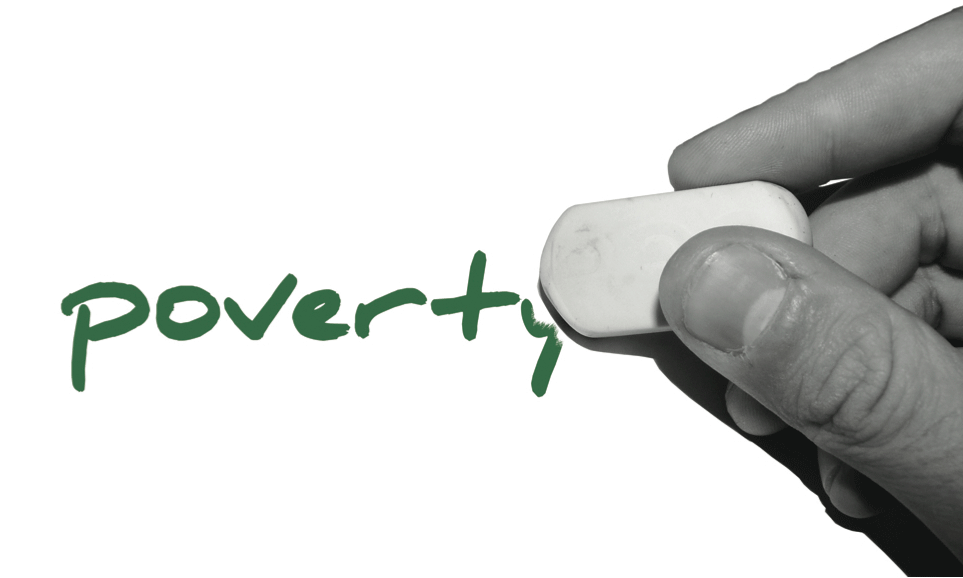
References:
Gray, S. W., & Klaus, R. A. (1965). An experimental preschool program for culturally deprived children. Child Development, 36, 887-898.
Hunt, J. McV. (1961). Intelligence and Experience. New York: Ronald Press.
Early Intervention Can Improve Low-Income Children’s Cognitive Skills and Academic Achievement
National Head Start program conceptualized while psychologists were beginning to study preventive intervention for young children living in poverty.
Practical Application
Head Start began as a great experiment that over the years has yielded prolific results. Some 20 million children and families have participated in Head Start since the sum
Based on research by Hunt, 1961, Gray & Klaus, 1965, and the American Psychological Association, adapted by Juanita N. Baker, Ph. D..
Why as a group do children who live in poverty tend to perform worse in school than children from more privileged backgrounds? In the 1960s, psychologist J. McVicker Hunt with observations and natural experiments argued that intelligence could be shaped early in life by the environment. Results of several studies by psychologists, including Susan Gray and Rupert Klaus (1965), pioneering an experimental preschool program, supported the notion that early attention to physical and psychological development could improve cognitive ability.
Sargent Shriver, President Lyndon Johnson’s chief strategist in the War on Poverty appointed a planning committee of 13 professionals in physical and mental health, early education, social work, and developmental psychology. Their work helped shape the federal Head Start program. The three developmental psychologists in the group were Drs. Urie Bronfenbrenner, Mamie Clark, and Edward Zigler. Bronfenbrenner advocated parent involvement as a cornerstone of Head Start, which proved to be a major contributor to its success. Dr. Zigler (often referred to as the “father of Head Start”) designed Head Start as a laboratory for effective early childhood services.
Hundreds of empirical studies of Head Start outcomes have shown a variety of benefits for most children who participate especially in the areas of school achievement and adjustment.
#094 - Parkinson’s & Depression
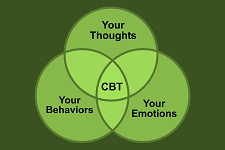
References:
Dobkin, Roseanne D.; Rubino, Jade Tiu; Allen, Lesley A.; Friedman, Jill; Gara, Michael A.; Mark, Margery H.; Menza, Matthew. (2012). Predictors of treatment response to cognitive-behavioral therapy for depression in Parkinson’s disease. Journal of Consulting and Clinical Psychology, 80(4), 694-699. doi: 10.1037/a0027695
Dobkin, R. D., Menza, M., Allen, L. A., Gara, M. A., Mark, M. H., Tiu, J.,. . Friedman, J. (2011). Cognitive-behavioral therapy for depression in Parkinson’s disease: A randomized, controlled trial. American Journal of Psychiatry, 168, 1066–1074. doi:10.1176/appi.ajp.2011.10111669
Based on research by Roseanne Dobkin, et al., 2012, written by Juanita N. Baker, Ph.D..
Are you a caregiver for someone struggling with Parkinson’s disease and perhaps also depression? Caregiving for Parkinson’s disease is stressful, and the patient’s depression adds difficulty. The Caregiver as well as the patient may benefit from extra services.
Psychologist Roseanne Dobkin and colleagues examined the effectiveness of cognitive behavioral therapy (CBT) and facilitating factors for reducing depression and ameliorating symptoms in Parkinson’s disease. Comparing different groups, patients either received CBT therapy or did not and their caregivers received 4 educational sessions or did not. The researchers measured patient’s depression before and after the therapy as well as other relevant physical symptoms of Parkinson’s.
Results suggest that caregiver participation in treatment positively influenced the patient’s acute depression response to Parkinson’s disease. The skills-based nature of CBT treatment, focusing on identifying and analyzing thoughts and behaviors, and emphasizing the importance of homework and practice between sessions (and after therapy has ended) may make CBT especially well suited for the caregivers to aid in the patient’s treatment.
For those with Parkinson’s disease, Cognitive Behavior Therapy for depression is helpful, especially when caregivers can learn in their own sessions to better manage their feelings and provide help for their loved ones.
#096 - Behavioral Effects of Nightmares

References
Kothe, M. & Pietrowsky, R. (2001). Behavioral effects of nightmares and their correlations to personality patterns. Dreaming, 11(1), 43-52.
Based on research by Kothe, Pietrowsky, 2001, written by Kyle Piecora, M.S.
Although nightmares are infrequent, they are scary. Do they affect us the day after when we are awake?
Over one month, German psychologists monitored the sleep quality and dreaming patterns of 41 people who had occasional nightmares, but no mental disorders. Before the study, their personality traits were measured. Daily during the study, participants completed measures of anxiety and mood. If any of the subjects happened to have a nightmare, they also completed the Nightmare Behavior Questionnaire, designed especially for the study. The day after a nightmare, subjects were more anxious and had lower well-being than on days not following a nightmare. They tended to feel more anxious, vulnerable, agitated, and awake, on days after these bad dreams. People who scored high in neuroticism, meaning those who are more prone to experiencing negative emotions, as well as people who had health concerns, reported that nightmares had a larger negative impact on their lives the next day, including experiencing physical complaints.
Nightmares’ effects can linger on, even after we wake up! If you have frequent and disturbing nightmares, seek help from a professional psychologist, as you may find ways to not only sleep better, but function better in your daily life.
#095 - Gender Neutral Language

References
Stout, J.G., & Dasgupta, N. (2011). When he doesn’t mean you: Gender-exclusive language as ostracism for women. Personality and Social Psychology Bulletin, 37, 757-769.
Based on research by Stout, Jane & Dasgupta, Nilanjana, 2012, written by Kyle Piecora, M.S..
We have all felt left out of a group at least once in our lives. Does the language we use lead some people to feel excluded?
Drs. Stout & Dasgupta of the University of Massachusetts Amherst asked men and women to read a job interview containing either masculine, gender exclusive language (like using the word “he”), gender inclusive language using the phrase “he or she,” or gender neutral language like using the word “one.” Next, they rated their feelings of exclusion, as well as feelings of motivation, identification with the job, and their perceptions of being able to advance professionally. Women, in contrast to men, who read male gender exclusive passages felt more left out than those reading gender inclusive or neutral passages. They also felt less motivation and identification with the job.
The typical English gender exclusive style of writing that has been used in the past may be ostracizing women without our intending to. When speaking or writing, use gender inclusive or neutral referents. Substitute humankind for mankind; humans for man when referring to both genders. Exclude specific gendered referents (e.g., An ideal student is one who sets goals for himself. Instead use themselves). You will be including more people and developing better motivation!
#091 - Music Therapy for Premature Infants

Reference
Loewy, J., Stewart, K., Dassler, A., Telsey, A., & Homel, P. (2013). The effects of therapy on vital signs, feeding, and sleep in premature infants. Pediatrics, 131(5), 902-918.
Based on research by Joanne Loewy et al., 2013, written by Kyle Piecora, M.S..
Can music be a valuable tool in aiding in the health and development of premature infants? Infants seem to fall into synchrony with surrounding sounds.
Music therapists, Joanne Loewy and Kristen Stewart, a nurse, a medical doctor, and psychologist Peter Homel looked to see how live music and applied sounds affect infants with respiratory distress syndrome, clinical sepsis, or were small for their gestational age. Infants received musical interventions twice per week over a 2-week span. The interventions included a parent-chosen lullaby, simulation of breath and fluid sounds of the womb, and simulation of heartbeat sounds. The lullaby lowered heart rates and increased babies’ sucking behavior and caloric intake. The heartbeat rhythm also lowered heart rates, in addition to aiding in healthy sucking behavior. Breathing and fluid sounds lowered heart rates after it was administered, and also influenced healthy oxygen saturation. Parental stress was assessed at the beginning and end of the study. Parents indicated that singing to their child or playing lullabies aided in reducing their own personal stress.
Parents, help your baby grow by singing soothing and comforting music to them. This will also help reduce your personal stress as you start bonding on your parenthood journey!
#092 - Hero Rats & Land Mines

Resources:
Poling, A., Weetjens, B. J., Cox, C., Beyene, N., Bach, H. & Sully, A. (2010). Teaching giant African pouched rats to find landmines: Operant conditioning with real consequences, Behavior Analysis in Practice, 3, 19-25.
Walsh, N. E. & Walsh, W. S. (2003). Rehabilitation of landmine victims-the ultimate challenge, Bulletin of the World Health Organization, 81(9), 665-670.
Based on research by Al Poling, et al. 2010, written by Katie Kavanaugh, MS, BCBA and Josh Pritchard, Ph.D..
What do Paul McCartney, rats, and a behavior analyst named Al Poling, all have in common? They all care about preventing further tragedy due to landmines, which according to the United Nations, kill or maim nearly 25,000 people each year.
Dr. Poling uses the principles of behavioral science to teach rats to sniff out land mines in Mozambique. He trained rats using clicker training, often used to train dogs. When an audible click repeatedly comes right before the presentation of food, the rat responds or is “conditioned” to the click sound as a reinforcer. The trainer then teaches the rats to discriminate between the odors of TNT that is the common explosive in landmines by clicking only just before the TNT smell is presented, not before other scents, like dirt and diesel fuel.
Rats are beneficial because they don’t weigh enough to detonate the landmines. They are sent across an area and signal to the trainer when they smell a landmine. The landmine is disabled and removed, saving limbs or lives of anyone who might step on the mine accidentally.
Behavioral science can restore lands and reduce suffering and continual anger at those who placed mines in long ago wars!
#093 - Insomnia & Older Adults

References:
Epstein, D.R., Sidani, S, Bootzin, R.R., & Belyea, M.J. (2012). Dismantling multicomponent behavioral treatment for insomnia in older adults: a randomized controlled trial. Sleep, 35(6), 797-805.
Based on research by Dana Epstein, et al., 2012, written by Juanita N. Baker, Ph.D..
Do you have trouble falling asleep or staying asleep? Insomnia is prevalent among older adults and associated with depressive symptoms, increased hypnotic medication use, falls, and decreased quality of life. Fortunately psychological research identifies several behavioral methods as effective in reducing insomnia that are recommended as first-line therapy after ruling out medical, drug side-effects, and environmental causes.
Stimulus control therapy involves taking steps to control the sleep environment, using the bed only for sleeping and sex, not for reading, watching TV or other activities. Sleep restriction therapy starts with mild sleep deprivation by only sleeping a minimum amount of time always setting the alarm to arise at the same time; then, going to bed earlier, slowly increasing by 15 minutes daily over 3 weeks, so the body resets its internal sleep clock. Dana Epstein and colleagues in Arizona in a study asked, “Are both of these techniques needed and how do they compare used alone?”
Their results showed that stimulus control therapy, sleep restriction therapy, and using both are equally effective in lengthening sleep time, although in follow-up, combining them better maintained their success.
So establish regular sleep times, use your bed only for sleep, and you will more likely have sweet dreams.
#086 - Menstrual Synchrony

References:
Harris, A. L. & Vitzthum, V. J. (2013). Darwin’s Legacy: An Evolutionary View of Women’s Reproductive and Sexual Functioning. Journal of Sex Research, 50 (3–4): 207–46. doi:10.1080/00224499.2012.763085. PMID 23480070.
McClintock, M. K. (1971). Menstrual synchrony and suppression. Nature, Vol 229(5282), Jan 1971, 244-245. doi: 10.1038/229244a0
Wilson, H., Kiefhaber, S., & Gravel, V. (1991). Two studies of menstrual synchrony: Negative results. Psychoneuroendocrinology, 16 (4): 353–9. doi:10.1016/0306-4530(91)90021-K. PMID 1745701.
Ziomkiewicz, A. (2006). Menstrual synchrony: Fact or artifact? Human Nature, Vol 17(4), 2006, 419-432. doi: 10.1007/s1211
Based on research by Martha McClintock, (1971). Psychology Science Minute written by Juanita N. Baker, Ph.D..
How can we trust science when it seems to keep changing its mind? If new research seems plausible, and is amazing and exciting, often the first published study gets attention and the public as well as professionals believe the results, especially when published in prestigious scientific journals. However, science is a method for correcting errors, where scientists scrutinize studies and look for other explanations for results. Also, other scientists must repeat the original research before results are fully accepted.
In 1971, Martha McClintock found that when women live close together, their menstrual cycles would move to occur closer to the same time. She hypothesized women would become in sync with each other through sensing each other’s pheromones. However, since her study, other researchers identified methodological flaws, questioned proposed explanations, and completed refined studies that failed to find menstrual synchrony. Menstrual cycles and days between cycles vary in length, therefore women’s cycles will likely change and overlap over months. Intimate information is not usually shared; so many women may believe their cycles are in sync when discovering a friend is also menstruating.
Let’s conclude from these studies, to always scrutinize new research. Wait for verification by other scientists before acting on it.
#087 - Gain-framed Messages

References:
Rothman, A. J., Bartels, R. D., Wlaschin, J., & Salovey, P. The strategic use of gain- and loss-framed messages to promote healthy behavior: How theory can inform practice. Journal of Communication, 56, S202-S220.
Based on research by Rothman et al, 2006. Psychology Science Minute written by Kyle Piecora, M.S..
Are the ways you communicate messages important in changing behavior in others? Psychologist Alexander Rothman and collaborators learned certain kinds of communication might serve to be very useful, especially concerning people’s health.
Gain-framed statements are ones that refer to the good things that will happen in the future, as well as bad things that will not happen. Gain-framed messages were found to be more effective when targeting preventative behaviors, i.e., those that will prevent the onset of disease or accidents. For example, messages that speak about potential gains may motivate people to wear seatbelts or apply sunscreen.
Loss-framed messages refer to bad things that will happen and good things that will not happen. Loss-framed messages were found more effective when requesting people go for screening and diagnostic procedures, behaviors that may detect the presence of a disease. To illustrate, warning of potential dangers may help people initiate more regular cancer screenings.
When thinking about your health, imagine the things you could gain by changing your behavior, and you will be more likely to be successful. In turn, think about what you may lose if you do not take consistent measures to find out if you are unhealthy. Also, use these messages to influence other people you know and love!
#085 - Behavior and the Moon

References:
Kelly, Ivan; Rotton, James; Culver, Roger (1986), “The Moon Was Full and Nothing Happened: A Review of Studies on the Moon and Human Behavior,” Skeptical Inquirer, 10 (2): 129–43.
Martens, R.; Kelly, I. W.; Saklofske, D. H. (1988). “Lunar Phase and Birthrate: A 50-year Critical Review.” Psychological Reports 63 (3): 923–934. doi:10.2466/pr0.1988.63.3.923. ISSN 0033-2941.
Rotton, J., & Kelly, I. W. (1985). Much ado about the full moon: A meta-analysis of lunar-lunacy research. Psychological Bulletin, 97(2), 286-306. doi:10.1037/0033-2909.97.2.286
Based on research by James Rotton and I.W. Kelly, 1985. Psychology Science Minute written by Juanita N. Baker, Ph.D..
Why are humans susceptible to erroneous conclusions? Reasonable sounding statements can mislead us. Being aware of this common error can help us think more critically.
Every month, we see the beauty of the full moon, markedly changing our night sky. Since its gravitational pull is strong enough to influence ocean tides, it seems “reasonable” that there could be a lunar effect influencing human or other animal behavior. James Rotton, Florida International University, and Ivan Kelly, University of Saskatchewan, reviewed many published studies that have examined whether the full moon was associated with birth rate, mental hospital admissions, psychiatric disturbances, suicide, crisis calls, homicide, or other criminal offenses. They found no overall significant association between the full moon and any of these events when compared to non full moon days.
Since the full moon is so noticeable, emergency personnel and the public may take note when something major happens at the same time. Yet, when these same events occur the other 25 days of the month, they do not notice this lack of association. Thus illusionary correlations can lead to myths.
Next time someone states something amazing, stop and think, “Yes, it sounds plausible, but what is the scientific evidence?”
#081 - Bulimia & CBT

References:
Wilson, G. T., & Fairburn, C. G. (2002). Eating disorders. In P. E. Nathan & J. M. Gorman (Eds.), Treatments that work (2nd ed., pp. 559–592). New York: Oxford University Press.
Wilson, G. T., Grilo, C. M., & Vitousek, K. M. (2007). Psychological treatment of eating disorders. American Psychologist, 62, 199-216.
Wilson, G. T., Fairburn, C. G., Agras, W. S., Walsh, B. T., & Kraemer, H. D. (2002). Cognitive behavior therapy for bulimia nervosa: Time course and mechanisms of change. Journal of Consulting and Clinical Psychology, 70, 267–274.
Based on research by G. Terrence Wilson, Ph.D. and Christopher G. Fairbairn, 2002. Psychology Science Minute written by Juanita N. Baker, Ph.D..
With so much emphasis in films, advertising, and dating culture on “sexy, thin attractiveness” yet frequent advertising about fast foods that leads to weight gain, is it a wonder that many young women use extreme techniques to control their weight?
Bulimia is an emotional disorder creating an obsessive desire to lose weight by self-induced vomiting, laxative misuse, purging, fasting, or excessive exercise. These dangerous practices lead to feeling starved, then binge eating, potassium loss, and health deterioration. Body shape and weight unduly determine self-esteem.
Foremost researchers on eating disorders, G Terrence Wilson and C.G. Fairbairn reviewed extensive research and concluded that cognitive behavioral therapy has shown in controlled trials to be more acceptable and effective than other psychological treatments or antidepressant medication, especially in producing a complete cessation of binge eating and purging. This psychotherapy consists of about 20 individual sessions of cognitive and behavioral procedures designed to enhance motivation for change, replace dysfunctional dieting with a regular and flexible pattern of eating, decrease undue concern with body shape and weight, and prevent relapse.
There is hope. If you find yourself or a friend binge eating and purging, find an experienced professional using cognitive behavioral therapy, the most researched evidence-based treatment for bulimia.
#074 - Environmental Food Cues

Reference:
Prinsen, S., de Ridder, D.T.D., & de Vet, E. (2013). Eating by example. Effects of environmental cues on dietary decisions. Appetite, 70, p. 1-5.
Based on Research by Sosja Prinsen, Denise T.D. de Ridder, et al, 2013. Psychology Science Minute written by Kyle Piecora, M.S..
Do you ever wonder what factors might influence you to eat more or less of certain foods?
Psychology researchers in the Netherlands placed a bowl of chocolates on the counter at a bakery, either by itself, or with a bowl of empty wrappers. The presence of empty wrappers was manipulated, to suggest whether others had or had not eaten chocolate. When the empty wrappers were present, customers were over 2 times more likely to take a chocolate!
In another study, students were asked to read information about the effects of glucose levels on thinking and told to relax and eat, in order for their glucose levels to be ready for a new task requiring problem solving. They were presented a snack tray containing healthy and unhealthy foods. Next to the tray were different wrappers indicating whether others were eating the nutritious or unhealthy snacks. Students picked up environmental cues and tended to choose the type of snack that they thought others ate!
Be aware that others’ examples influence your food choices! Set your own path towards healthy eating by surrounding yourself with nourishing food choices and those who are eating wholesomely. Realize also, that your example may influence others to make healthy food choices, too.
#075 - Women Requesting Salary

References:
Barron, Lisa A. (2003). Ask and you shall receive? Gender differences in negotiators’ beliefs about requests for a higher salary. Human Relations, 56, 6, 635-662. doi: 10.1177/00187267030566001
Kolb, D. M. (2009), Too Bad for the Women or Does It Have to Be? Gender and Negotiation Research over the Past Twenty-Five Years. Negotiation Journal, 25: 515–531. doi: 10.1111/j.1571-9979.2009.00242.x
Based on Research by Lisa Barron, Ph.D., 2003. Psychology Science Minute written by Kyle Piecora, M.S..
Have you ever asked for a raise? If you are a woman you are less likely to have asked than a man, and if you are a man, you probably asked for a higher amount than your female colleagues.
To investigate how gender affects salary negotiations, Dr. Lisa Barron used pretend negotiations and post-negotiation interviews. Male and female MBA students negotiated with a hiring manager, mimicking naturally occurring salary negotiations. A “hiring manager,” offered a position with a fake company, with a given salary and bonus. Several days beforehand, the participants were informed that MBA peers had gotten similar positions at other companies with 10% higher salaries and double bonuses. Results indicated that men’s initial salary requests were significantly higher than women’s requests. Furthermore, those who asked for higher salaries received higher salaries.
The participants who requested higher salaries believed in their worth, that they were entitled to more money and needed to prove themselves; while those who requested the same salary as others were unsure of their worth and felt entitled only to the same salary as others.
Women, you can have some influence on closing that obstinate gender gap in wages. Value the skills you bring to a position and be willing to negotiate. Ask for a higher salary. You likely will earn more.
#071 - Visual Impact on Immunity

References:
Schaller, M., Miller, G.E., Gervais, W.M., Yager, S., & Chen, E. (2010). Mere visual perception of other people’s disease symptoms facilitates a more aggressive immune response. Psychological Science, 21, 5, 649–652.
Segerstrom, S.C., & Miller, G.E. (2004). Psychological stress and the human immune system: A meta-analytic study of 30 years of inquiry. Psychological Bulletin, 130, 601–630.
Based on Research by Mark Schaller, et al 2010. Psychology Science Minute written by Juanita N. Baker, Ph.D..
Would it be good for you to watch your friend struggling with her cold symptoms but not be so near to get her cold germs?
Social Psychologist Mark Schaller and colleagues showed two groups different slide shows: either showing people with obvious infectious diseases (e.g., pox, skin lesions, sneezing, mucous draining from their noses) or people brandishing firearms, most of which were aimed directly at the participants. The researchers then analyzed participants’ blood tests that were taken before (when people were relaxed) and after (when participants in both conditions were stressed) viewing the slides. They found significantly increased levels of white blood cells’ production of IL-6, (an indicator of an immune response) in participants shown the diseased symptoms rather than the weapons slides. However, participants having seen the weapons slides self-reported more emotional distress. So our bodies differentiate between types of stressful conditions and work to prepare for disease without our knowing it!
This automatic immune response to our recognition of disease may have been adaptive in human history, but is it still? What is the impact on our immune systems to repeatedly watching cold medicine advertisements showing some actor having cold symptoms? Repeated immune responses when there is no real threat can be detrimental. So don’t watch that TV Ad!
#070 - Social Pressure on the Supreme Court

References:
Asch, Solomon E. (1955). Opinions and social pressure. Scientific American, 193, 5, 31-35.
Granberg, D. and Bartels, B. (2005), On Being a Lone Dissenter. Journal of Applied Social Psychology, 35: 1849–1858. doi: 10.1111/j.1559-1816.2005.tb02198.x
Based on Research by Solomon Asch, Ph.D., 1955; Donal Granberg and Brandon Bartels, 2005. Psychology Science Minute written by Juanita N. Baker, Ph.D..
Psychology Research is often applicable to other fields. For example, sociologist Donald Granberg and political scientist Brandon Bartels applied the research done by psychologist Solomon Asch on social pressure to examine how difficult it is to be a lone dissenter on the Supreme Court. They wanted to know if even esteemed Supreme Court Justices find it difficult to dissent when they stand alone. Granberg and Bartels examined voting patterns of 4,178 Supreme Court decisions from 1953-2001. They found that the nine Justices most often voted unanimously, a remarkable, 35% of the time. There were 5-4 splits 21% of the time, 6-3 splits 20%, and 7-2 splits 14%. Least frequently they voted 8-1 splits, only 10% of the time. During this period 29 Justices served and varied widely in voting as a lone dissenter.
What kind of judge does it take to go against such esteemed colleagues? Evidently the stature of Justice William O. Douglas, who stood alone more than any other judge, 6% of the time. When subject to social pressure, take courage from this study. Model Justice Douglas’ example and stand up for what you think is right.
#066 - Sports Concussions and Recovery

References:
Majerske, C. W., Mihalik, J. P., Ren, D., Collins, M. W., Reddy, C. C., Lovell, M. R., & Wagner, A. K. (2008). Concussion in sports: Postconcussive activity levels, symptoms, and neurocognitive performance. Journal of Athletic Training, 43(3), p. 265-274.
Based on Research by Cynthia Majerskeh, MD, Jason Mihalik, M.S., Dianxu Ren, Ph.D., et al. Psychology Science Minute written by Kyle Piecora, M.S..
The world of youth athletics has never been bigger. Countless families, who recognize the social and health benefits that athletics offer, enroll their children in youth sport leagues or school teams, travel to weekend sporting events, and cheer on friends and loved ones.
However, with the growing popularity and competitiveness, comes more awareness of major negative aspects of sports: concussions, mild traumatic brain injury (MTBI), or temporary loss of brain functioning. It is estimated that over 1 million MTBIs occur in the US each year, with many happening to high school and youth athletes. While concussions are immediate health risks, they also cause difficulties down the road. Leading neuropsychologists and medical researchers collaborated at the University of Pittsburgh; measuring athletes’ activity levels post concussion. They found that the higher the activity level in either physical or cognitive tasks, the longer it took to recover. Intense cognitive or physical activity (video games, school work, texting, sports, exercise) may prolong difficulties with attention, concentration, memory, emotional instability, headaches, and fatigue.
Parents, coaches, and players: after a concussion, be active in moderation or risk continuing problems! Florida Tech Faculty and psychologist trainees engage in concussion research and assessment with the athletic department, and have contributed much research about the topic.
#067 - Nature and Surgery

References:
Roger S. Ulrich (1984). View through a Window May Influence Recovery from Surgery. Science, New Series, 224, 4647, 420-421.
Published by: American Association for the Advancement of Science
Article Stable URL: http://www.jstor.org/stable/1692984
Based on Research by Roger S. Ulrich, Ph.D.. Psychology Science Minute written by Juanita N. Baker, Ph.D..
Does viewing nature from a hospital window influence a surgical patient’s emotional state and affect their recovery? Stressed persons observing scenes with vegetation and especially water, compared with urban scenes lacking natural elements, apparently have positive feelings and reduced fear, perhaps by blocking stressful thoughts. Thus patients may benefit from viewing nature that draws their interest and attention and provides peace and relaxation.
To find out, environmental psychologist Roger Ulrich reviewed recovery records of patients randomly assigned to rooms with a single window viewing deciduous trees or with a window viewing a brown brick wall. The patients had the same nursing staff, arrangement of beds, and double occupancy. Patients, ages 20-69. all had gall bladder surgery without complications. Those with windows viewing trees spent less time in the hospital, had fewer negative attitudes recorded by nurses, took less narcotics to reduce pain, and had slightly fewer minor post-operative complications.
How essential is designing hospitals to have views of natural areas or gardens? It speeds recovery and shortens hospital stays. Perhaps giving flowers is actually important to healing; bringing nature to the patient as well as demonstrating loved ones’ support! Billowing clouds, interesting trees, or flowing water…nature’s best may be essential to our health.
#069 - Social Pressure

References:
Asch, Solomon E. (1952). Chp. 16 Group forces in the modification and distortion of judgments, (pp. 450-501). In Asch, Solomon E. (1952). Social psychology. Englewood Cliffs, NJ, US: Prentice-Hall, Inc. xiii, 649 pp. doi: 10.1037/10025-016
Asch, Solomon E. (1955). Opinions and social pressure. Scientific American, 193, 5, 31-35.
Based on Research by Solomon Asch, Ph.D., 1952, 1955. Psychology Science Minute written by Juanita N. Baker, Ph.D..
Are you embarrassed to express your opinion if it differs from friends or community, especially if you feel you are all alone in that opinion? Social Psychologist, Solomon Asch, wanted to understand how people react to strong social pressure.
To groups of 6 people, Asch showed pictures one at a time, of lines with obviously different lengths. Asch asked them “Which line is longer?” One participant was always asked to state his opinion last. The other five were research accomplices. Asch instructed the accomplices to provide correct answers for the first few trials; then all give the same wrong answer. The participant showed discomfort when his perception differed from the group’s statements. Should he go along with the group’s odd response or state his own real opinion?
The outcome? Although a third of the participants always stated the obvious reality, the majority of participants at one time or another went along with the group. However, if just one accomplice stated the reality (contrary to the other accomplices who gave the wrong answer), the participant never went along with the group.
Be aware of and do not give in to social pressure. If you disagree, or see others doing harm or bullying, speak out. Your one voice makes a difference!
#060 - Negotiating with Precise Offers

References:
Mason, M. F., Lee, A.J., Wiley, E.A., Ames, D.R. (2013). Precise offers are potent anchors: Conciliatory counteroffers and attributions of knowledge in negotiations. Journal of Experimental Social Psychology, 49, 4, 759–763
Based on Research by Malia F. Mason, Ph.D.. Psychology Science Minute written by Kyle Piecora, M.S..
Whether you are trying to purchase a new car, discussing salary with a new employer, or haggling at garage sales, navigating your way through these tough economic times can be difficult. Is there a trick to negotiating better bargains?
Psychologist Malia Mason and researchers at Columbia University sought to shed light on the practice of negotiating. When trying to make a deal, many people start off by offering what is a rounded off number. The researchers put subjects into hypothetical bargaining situations that had them making counteroffers on certain goods and services after receiving an initial offer of a rounded dollar price (like $20), or more precise prices, such as a specific over offer price (like $20.15), or a specific under offer price (like $19.85). Results showed that when participants received precise, rather than rounded number offers, their counteroffers were significantly closer to the asking price. This was found to be true regardless of the goods or services, or whether or not the participants were pretending to be sellers or buyers!
When you make a more precise offer, others perceive you as more reasoned and well-informed, facilitating your chance of making a better deal. If you find yourself negotiating with someone, be precise and confident! It will give you the edge in making a great deal!
#062 - Inhibition and Superstition

References:
Lindeman, M., Riekki, T., & Hood, B. M. (2011). Is weaker inhibition associated with supernatural beliefs? Journal of Cognition and Culture, 11, 231-239.
Based on Research by Marjaana Lindeman, Tapani Riekki, & Bruce M. Hood. Psychology Science Minute written by Kyle Piecora, M.S..
Do you ever wonder why some people maintain superstitions and supernatural beliefs like telepathy, ghosts, and Gods and others don’t?
Researchers from the Universities of Helsinki and Bristol think they may have found an important link in answering why people hold to these beliefs. First, participants completed a self-report measure about their level of supernatural beliefs. After selecting only the strongest believers and the strongest skeptics, the group members took two psychological assessments designed to measure inhibition, or the control and conscious restraint of reasoning behaviors. The results indicated that the believers demonstrated more errors on routine but easy tasks requiring careful reasoning and attention to detail, identifying them as less inhibited. Therefore weak inhibition predicted having more paranormal, magical, and superstitious beliefs.
This finding is in line with the idea that inhibition is developed as the brain matures which is why children generally have more naïve, superstitious beliefs than adults. The notion is also supported by the rise in superstition in those with dementia, where social inhibition declines. Next time you encounter a situation or set of ideas that you cannot explain, resist jumping to conclusions! Instead, use your intellect, reasoning, and the scientific method to search for the answer.
#063 - Work or leisure?

Reference:
ten Brummelhuis, L. L., & Bakker, A. B. (2012). Staying engaged during the week: The effect of off-job activities on next day work engagement. Journal of Occupational Health Psychology, 17(4), 445-455. doi: http://dx.doi.org/10.1037/a0029213
Based on Research by Lieke ten Brummelhuis, Ph.D. & Arnold Bakker, Ph.D.. Psychology Science Minute written byTrevor McGlochlin & Erin Richard, Ph.D..
Do you give extra hours to work, and have trouble putting away your work materials when you get home? At least you know your sacrifice will get you that promotion or grade, right? Well, if you think you are getting ahead of the game by putting in long extra hours at the office, library or home, you might want to rethink your game plan!
Sociologist Dr. Lieke ten Brummelhuis of University of Pennsylvania and psychologist Dr. Arnold Bakker of Erasmus University, Rotterdam, found employees who used off-job time for work-related tasks actually felt less enthusiastic, energized, and inspired at work than employees who did not engage in work-related tasks when away from the job. Additionally, if employees sacrifice relaxing activities after work, they were less vigorous and engaged in work the next day. Social, off-job leisure, physical, and relaxation activities enhanced their performance but also helped them stay relaxed and excited about work!
So the next time you think about going out with your friends instead of working late, do not feel guilty. Instead, remember to work hard with enthusiasm during work hours, so you CAN have the best of both worlds! Balance work and play for fun as well as productivity.
#056 - Stereotypes, Racial

References:
Good, C., Aronson, J., & Inzlicht, M. (2003). Improving adolescents’ standardized test performance: An intervention to reduce the effects of stereotype threat. Journal of Applied Developmental Psychology, 24, 645-662.
Steele, C.M. (1997). A threat in the air: How stereotypes shape intellectual identity and performance. American Psychologist, 6, 613-629.
Steele, C.M. & Aronson, J. (1995). Stereotype threat and the intellectual test performance of African Americans. Journal of Personality and Social Psychology, 69, 797-811.
Spencer, S. J., Steele, C. M., & Quinn, D. M. (1999). Stereotype threat and women’s math performance. Journal of Experimental Social Psychology
Based on Research by Claude Steel, Ph.D. and Jason Aronson, Ph.D.. Psychology Science Minute written by Juanita N. Baker, Ph.D..
Do negative racial stereotypes play a role in our taking academic and intellectual tests?
Psychologists Claude Steel & Jason Aronson studied the influence of racial stereotypes. They asked African American students to identify their race before taking an intellectual test, thereby directing students’ attention to their race. When this cueing occurred, the African American students got only half as many questions right as when race was not mentioned. Half! They additionally found that when intelligence and achievement are explained to students as characteristics that are not “fixed” but instead can be improved, then test scores increased and the cultural gap decreased.
It seems humans unconsciously soak up negative stereotypes easily. Of most concern, people of color begin to believe these negative stereotypes about their own race. Unfortunately, the notion of possibly confirming negative stereotypes may lead African American students to lose motivation and thus perform less well academically.
Negative stereotypes whether overt or subtle, do cause harm. Students’ achievement can surpass expectations when not curtailed by limiting stereotypes. Remember work hard and set up your own expectations for success. Go for it!
#058 - Occupational Stress and Employee Control

For more details see:
http://www.apa.org/research/action/control.aspx
American Psychological Association, November 3, 2003
Cited Research
Hackman, J. R. and G. R. Oldham (1976). Motivation through the design of work. Organizational Behavior & Human Decision Processes, Vol. 16(2), pp. 250-279.
Karasek, R. A. (1979). Job demands, job decision latitude, and mental strain: Implications for job redesign. Administrative Science Quarterly, Vol. 24, pp. 285-308.
Based on Research by J. Richard Hackman & Greg R. Oldham; and Robert Karasek. Psychology Science Minute written by American Psychological Association, adapted by Juanita N. Baker, Ph.D..
Do you or your employees help make major decisions at work? Psychological research has found that employee control over work can reduce stress and enhance their motivation and growth on the job.
Industrial psychologists Richard Hackman and Greg Oldham discovered that how much latitude employees have at work – their control over job-related decisions – affects their health, morale and ability to handle their workload. They found, that control enhanced motivation and growth – in blue collar, white collar and professional positions. Robert Karasek’s research found that workers whose jobs rated high in job demands yet low in employee control reported significantly more exhaustion after work, trouble awakening in the morning, depression, nervousness, anxiety, and insomnia than other workers. When workers facing high demands had more control, their stress was lower. Karasek’s findings revealed that employers could reduce job strain by increasing employee control or decision latitude, without reducing actual workload or sacrificing productivity.
These major insights have led to ongoing improvements in workplaces to give workers a greater sense of control, thus improving worker’s health, productivity and job satisfaction. Employers, you can reduce employee stress and protect workers’ health by giving them more latitude in making their own decisions and choices in their work
#057 - Terrorism and Prejudice

References:
Das, E., Bushman, B. J., Bezemer, M. D., Kerkhof, P., & Vermeulen, I. E. (2009). How terrorism news reports increase prejudice against outgroups: A terror management account. Journal of Experimental Social Psychology, 45(3), 453-459.
Based on Research by Enny Das, Ph.D.. Psychology Science Minute written by Kyle Piecora, M.S..
With the devastating attack on Boston, it is natural for people to have thoughts about their own mortality. Because humans are both wired for survival and have the capability of introspection, thoughts of death may create feelings of fear and panic. These are the reactions that terrorists thrive on. One way humans cope with death is to believe in immortality or the idea of living on in others’ memories.
Another, albeit unfortunate, defense against death anxiety may be prejudice, especially with regards to terrorism. To determine whether thoughts of death played a role in predicting prejudice, a Dutch study led by Dr. Enny Das exposed individuals to either news about recent terrorism or neutral events. The subjects then completed a word-completion task measuring thoughts about death, and measures of self-esteem and degree of prejudice against Arab individuals. Those who viewed terrorism in the news thought about death more and, especially for those with low self-esteem, were more prejudicial.
When confronted by so much violence in the news, understand that our resulting fears of death may cause us to suppress our fears by becoming more prejudiced. To prevent this, remember that the actions of individuals do not define an entire group.
#051 - Classically Conditioned Smoking Cues

References:
Lazev, Amy B., Herzog, T. A., & Brandon, T.H. (1999). Classical conditioning of environmental cues to cigarette smoking. Experimental and Clinical Psychopharmacology, 7(1), p. 56-63.
See previous Psychology Science Minute for understanding more about Classical Conditioning:
50 Pavlov Classical Conditioning
Based on Research by Amy B. Lazev, Ph.D.. Psychology Science Minute written by Kyle Piecora, M.S.
The average smoker smokes 20 cigarettes per day, taking 11 puffs each. In one year, this means 80,000 drug hits. Classical conditioning suggests that when smoking repeatedly follows a neutral stimulus, conditioned responses should develop to that stimulus.
Researchers Dr. Lazev and colleagues demonstrated that smoking cues can trigger cravings for tobacco, making quitting difficult and relapse more likely. For 22 days, 8 smokers received different sensory cues such as colored lights, specific music, or citrus or cinnamon scents while either smoking or not smoking. Smokers reported a much greater urge to smoke, and their pulse rates increased, when they encountered the environmental cues that were paired with smoking, not to cues paired with nonsmoking. People automatically learned to want to smoke when certain cues are present.
Stopping smoking is complicated but doable, involving more than just willpower. To change a habit, notice the sights, smells, sounds you associate with it. What we know from research is that if you consistently do not smoke in the presence of those cues, the cues will lose their power to create smoking urges. Avoid those cues and practice resisting the urge to smoke in their presence. Self-awareness of the cues can help us monitor and change our behaviors to live healthier lifestyles!
#052 - Classically Conditioned Emotional Response

Reference:
Watson, J.B. & Rayner, R. (1920). Conditioned emotional reactions. Journal of Experimental Psychology, 3, 1-14.
Based on Research by John B. Watson, Ph.D.. Psychology Science Minute written by Juanita N. Baker, Ph.D.
John B. Watson, wanting to study humans by observing behaviors, wondered if neutral stimuli associated with fearful stimuli would trigger fear responses by themselves. Extending Pavlov’s classical conditioning work in 1921 he studied Albert, an 11 month-old child. Watson first allowed Albert to play with a dog and a friendly white rat.
Watson wondered, “Would Albert become afraid of the white rat if a loud, frightening noise sounded when he was touching the rat?” Yes. After the loud noise sounded with the rat 2 times, Albert showed reluctance to touch it. After 7 times he cried violently and crawled away when he saw the rat, even 6 months later. Watson’s experiment suggested that classical conditioning could cause phobias in humans.
Many traumatic experiences become associated with certain sensory cues. For example, for war veterans: airplane noises, explosions, specific smells were associated with fear of death. Thus, in civilian life airplane and loud noises, firecracker explosions, or putrid smells might set off a panic response.
Remembering learned triggers, it might be helpful to say, “Oh, that’s my trigger, but I’m here now, safe! The frightening past experience is not happening again. Focus on the present, what I touch is real, now.”
#053 - Vaccines and Autism

References:
Hviid, A., Stellfield, M., Wohlfahrt, J., & Melbye, M. (2003). Association between thimerosal-containing vaccine and autism. Journal of the American Medical Association, 290(13), p. 1763-1766.
Madsen, K. M., Lauritsen, M. B., Pedersen, C. B., Thorsen, P., Plesner, A., Andersen, P. H., & Mortensen, P. B. (2003). Thimerosal and the occurrence of autism: negative ecological evidence from Danish population-based data. Pediatrics, 112(3), p. 604-606.
Based on Research by Medical & Psychology researchers. Psychology Science Minute written by Kyle Piecora, M.S.
Autism disorder diagnoses include individuals with symptoms such as impaired social interaction, repetitive behaviors, and delayed development. Psychologists have developed measures to diagnose early childhood autism and collaborate with medical researchers.
Autism is on the rise. Many people blamed childhood vaccinations containing the mercury-based preservative thimerosal as the cause. However, numerous studies in the Journals of the American Medical and Pediatric Associations, demonstrate that mercury found in these shots are not the culprits. One study, following babies born in Denmark, found that the risk of autism and other related disorders did not differ significantly between those who were vaccinated with shots containing and not containing mercury. Rates of Autism continue to rise despite thimerosal being removed from vaccinations in 2001. Unfortunately, a research paper using questionable science that was later retracted by a prestigious journal linked autism to vaccines. The erroneous link caused many parents to not vaccinate their children or treat their autistic children with unproven and possibly dangerous treatments.
Science eventually corrected itself but in the meantime, consumers were led astray. Every effort must go to inform parents of the many studies showing no link between vaccines and autism and to the research demonstrating children with autism who receive early intervention can make tremendous gains.
#055 - Gender Stereotypes

References:
Good, C., Aronson, J., & Inzlicht, M. (2003). Improving adolescents’ standardized test performance: An intervention to reduce the effects of stereotype threat. Journal of Applied Developmental Psychology, 24, 645-662.
Spencer, S. J., Steele, C. M., & Quinn, D. M. (1999). Stereotype threat and women’s math performance. Journal of Experimental Social Psychology, 35, 4-28.
Steele, C.M. (1997). A threat in the air: How stereotypes shape intellectual identity and performance. American Psychologist, 6, 613-629.
Based on Research by Dr. Claude Steel. Psychology Science Minute written by Juanita N. Baker, Ph.D..
As we grow up, we pick up our culture’s stereotypes, even about ourselves. These attitudes can be damaging to us in many ways, unbeknownst to us.
Claude Steel and colleagues elicited gender stereotypes by asking questions of men and women before taking a test of visuospatial ability, typically a mechanical skill that seems similar to traditional work done more by males than females.
To subtly remind them about their gender, one group was asked beforehand “Do you live in a coed or single sex dorm?” Men did 30% better than women! When a second group was asked an innocuous question, men still did 20% better than women. However, when they were reminded that they were highly selected for their achievements by asking, “What made you decide to attend this elite private liberal arts school?” there were no differences! The supposed gender gap slammed shut. Few differences exist in actual intelligence or abilities in either race or gender, yet believing the stereotype that males perform better impairs females’ performance tremendously.
Girls and women buy into messages that they are less competent than boys and men. Our performance is often shaped by our expectations instead of our true ability. Before the next challenge, remember your capabilities!!
#046 - Multi-Tasking

References:
Sanbonmatsu, D. M., Strayer, D. L., Medeiros-Ward, N., & Watson, J. M. (2013). Who multi-tasks and why? Multi-tasking ability, perceived multi-tasking ability, impulsivity, and sensation seeking. PLOS ONE, 8(1), doi:10.1371/journal.pone.0054402.
Based on Research by David M. Sanbonmatsu, David L. Strayer*, et al, 2013. Psychology Science Minute written by Kyle Piecora, M.S.
Our lives seem busier and busier. Those in school are juggling assignments and social lives, while others are trying to balance work, parental, and other responsibilities. Are certain people better at doing multiple things at once?
Researchers at the University of Utah assessed 310 students’ skills of multitasking and levels of impulsivity (or the desire to reduce boredom without concern for consequences). They also measured students’ beliefs about their effectiveness at and use of multitasking, especially regarding cell phone use while driving. The results showed that those who do not multitask are often the ones who are better able to multitask. However, people who are unable to block out distractions have higher levels of impulsivity, and actually multitask more. This means that those who do multitask are often unable to do so well! The individuals, who thought they multitasked well, indicated they drove and used their cell phone more.
Our brains can only focus on one thing at a time. While multitasking we alter our attention back and forth. Yet driving requires split second timing and thus our full attention. Cell phone use is a distraction demanding your attention. So multitaskers, set up for survival. Make a hard safety rule not to use that cell phone while driving!
#045 - Intensive Shared Book Reading for Preschoolers

Reference:
Pollard-Durodola, S.D., Gonzalez, J.E.; Simmons, D.C.; Kwok, O., Taylor, A.B., Davis, M.J., Kim, M., & Simmons, L. (2011). The effects of an Intensive Shared Book-Reading intervention for preschool children at risk for vocabulary delay. Council for Exceptional Children, 77, 2, 161-183.
Based on Research by Sharolyn D. Pollard-Durodola, Ph.D. Psychology Science Minute written by Kyle Piecora, M.S.
What is the best way to read to children to enhance their vocabularies, get them involved, and lead to their loving books? Reading achievement is essential for school success. New research shows how one reads to a child makes a difference.
Using preschool children at risk for vocabulary delays, researchers led by Dr. Sharolyn Pollard-Durodola of Texas A&M University, compared the effects of an Intensive Shared book reading practice with regular book reading.
Teachers were taught to ask open-ended questions, like. “What do you think will happen next?” They also related new vocabulary words to the children’s everyday lives, by asking questions like “Where do you go to buy apples?” These strategies increase future comprehension and expand vocabulary. Other Intensive Shared Book Reading practices included reading several books on one theme, relating the story to what is learned in science, and using new vocabulary words in other settings. Children who engaged in this Intensive Shared-reading model demonstrated significantly better vocabulary learning.
You, too, can enhance children’s vocabulary through reading aloud and asking questions. Relate the story to the child’s surroundings. Read often, varying reading between fiction and non-fiction. Ask connecting questions to stimulate curiosity and understanding of the world.
#042 - Volunteering and Well-Being

Reference:
Morrow-Howell, N., Hinterlong, J., Rozario, P.A., and Tang, F. (2003). Effects of Volunteering on the Well-Being of Older Adults. Journal of Gerontology: SOCIAL SCIENCES, 58B, 3, S137–S145.
Based on Research by Nancy Morrow-Howell, Ph.D. et al. Psychology Science Minute written by Kyle Piecora, M.S.
We humans, as social animals, each depend upon the helpfulness and kindness of others for our survival and emotional well-being. Volunteers put in much time in our communities. Could we be designed so that the helper as well as the helped benefit from volunteering?
Using data from the Americans’ Changing Lives Study, the longest ongoing longitudinal research project in the U.S., researchers sought to see if well-being later in life is affected by volunteering. Studying those over 60 years old, they measured at three different times over 8 years many variables including volunteerism health, and their impressions of well-being. The results showed that the more hours volunteered up to 2-3 hours/week, the greater the positive influence on one’s well-being. Volunteering more than 3 hours/week did not make a difference. People of varying race, gender, or identity with the mainstream culture equally benefited from volunteering.
Not only are you, the volunteer, in the unique position to change other’s lives, but your own as well. The busiest people seem to volunteer the most, but helping others and ourselves simultaneously sounds like it is worth our time! Join the community of volunteers!
#044 - Parent Stress and Adolescent DNA Change

References:
Essex, M. J., Boyce, Hertzman, C., Lam, L. L., Armstrong, J. M., Neumann, S. M. A., & Kobor, M. S. (2011). Epigenetic vestiges of early developmental adversity: Childhood stress exposure and DNA methylation in adolescence. Child Development, 00(0), p. 1-18.
Based on Research by Marilyn J. Essex, Ph.D. Psychology Science Minute written by Kyle Piecora, B.S.
Parents worry about giving their children proper nutrition, and a good environment. And we know that a stressful home environment often affects a child’s psychological development. But recent research has discovered that it affects even more than that. Parental stress can affect the expression of genes in young children.
Universities of Wisconsin and British Columbia researchers looked at the way stress can affect the genes of offspring. They measured the stress levels of 109 parents at different stages of their children’s development. At the same time, they collected DNA samples from the children’s cheeks. They found that maternal stressors in infancy and paternal stressors during preschool years were most strongly predictive of altering DNA methylation in adolescence. Methylation, meaning the gene expression pattern in cells, can influence early development. These cells may impact later behavioral and health problems such as heart disease, diabetes, depression, substance abuse, and accelerated aging.
While a child’s genes for the most part are dictated at conception, the environment is able to change how genes are expressed. As a parent, this means that taking care of yourself is vital for your child’s development. When you are feeling stressed, relax. Take moments for yourself! You can literally save them from future physical and mental health difficulties.
#043 - Emotional Intelligence

References:
Farh, C. I. C. C., Seo, M., & Tesluk, P. E. (2012). Emotional intelligence, teamwork effectiveness, and job performance: The moderating role of job context. The Journal of Applied Psychology, 97(4), 890-900. doi: 10.1037/a0027377
Salovey, P., & Mayer, J. D. (1990). Emotional intelligence. Imagination, cognition and personality, 9(3), 185-211.
Based on Research by Crystal C. Chien Farh, Ph.D. et al. Psychology Science Minute written by Jessica Prior, B.S. & Erin Richard, Ph.D.
What is a key element for job success?
Emotional intelligence is the ability to recognize, understand, and manage one’s own and others’ emotions, being sensitive to and caring about others’ welfare, and using the information to make decisions and act. Having emotional plus cognitive intelligence will give you the competitive edge over an individual with just cognitive intelligence and job expertise.
Dr. CrystalI Farh and colleagues’ research found that early career manager’s emotional intelligence positively influenced teamwork effectiveness and job performance. Supervisors judged those managers with high emotional intelligence, particularly those who could accurately perceive emotional cues, as having more teamwork effectiveness especially in high managerial work demand situations.
Personality, cognitive ability, stressful job demands, or job complexity do not influence social relationships as much. Thus the benefits of being emotionally intelligent at work are numerous especially where there are multiple work requirements.
Training can be helpful in the workplace to bring awareness to emotional issues. To be an effective manager, learn to be sensitive to others’ feelings, wants, and needs. Handle others kindly and diplomatically. Remember, being a smart employee is not enough. Be an emotionally smart employee too!
#041 - Solutions to Work/ Family Conflict

Reference:
Lapierre, L.M. & Allen, T.D. (2006). Work-Supportive Family, Family-Supportive Supervision, Use of Organizational Benefits, and Problem-Focused Coping: Implications for Work–Family Conflict and Employee Well-Being. Journal of Occupational Health Psychology, 11, 2, 169–181.
Based on Research by Laurent M. Lapierre, Ph.D. and Tammy D. Allen, Ph.D. Psychology Science Minute written by Yumiko Mochinushi, M.H.R.I.R. and Erin Richard, Ph. D.
Do work demands prevent quality time with your children or spouse? How do family crises impact your work? These pressures of family and or work are identified as “work-family conflict.” High workloads take time and drain our energy, as well as create interfering anxiety and tension, making it difficult to fulfill our responsibilities at home or work.
Conflict between work and family may impact our physical and mental health, lead to decreased performance or increased absenteeism and turnover. So what is the best way to handle these conflicts? How about working at home? That does not seem to be the best solution since Dr. Laurent Lapierre’s study concluded that telework increased the work-family conflict, especially for those with many home responsibilities. So in those cases it is beneficial to separate work from home.
Dr. Lapierre then compared the effectiveness of practical family support, like reducing home duties, with emotional support such as a family member or supervisor giving encouragement and understanding. Both types of support helped reduce work-family conflict. While practical support was more effective in reducing conflict, emotional support enhanced the physical well being of those experiencing stress.
So when your partner is under stress, be understanding. Arrange to do some of their home responsibilities and give them your full love and encouragement.
#040 - First Day At Work

References:
Gruman, J. A., Saks, A. M., & Zweig, D. I. (2006). Organizational socialization tactics and newcomer proactive behaviors: An integrative study. Journal of Vocational Behavior, 90-104.
Based on Research by Jamie A. Gruman, Ph.D. Psychology Science Minute written by Thanh Hampton and Erich Richard, Ph.D.
It’s your first day at work. You don’t know anyone. You are nervous and want to make a good first impression. “What am I going to do? Who do I talk to? What do they expect? Am I going to like my boss? Do I have something in my teeth?” These questions can run through your mind as you start your first day. Starting a new job or career can be intimidating. What can you do to make it easier to adjust to your new job?
Dr. Jamie Gruman and associates looked at the ways that newcomers adjust and socialize in work settings. Their study found that newcomers to an organization, who utilize proactive behaviors to better understand their work environment, adapt and adjust more quickly. Proactive behaviors in the workplace include actively seeking information about how best to act and asking for feedback about one’s performance. These help you adjust to your new workplace.
Take the initiative, ask questions and get to know others who can help you acclimate to the workplace. If you do, your transition and adjustment will be easier and quicker. If you are running an organization, help newcomers by creating structured training activities and team building exercises.
#033 - Social Rejection and Health

Reference:
Murphy, M.L.M., Slavich, G.M., Rohleder. N., and Miller, G.E. (2012). Targeted Rejection Triggers Differential Pro- and Anti-Inflammatory Gene Expression in Adolescents as a Function of Social Status. Clinical Psychological Science, XX(X) 1–11
Based on Research by Michael L.M. Murphy, Ph.D.. Psychology Science Minute written by Kyle Peicora, M.S.
Do you remember the pain of being rejected, not having a date, a close friends in adolescence? Could those experiences actually affect our physical health later in life?
Researchers led by Dr. Michael Murphy in Canada evaluated adolescent women who were predicted to be at risk for depression. These teens spoke with the researchers every 6 months for 2.5 years, explaining their current life stressors such as rejection from peers and peer groups. The researchers also drew the girl’s blood during the visits. They found that when the teens had depressive symptoms or experienced a rejection, they had higher inflammatory chemicals in their blood. The girls who saw themselves as having a high social status, that is, being respected and having many friends, were more likely impacted than those who did not. These chemicals can later play a role in obesity, cancer, diabetes, and heart disease.
What can parents do to mitigate these problems that can affect their teens’ later life? Perhaps parents can help their teens develop and value their own unique talents, accept themselves, and de-emphasize “social climbing,” to reduce the teen’s stress and give them confidence.
#032 - Personality and Body Weight

References:
Costa, P. T., & McCrae, R. R. (1992). Normal personality assessment in clinical practice: The NEO personality inventory. Psychological Assessment, 4, 5-13.
Sutin, A. R., Ferrucci, L., Zonderman, A. B., & Terracciano, A. (2011). Personality and obesity across the adult life span. Journal of Personality and Social Psychology. 101(3), 579-592.
Terracciano, A., Sutin, A. R., McCrae, R. R., Deiana, B., Ferrucci, L., Schlessinger, D., Uda, M., & Costa Jr, P. T. (2009). Facets of personality linked to underweight and overweight. Psychosomatic Medicine, 71, 682-689.
Based on Reasearch by Angelina Sutin, Ph.D.. Psychology Science Minute written by Patricia Monaghan, B.A.; Radhika Krishnamurthy, Ph.D. class.
Have you ever found yourself staring at your closet with nothing to wear because nothing fits right? Or become frustrated with a lack of success in losing weight? Consider the role your personality has on your weight gain.
In 2011, Dr. Angelina Sutin and colleagues analyzed 50-years of data from over 1900 Baltimore volunteers. Personality traits are related to weight gain over one’s lifetime and do not alter with changes in weight. The strongest association was with the characteristic of impulsivity. People who were very impulsive weighed more and had more fluctuations in their weight.. . People with this trait may struggle to resist temptations and cravings, especially when they are challenged or bored. This trait makes it difficult to follow a weight loss plan, have regular healthy meals, and stick to an exercise routine.
However, once aware how this trait can sabotage our weight loss, we can turn it to our advantage. Try using impulsive tendencies to keep things exciting and fresh such as trying new exercises and foods. Build in supports for curbing impulsive eating, such as by stressing meal planning and regular meal schedules. Use positive, assertive and outgoing social skills to collaborate with others to meet goals, and have fun in the process!
#036 - Positive Emotions Enhance Well-Being

Primary reference:
Fredrickson, B. L. (1998). What good are positive emotions? Review of General Psychology, 2, 300-319.
Frederickson, B. L. (2001). The role of positive emotions in positive psychology: The broaden-and-build theory of positive emotions. American Psychologist, 56(3), 218-226.
Based on Research by Frederickson, B.L.. Psychology Science Minute written by Stephanie A. Miloslavic, M.S
Think back to the last time you felt fear. Now think back to the last time you felt anger. Negative emotions often go hand in hand with specific actions or reactions. When people feel fearful, they often want to escape. When they feel anger, they often want to attack. Evolutionarily, these reactions can be adaptive. For example, if fearing danger, escaping a situation could save one’s life.
What actions usually result from positive emotions such as happiness or love? Dr. Barbara Frederickson reviewed research that suggests that positive emotions can serve four positive roles:
1) widen the array of thoughts and actions that come to mind, strengthening our problem solving ability,
2) undo or correct lingering after effects of negative emotions,
3) fuel resilience, so we can bounce back from stressful experiences quickly, and
4) build psychological resources likely enhancing our emotional well-being.
So experiencing positive emotions has long-lasting positive outcomes that transform us for the better. Thus, to maximize our effectiveness and well-being, we can ask ourselves, “What can I do to experience more happiness and love in my life?
#030 - Superheroes can make you stronger!

Reference:
Young, F. Y., Gabriel, S., & Hollar, J. L. (2012). Batman to the rescue! The protective effects of parasocial relationships with muscular superheroes on men’s body image. Journal of Experimental Social Psychology, doi: 10.1016/j.jesp.2012.08.003. Available online 13 August 2012 In Press, Accepted Manuscript
Based on Reasearch by Ariana F. Young, Ph.D.. Psychology Science Minute written by Kyle Piecora, M.S.
Psychology Science Minute brought to you by the School of Psychology at Florida Tech, I’m Kyle Piecora.
Have you found it difficult these days to go to the cinema, channel surf, or drive down the street without seeing an image of a vigilante in spandex fighting off alien hoards? Scientists have asked whether or not these superheroes’ muscular physiques are affecting “male body image” or how satisfied male fans are with their own bodies.
Psychologist Dr. Ariana Young demonstrated in a research study that when men see an unfamiliar muscular superhero, they reported feeling more dissatisfied with their bodies, their strength and physical condition. However, when they viewed a muscle-bound superhero with which they were familiar, especially one they liked, they expressed satisfaction with their own bodies. Further, viewing these familiar muscle-bound superheroes appears to make men actually stronger as they showed increased physical strength in squeezing a handheld dynamometer as hard as they could. Their heroes may inspire them, thus increasing their levels of adrenaline and desire to show their strength. Conclusion: watching and admiring favorite superheroes with unachievable body types can give men both psychological and physical benefits.
There you have it guys. Watching the upcoming Superman movie may just make you that much stronger! Just don’t try to fly!
That’s your Florida Institute of Technology Psychology Science Minute, I’m Kyle Piecora.
#524 - Costs of Unsolicited Advice
-1.jpg)
Psychology Science Minute #524
How would you, as an employee, react to unsolicited advice in your workplace? Asking for and giving advice is essential in any workplace, allowing....
#470 - Spacing and Pacing
.jpg)
Research by Kornell, Nate & Bjork, Robert (2008). Learning concepts and categories. Psychological Science, 19 (6), 585–592 https://doi.org/10.1111/j.1467-9280.2008.02127.x
Written by Robin N. Fatovic ’20 M.S.
How can we enhance the process of learning new information?
UCLA researchers wondered if the way people learn changes how much they can learn. Using college students, they compared the process of spacing, or learning small amounts over time, to massing, or learning a lot of details at once. The students studied unfamiliar paintings by different artists, with a specific artist’s paintings either shown all at once or sporadically over time in between paintings by other artists. Researchers then asked the participants to identify which artist, if any, painted the pictures.
Results? Participants believed that massing or studying the details in consecutive pictures by the same artist, helped them learn better. However, they actually identified more correct artists when they learned by spacing the pictures.
Learning a little bit of information over time can be more effective than cramming a lot of information in at once. Although you might focus on more details when you have all the information in front of you, the brain can better remember information long-term when you review some of the information at different points over time. When in doubt, don’t cram!
#464 - Mental Health & Hydration

Psychology Science Minute #464
Do you drink enough water throughout the day? Could that have an impact on your mental health and functioning?
Medical and psychology Iranian researchers studied the connection between water consumption and mental health functioning in over 3300 participants in Iran. Surveys asked participants how many glasses of plain water they drank daily. They completed questionnaires about their gastrointestinal disorders and measures on depression and anxiety.
Results? After controlling for possible other factors, drinking less than 2 glasses of plain water per day was associated with an increased risk of depression in73% of men and 54% of women, but not anxiety nor gastrointestinal disorders. Their results show that people reporting higher water intake indicated they had healthier behaviors such as more physical activity and eating more nutritious foods. Due to lack of availability, Iranians are not likely to drink noncaloric beverages, which otherwise might have impacted the results.
The researchers suggest that an increase in water intake might impact the body and brain on a metabolic level. Drinking water might contribute to both your...
#476 - Enjoying Education
-1.jpg)
Research by Morris, T. T., Dorling, D., Davies, N. M., & Davey Smith, G. (2021). Associations between school enjoyment at age 6 and later educational achievement: Evidence from a UK cohort study. Npj Science of Learning, 6(1). https://doi.org/10.1038/s41539-021-00092-w
Written by Robin N. Fatovic M.S.
Must kids like school to succeed in academics? Epidemiology researchers reviewed survey data from over 12,000 6-year-olds in the United Kingdom through the Avon Longitudinal Study of Parents and Children to find any connections between school enjoyment and achievement.
Results? Girls were twice as likely to enjoy school than boys in this sample. Children reported more enjoyment in school when they felt more confident, had greater cognitive ability, and had friendlier personalities. Kids who had strong relationships with their teachers were 9 times more likely to enjoy school. When considering different factors that could impact achievement, children who enjoyed school at age 6 scored on average almost 15 points higher on standardized tests at age 16 than those who didn't.
#517 - Children and Reputational Motives

Psychology Science Minute #517
At what age do children understand being real vs. acting as real?
Previous studies demonstrate that children can identify strategies to present themselves based on what other children do and expect. Researchers studied if children valued and understood those being themselves versus acting to impress others.
Researchers recruited over 550 representative U.S. Midwest children ages 4 through 9. In 5 studies, with varying ages and factors, the researchers presented two characters. One cared “that others thought she was smart,” while the other wanted “to learn a lot and do her best.” After hearing their stories, participants answered questions about the characters.
Results? At ages 6-7, children believe the character acting to impress is more likely to lie to cover up failures and less likely to seek help in class. They liked the “being themselves” character more than the falsely presented character. Younger children around 4 years old who had not started school were less likely to make these inferences.
Parents! Young children can distinguish between differing motives. Praise and hug the child’s being themselves, trying and learning rather than winning or pretending to be smart or the best!
#502 - Fairness in Chimpanzees

Psychology Science Minute #502
To get along with others, humans encourage equal sharing. Do Chimpanzees, who are primates like humans, act similarly? Will they, more likely choose a selfish or a fair reward when playing a game with another chimp?
Researchers compared 20 preschool children (average 4 years) and 6 adult chimps in playing the choice game with peers. The initiator of the game can choose two tokens, one favors the chooser. The other token equally rewards both players. The initiator can select a selfish or an equitable option and pass it to their peer who either accepts or rejects their decision. If the peer rejects the offer, neither gets the reward. Thus, they need to cooperate to maximize wins.
Results? Chimpanzees and children more often chose the equitable over the selfish option. Thus, if the peer is present and has the power to either accept or reject the award, humans and chimpanzees respond fairly to maximize their gains.
Our common primate ancestor evolved successfully around 6 million years ago with something similar to a sense of fairness. Let’s encourage all humans generously sharing talents and wealth so we all might thrive and survive well together today.
#471 - It’s Not All Fun and Games

Research by Ohayon, Maurice, & Roberts, Laura (2021). Internet gaming disorder and comorbidities among campus-dwelling U.S. university students. Psychiatry Research, 302, 114043. https://doi.org/10.1016/j.psychres.2021.114043
Written by Robin N. Fatovic ’20 M.S.
Gaming is not always all fun and games! Internet gaming disorder is a growing problem characterized by spending 15 or more hours gaming weekly plus showing five or more symptoms associated with addiction, such as internet use as escape, sleep difficulties, lateness, remorse, time wasted or lying about it.
Stanford Psychology researchers studied these symptoms and other health outcomes by surveying 3,000 U.S. college and graduate students. About 9% spent at least 15 recreational hours on their devices per week and experienced three or four addiction symptoms, and 5% met full criteria for internet gaming disorder.
Students who met full criteria also had more suicidal thoughts, suicide attempts, depression, social anxiety and ADHD than those who did not meet full criteria. Internet gaming disorder was also associated with nonrestorative sleep, excessive fatigue and bipolar disorder. They had fewer close friendships and poor overall physical health, too.
Gaming may provide an outlet for fun and relaxation, but do recognize the signs of addiction. Try setting a limit on the hours you play a week. Remember to nourish other areas of your life, such as your health, social life and academics, too!
#457 - Student-Teacher Relationships and Health
.png)
Psychology Science Minute #457
Can adolescent relationshipsin school have lasting effects on health throughout life?
Health policy researcher, Jinho Kim, reviewed data from a US National Longitudinal study of students grades 7to 12 through adulthood measuring physical and mental health and relationships. He compared siblings with each other to rule out influencing factors of family background, socioeconomic environment, and geneticsknown to impact health.
Results? Adolescents with peer support did not have improved physical, mental health, or substance use in adulthood. However, those peer relationships helped prevent depression in adulthood. More significantly, adolescents with supportive teacher relationships had improved mental health, physical health, and decreased substance use throughout adulthood. Teachers make a difference!
#455 - Social Cravings

Psychology Science Minute #455
During the pandemic, have you learned to value alone time, or just crave socialization?
Neurocognitive psychology researchers studied the effects of social isolation on 40 participants’ brains. First, participants completed questionnaires to determine how strong their cravings for food and socialization were. They fasted from food for 10 hours, then under went fMRI brain imaging. Next, they socially isolated for 10 hours and again had a brain scan. After deprivation, participants viewed images related and unrelated to food and socialization.
Results? When fasting, participants looked at food cues. When isolated, participants viewed more social cues. Both brains activated in several areas and in one of the same midbrain areas known to be responsible for cravings. This shows that the brain responds to...
#394 - TV & Cognition

Research by Fancourt, D. & Steptoe, A. (2019). Television viewing and cognitive decline in older age: Findings from the english longitudinal study of ageing. Scientific Reports. doi: https://doi.org/10.1038/s41598-019-39354-4
Written by Shannon Cantalupo, B.S.
We’ve all told children to play outside, rather than sit watching TV. Research supports TV having a negative effect on children’s cognitive abilities, but what about adults?
Psychologists Fancourt and Steptoe studied whether viewing TV is associated with a cognitive decline in adults over the age of 50-years. They used data from over 3,500 participants from the English Longitudinal Study of Aging. Participants reported the number of hours spent watching TV in 2008-2009 and again six years later between 2014-2015. Individuals engaged in multiple tests to assess reasoning and thinking, ease of language, and immediate and delayed memory for words.
Results? After six years, Individuals who reported they spent more than 3.5 hours a day, showed a decrease in their ability to remembering words from a list previously given. However, whether or not they watched 3.5 hours TV, they spoke equally fluently.
Our brains and memory are not actively engaged watching TV. But our brains must work to read a book, play a sport, socialize, or volunteer to make the world a better place! So, limit your TV viewing. Instead...
#477 - Autism in Females
.jpg)
Reference:
Lai, Meng-Chuan; Lombardo, Michael; Pasco, Greg; Ruigrok, Amber; Wheelwright, Sally; Sadek, Susan; Chakrabarti, Bhismadev; & Baron-Cohen, Simon (2011). A behavioral comparis
Males receive an Autism Spectrum Disorder (ASD) diagnosis 4 times more often than females. Do males and females with this disorder tend to show different symptoms and behaviors?
Researchers studied this by comparing behaviors, mental health symptoms, and psychological testing results of 33 adult males and 29 females with ASD in the UK. Results? There were no significant differences between the sexes on symptoms of autism in childhood or levels of empathy or understanding of others. Though anxiety, depression, and obsessive-compulsive symptoms were prevalent in both sexes, there were no differences between the two sexes.
Unlike males, females who had a developmental delay in language had a significantly lower current IQ than those without the delay. However, females had more sensory symptoms, for example, over-sensitivity to noise, and self-reported more “autistic” traits in adulthood but fewer communication difficulties than males.
Although females with ASD have less communication struggles, they still often experience stress during social interactions. Knowing these differences may lead to correctly identifying Autism Spectrum Disorder earlier in females—so important to helping them learn to understand, grow, interact with others, and accept themselves and feel supported.
#461 - Fatigue at Work

Psychology Science Minute #461
Do you feel like a zombie at work?
Psychology researchers explored the relationship between poor sleep and the amount of microbreaks taken during the workday. Microbreaks are short, unscheduled breaks at work when people grab a drink or snack, read, stretch, or talk to coworkers. In study one, 100 full-time U.S.workers took two surveys each day for 2 weeks. In study two, 220 full-time workers from SouthKorea completed a survey, and then two weeks later completed it 3 times per day for 5 days.
Results? The participants who slept poorly took more microbreaks during the day. Although, the employees who took more breaks and believed their work environment valued their health felt less fatigued at the end of the day and more engaged throughout the workday. However, people who took more social microbreaks were more engaged throughout the day, yet more fatigued. Employers, allow microbreaks to engage workers!
Workers, get enough sleep per night! Recognize how important microbreaks at work are. Don’tjust take them when you are tired! Take time throughout the day to relax and restore. Work is important but so is your function...
#460 - Likes and Life Purpose

Psychology Science Minute #460
How do you feel when you get a “like” on social media?
Human development researchers studied the impact of Facebook “likes” on self-esteem. In one study, 300 adult participants with fewer than 200 likes on their pictures completed surveys about their wellbeing. In the second study, the researchers told 100 college students that they would pilot a new social media site. After posting a selfie, the researchers randomly told participants that they got an average, lower than average, or higher than average amount of likes on it.
Results? In both studies, people who received or believed to receive more likes had better self-esteem. The studies also showed that the number of likes impacted self-esteem more for people who felt like they had less purpose in life. However, the number of likes did not impact self-esteem when people believed they had a purpose.
What matters to you? Family, friends, education, your goals? Think about what brings you meaning in life, and the role you play in bringing meaning to others’ lives. This change in perspective shows how “likes” are just one small part of the...
#459 - Feeling Blue - Suicide Prevention

Psychology Science Minute #459
September is National Suicide Prevention Month. What can societies do to help?
Researchers reviewed data from 71 train stations in Japan between 2000 and 2013 that installed blue lamps on the platform. Results? Suicide rates dropped 74% at stations with the blue lights. Nine out of the ten suicides that occurred after the installation happened during the day when the lights were not on. The other one suicide occurred in a region of the platform where blue lights did not reach. Results show that there were no significant increases in suicides at nearby train stations either.
We need more research to understand why blue lights worked, but some research suggests that the color blue has a calming effect on the brain. This study has implications for the prevention of suicide in public places. Know the signs: some people might talk about wanting to die, pull away from others, feel hopeless, search for means online, increase the use of substances, or behave more recklessly. If you or someone you care about is struggling, please call 911 or the suicide hotline at 1-800-273-8255. Let’s work together to prevent suicide!
#458 - Truthful Tots

Psychology Science Minute #458
To instill honesty, parents tell children, “Don’t lie.” “Be Honest.” “Promise to tell the truth. ”Since promising doesn’t seem to work for very young children, researchers thought enhancing children’s self-awareness in relationship to others would encourage their truth-telling.
They played a game with 135 children, ages 3 to 4, having them guess what toy was hidden in the room. They placed a toy behind a screen, told the child not to peek, and left. One group engaged in the self-awareness activity by identifying themselves in a mirror and pointing to their nose, eyes, ears. Another group pointed to items in the room. The researchers asked a third group of children to promise to tell the truth. Then, experimenters asked all the children if they peeked.
Results? The children who engaged in the self-awareness mirror activity told the truth more than children, who promised to tell the truth, or just identified room items. The increased self-awareness encouraged children to follow the social norm of honesty.
Parents, teach your child to be more self-aware in relation to others. Help...
#465 - Sleepy Scent

Psychology Science Minute #465
Can your partner’s scent impact your sleep quality?
Previous research shows that a partner’s scent can reduce stress and increase a sense of security. Psychology researchers studied whether the scent could also impact sleep quality. 155 people in romantic relationships received two T-shirts: one worn 24 hours by their partner and another by a stranger. They slept with them for 2 nights each. They wore monitors to track how often they woke up to measure sleep efficiency and length. Daily they reported how rested they felt after sleeping with the shirts.
Results? Participants reported better sleep quality and sleep efficiency when they unknowingly slept with their partner’s shirt; they slept 9 additional minutes on those nights. Their sleep efficiency improved by 2%, which is similar to the impact of melatonin supplements on sleep. They perceived even better sleep quality during the nights when they believed they were sleeping with their partner’s shirt.
Our sense of smell and the emotion centers are near each other in our brains. Use scents to change your sleep quality. When your partner isn’t home, try...
#463 - Misperceptions of Sex Body Image

Psychology Science Minute #463
Do men and women have accurate perceptions about body type preferences?
Psychology researchers showed 3D images of people with different bodies to 170 white, young adults from the UK. They had to choose images of their own sex that they preferred and believed that the opposite sex would prefer.
Results? Women preferred to be thinner than they were, men preferred to be bulkier. Women inaccurately thought men preferred thinner partners, while men inaccurately thought women preferred heavier, more muscular men. These results became more exaggerated when people rated what they thought the opposite sex desires in a short-term relationship partner rather than in a long-term relationship. Both sexes judged their ideal body of the opposite sex also as the healthiest body image. Further research is needed to determine if results hold for different cultural backgrounds.
You might have a skewed perception of the opposite sex’s preferences! Remember that participants preferred a healthy-looking body image on the opposite sex. Your body provides more than your image—it helps you function throughout life. If you find yourself...
#439 - Treating PTSD Via Telehealth

Exposure Therapy for people with posttraumatic stress disorder is very effective. This therapy slowly exposes them to what they fear most, to help them deal with trauma memories. However, when people quarantine in their homes, how can they get this treatment?
Researchers studied 130 veterans diagnosed with Post-traumatic Stress Disorder (PTSD) to find out. Half received exposure therapy in person, which is traditional; half via teletherapy delivered to their homes. So, which group had a better outcome? Neither! Both in-person and teletherapy treatments were equally effective in treating PTSD symptoms. However, results showed that in-person treatment was slightly better at treating depressive symptoms, but after 6 months of treatment, the two groups were equal.
Social distancing can impact receiving in-person therapy. Exposure Teletherapy is just as effective. Even beyond the pandemic, physically challenged veterans and other trauma victims can get treatment via teletherapy, cutting back on travel costs, and working better around job schedules. Don’t let physical health restrictions interfere with your getting the care you need!
#447 - Marriage and Journaling

Written by Robin N. Fatovic M.S.
Research by Finkel, Eli; Slotter, Erica; Luchies, Laura; Walton, Gregory;& Gross, James (2013). A Brief Intervention to Promote Conflict Reappraisal Preserves Marital Quality Over Time. Psychological Science, 24(8), 1595–1601
Research shows marital quality declines over time, even though marital satisfaction is a part of life satisfaction. University psychology researchers attempted to create an easy, short technique for couples to try at home to improve their relationship.
They recruited 120 couples to participate in a two-year experiment. The first year, every 4 months, participants reported their feelings toward their partners and described an argument that occurred. In year two, every four months, half of the couples received prompts to take the perspective of a third-party observer and write about their conflict. Each time for just 7 minutes they journaled about positive outcomes, obstacles, and alternative reactions. The other 60 couples did not do this writing task.
Results? Couples in both groups experienced a decline in marital satisfaction the first year. During the second year, while this decline continued for the couples who did not do the writing task, those journaling maintained marital satisfaction. Over one year, only 21 minutes reviewing conflicts thoughtfully and objectively showed benefits!
Three times per year, reflect as a third...
#433 - Cosmetics and Dehumanization
.jpg)
*
Do you judge others’ personalities based on their appearance? Research shows that people perceive sexualized figures in the media as being less “human.” However, can subtler sexualized changes in appearance (such as wearing eye and lip makeup) still impact people’s perceptions?
In four different studies, researchers analyzed whether cosmetics make people appear less human-like. Participants under 30 from the US and UK rated models and non-models wearing heavy makeup.
Results? The participants rated models and non-models wearing heavy makeup as appearing less human, warm, and moral. They also perceived the faces as having less self-control, competence, and the capacity to feel emotions. Additionally, the researchers questioned which areas of the face impacted perceptions more when wearing cosmetics. Results showed that people tended to dehumanize those who wore heavy eye makeup more than those who wore lipstick.
Be aware of the automatic perceptions your brain might make. Consider how others might perceive...
#430 - Marriage Satisfaction & Visual Association

*
Do you ever feel warm and fuzzy when you see pictures of puppies or sunsets? Researchers questioned whether seeing these images while viewing pictures of a person’s significant other would improve relationship satisfaction. 140 married couples viewed either positive or neutral images alongside pictures of their spouse once every few days for 6 weeks.
Results? People viewing the positive images reported more automatic, positive attitudes toward their partners compared to couples who viewed neutral pictures. These results were strongest after the 6 weeks and for those who viewed more images, implying that this practice may continue to strengthen the association with more exposure. Couples who viewed the positive images also reported greater marital satisfaction after the study.
This study suggests that our brains subconsciously make associations that impact our beliefs and emotions.
These associations get stronger when we have more exposure to the stimulus. Take photographs in beautiful settings with your partner in joyous moments, having fun together. When separate...
#431 - Anticipating End & Performance

Research by Katzir, M., Emanuel, A., & Liberman, N. (2020). Cognitive performance is enhanced if one knows when the task will end.
Have you ever done a tedious task and said to yourself, “when will this end?”
Researchers examined whether anticipating when a task will end would increase motivation to complete it. 80 Tel-Aviv University undergraduate students engaged in a visual computer test. The computer displayed the completed progress to half of the students, so they could anticipate when the exercise would end. The other half did not see this notification.
Results? The students who received feedback on their progress through the tasks performed better on them, as they were more motivated to complete them. They also took shorter breaks between tasks and reported less fatigue than the unnotified students. The researchers believe that people tend to conserve their mental energy, but if they know a task will end soon, they will likely use their energy to put in more effort.
Want to improve the quality of your work? Take more breaks! You will look forward to that reward, when you are working on a tedious task. Break it up into smaller, attainable goals, rather than one large, lengthy goal. You will...
#474 - Work Stress Affects Working Out
-2.jpg)
Research by Abdel Hadi, S., Mojzisch, A., Parker, S. L., & Häusser, J. A. (2021). Experimental evidence for the effects of job demands and job control on physical activity after work. Journal of Experimental Psychology: Applied, 27(1), 125–141. https://doi.org/10.1037/xap0000333
Do you bring work home with you, mentally and physically?
Psychology researchers in 2 experiments studied the impact of work stress and job control on exercise after work. In study one, 100 undergrad students engaged in a work simulation with either low or high work demands, Afterwards, they were asked to pedal a stationary bicycle with uphill resistance. Study two, 150 participants engaged in the same simulation, but one group had more control in choosing their own resistance before bicycling. Afterwards researchers assessed participants’ bicycling efforts.
Results? In both studies, participants who engaged in more demanding work had decreased bicycling effort after work compared to the low work demands group. In study two, results showed that participants who felt...
Written by Robin N. Fatovic M.S.
#480 - Sleep and Suppression
-1.jpg)
Reference:
Harrington, Marcus; Ashton, Jennifer; Sankarasubramanian, Subbulakshmi; Anderson, Michael; & Cairney, Scott (2019).
When reminders elicit unwanted memories, they can impact our moods and emotions, thus our relationships. This is problematic with those especially who have anxiety, depression, or PTSD.
Psychology researchers studied whether sleep deprivation makes it harder to control these intrusive, unpleasant memories. 60 participants studied pictures of faces with neutral and negative emotions long enough for images to pop into their mind automatically. Then they had to actively push them out of their minds. They also rated how happy each face picture looked. Half the participants slept that night while half stayed awake. Both groups retaking the images tests reported how many times the pictures popped into their minds and how well they were able to suppress uncomfortable emotions related to them. Electrodes measured their brain responses
Results? Sleep-deprived participants had 50% more intrusive memories about the pictures and struggled more to suppress them than those who had slept fully. Sleep deprivation impacted brain areas associated with memory, attention, and emotional regulation.
Get a good sleep! Limit caffeine, alcohol, and blue light exposure two hours before bed. To control intrusive memories and emotions, think of a positive accomplishment or goal!
#399 - Purpose & Health

Research by Kang, Y., Strecher, V. J., Kim, E., & Falk, E. B. (2019). Purpose in life and conflict-related neural responses during health decision-making. Health Psychology, 38(6), 545-552.
Written by Shannon Cantalupo, B.S.
If we have core values and a sense of purpose in life, we’ll likely make healthier choices over the person who has conflicts between competing unhealthy but alluring choices, like not making effort to get a recommended cholesterol test.
Psychologists wanted to examine which part of the human brain is associated with health and life purpose. They studied an individual’s thinking about their purpose in life and MRI activity in various neural pathways when exposed to health-related messages. Researchers focused on pathways associated with conflict-related choosing.
They assessed neural activities of 220 individuals, who underwent an MRI while viewing health-related messages. Participants completed a purpose in life self-report scale and rated the degree to which they agreed with a health message and their confidence in achieving it.
Results? Those with higher purpose showed less activity in the neural pathways associated with conflict processing while making healthy decisions. The reduced activity predicted the relationship between a sense of purpose and a stronger endorsement of healthy messages.
If you’re struggling with health decisions, focus on your goals! Those who have a stronger purpose in life, working towards goals aligned with values, show more endorsement of a healthy lifestyle!
#398 - Coping Strategies & Mental Health

Research by Zainal, N., H., & Newman, M. G. (2019). Relation between cognitive and behavioral strategies and future change in common mental health problems across 18 years. Journal of Abnormal Psychology, 128(4), 295-304.
Written by Shannon Cantalupo, B.S.
Major Depression, Generalized Anxiety and Panic Disorders are mental disorders that often reoccur after a period of remission. What coping strategies might reduce their frequency?
Researchers evaluated the relationship between disorder frequency and coping strategies such as goal persistence (continued striving despite setbacks), self-mastery (belief in one’s ability to learn self-control), and positive reappraisal (optimism). Researchers studied if an increase in these coping strategies would decrease disorder rate. And vice versa—if an increase in disorder frequency would result in using these coping strategies less.
About 3,300 individuals, ages 20 to 74, completed a self-report of their disorder frequency and use of coping Strategies. Researchers collected this data on three occasions over 18 years.
Results? Only if the goal persistence strategy increased or initially was high, along with optimism, did the number of disorders decline. If levels of goal persistence and positive reappraisal declined, depression and anxiety increased.
If you or someone you know is suffering from depression or anxiety, encourage them to keep striving towards their goals even when they have setbacks. That persistence will have long term positive effects. Try to find positivity in each little step!
#501 - Accusations & False Confessions
.jpg)
Written by Vanessa Melendez, B.S.
Reference: Meissner, C. A., Redlich, A. D., Michael, S. W., Evans, J. R., Camilletti, C. R., Bhatt, S., & Brandon, S. (2014). Accusatorial and information-gathering interrogation methods and their effects on true and false confessions: A Meta-Analytic Review. Journal of Experimental Criminology, 10(4), 459–486.
How can the military and law enforcement best interrogate to elicit true confessions? Which interrogation method more likely leads people to false confessions: Accusatory: Threat, pain, sleep deprivation? Or Information gathering: establishing rapport and common goals, encouraging sharing information?
A meta-analysis reviewed 12 experimental and 4 observational studies comparing methods, where the “truth” was known. Results? Both accusatory and information gathering interrogations elicited information, but information-gathering led to more true confessions, less false confessions. The accusatory method increased both true and false confessions. And resulted in more misleading or already known information.
Law enforcement, military, and other institutions! Science points to kind information-gathering methods as most effective in obtaining useful confessions from guilty suspects while protecting the innocent. Avoid threats and torture.
Parents! Refrain from yelling, angry accusations, threats of punishment. Instead, quietly take your child aside, sit down, saying, “We are family. Let’s be honest so we can trust each other.”
Leaders! Do not persuade yourself that sadistic methods will elicit useful information. We humans respond best to kindness.
#498 - Baby Conversation
.jpg)
Written by Vanessa Melendez, B.S.
Reference: Romeo, R. R., Leonard, J. A., Robinson, S. T., West, M. R., Mackey, A. P., Rowe, M. L., & Gabrieli, J. D. (2018). Beyond the 30-million-Word Gap: Children’s conversational exposure is associated with language-related brain function. Psychological Science, 29(5), 700–710.
What can parents do to enhance their child’s language development, a key to school success? Prior research has established higher socioeconomic status relates to greater verbal ability in children.
Brain and cognitive scientists studied language development and brain activation. They measured back and forth conversation as related to brain area activation for 36 children, ages 4 to 6 years. At-home, parents recorded two full days of their parent/child conversations. The children completed a standardized test measuring their verbal and non-verbal skills. Then children underwent brain mapping imaging (fMRI) while passively listening to short stories.
Results? Children who had more back and forth conversational turns with their parents, exhibited greater frontal brain activity (in Broca’s area) and tested higher in language skills. Exchanging conversation developed greater language ability than socioeconomic status or number of words heard.
Parents! Talk with your baby, not only at your baby. Encourage babies, your children to respond and carry on a back and forth conversation. Ask questions, their opinion, answer questions. Tell them what, when, where, and why you are doing what you are. Share your thoughts, songs, your plans. Converse with your child, stimulate their brains!
#499 - Habit Forming
-1.jpg)
Written by Vanessa Melendez, B.S.
Reference: Lally, P., van Jaarsveld, C. H., Potts, H. W., & Wardle, J. (2009). How are habits formed: Modelling Habit Formation in the real world. European Journal of Social Psychology, 40(6), 998–1009.
Want to form a new healthy habit? How long will it take? Prior research shows performing the same behavior at a specific time and place, gradually forms the habit until the behavior occurs consistently, daily, without struggle.
To explore the habit creation process, United Kingdom researchers asked participants to set a goal and select a healthy new eating, drinking, or exercise behavior to engage in each day at the same time for 80 days. On the study website participants daily logged whether they engaged in the new habit. They answered questions assessing habit strength.
Results? The habit process showed participants gradually, more consistently engaging in their reported habit. Only 4 did not establish a new habit. The average time to form a daily habit was 66 days, ranging from 18 to 254 days—no matter whether it was eating, drinking, or exercise.
Keep in mind, people take different amounts of time to develop habits. Keep your goal in mind. Try being consistent while establishing a new habit: this is key! Realize it takes two months on average to form a new habit! Don’t give up!! Set your eye on your goal!
#497 - Mindful Meditation
-1.jpg)
Written by Vanessa Melendez, B.S.
Reference: Golubickis, M., Tan, L. B. G., Falben, J. K., & Macrae, C. N. (2016). The observing self: Diminishing egocentrism through brief mindfulness meditation. European Journal of Social Psychology, 46(4), 521–527.
Remember an embarrassing experience. Did you think about what other people noticed and thought? “The Spotlight Effect” is the experience of feeling others are observing and judging your actions; thus, being very self-conscious. A common occurrence.
To assess if mindfulness (purposely focusing on the present moment without evaluation) triggers a third-person, calmer perspective instead of a critical first-person emotional perspective, researchers recruited 160 undergraduates. They compared a 5-minute Mindfulness Meditation group (told to focus just on your breathing) to a control group (told to immerse yourself, focus on each thought, feeling, and the scene) and another control group with no instructions. Researchers presented all groups with a situation highly likely to elicit self-consciousness. Then, asked what they remembered.
Results? Compared to the control groups, fewer mindfulness meditation participants used a first-person perspective to analyze the situation. Instead, they had a non-judgmental viewpoint based in curiosity and openness rather than in being self-critical and spotlighting themselves.
Mistakes are unnoticed, more than you think. Next time you feel self-conscious or notice a stain on your shirt. Stop. Focus on your breathing. Remember, other people are likely focusing on themselves and won’t notice!
#496 - Happiness & Biodiversity
-1.jpg)
Written by Vanessa Melendez, B.S.
Reference: Methorst, J., Rehdanz, K., Mueller, T., Hansjürgens, B., Bonn, A., & Böhning-Gaese, K. (2021). The importance of species diversity for human well-being in Europe. Ecological Economics, 181, 106917.
In what kind of environment will we humans best thrive? Wall street, Main Street, Suburbia, or Farm?
German researchers sought to answer this question by investigating the relationship between a region’s species diversity and human well-being by using a measure of life satisfaction and happiness. They compared a region’s species richness (i.e., having different mammals, fauna, birds, and trees), its environmental climate, and other geographical characteristics (vegetation water, recreational areas, different terrains) to self-report data from more than 26,000 citizens from 26 European countries.
Results showed that species diversity, specifically bird species richness, was most positively related to life satisfaction across Europe even more than family income.
How to increase bird diversity? Plant varied native plants and trees to replace grass. Most exotic, non-native plants require poisonous pesticides and fertilizers. But native plants need much less fertilizer and less water. Everyone! Plant varied native trees and plants that will attract wildlife, including insects which birds need to thrive. Turn your yards and community grounds into diverse green spaces. For happiness get out into nature. Take time to savor birds’ beauty in nature, hear their melodious songs, and notice their antics.
#495 - Thin and Fitspiration
-1.jpg)
Written by Krishna Patel B.S.
Reference:
Griffiths, S., Castle, D., Cunningham, M., Murray, S.B., Bastian, B., Barlow F.K. (2018). How does exposure to thinspiration and fitspiration relate to symptom severity among individuals with eating disorders? Evaluation of a proposed model. Body Image, 27, 187-195. https://doi.org/10.1016/j.bodyim.2018.10.002
Have you watched the news and media idolizing thinspiration (i.e., people who are excessively thin) and fitspiration (i.e., people excessively fit)? How does exposure to thinspiration and fitspiration affect symptom severity within high-risk clinical populations?
Australian researchers had over 200 people, mostly women, who self-reported having eating disorders (47% reported anorexia—excessive thinness) complete questionnaires on media use, exposure to media idolizing fitness and thinness, and having symptoms of eating disorders.
Results? the more time the participants viewed social media posts with lean and fit individuals, the more frequently they compared themselves with social media posts and the greater symptom severity they had. When participants looked at social media images, they were more motivated to seek and maintain a very low body weight. Even though participants were more exposed to fitspiration, those with more thinspiration exposure experienced greater symptom severity.
Don’t mindlessly scroll through social media and treat images you see as normal or ideal. Examine what thoughts come up when viewing social medias. Keep in mind, how you can be manipulated. Instead, focus on what you think is important. Value your own work and play goals.
#494 - Motivation & External Rewards
-2.jpg)
Written by Vanessa Melendez, B.S.
Reference: Deci, Edward L., Koestner, Richard, & Ryan, Richard M. (1999). A Meta-Analytic Review of Experiments Examining the Effects of Extrinsic Rewards on Intrinsic Motivation. Psychological Bulletin, 125, 6, 627-668.
Motivation drives our decisions. Past research finds that external rewards (like money, food, praise) can control behavior, as rewards motivate. However, external rewards affect intrinsic motivation, that is, liking the activity in itself. Prior studies suggest that External Rewards lower intrinsic motivation. However, researchers wanted to investigate if an external reward like verbal praise can provide an affirmation of competence, and thus enhance intrinsic motivation, while external rewards decrease people’s taking responsibility to regulate themselves.
128 previous studies confirmed that extrinsic tangible rewards, were seen as controlling and undermined free-choice intrinsic motivation, more for children than college students. However, verbal rewards, such as positive feedback, enhanced both free choice and intrinsic motivation more for college students, than children.
Whether in work, family, or school, intrinsic motivation can bring benefits to the entire environment. Limit external rewards. Instead, when seeing good work, affirm competencies: “You nailed it!” But be specific, like “Your speaking up shows leadership.” For children: Be specific in praise but permit fun play upon completing tasks to give the child some control.
#493 - Zoom Fatigue
-3.jpg)
Written by Robin N. Fatovic M.S.
Reference: Bennett, A. A., Campion, E. D., Keeler, K. R., & Keener, S. K. (2021). Video conference fatigue? exploring changes in fatigue after videoconference meetings during COVID-19. Journal of Applied Psychology, 106(3), 330–344. https://doi.org/10.1037/apl0000906
COVID-19 sparked rapid changes in our lives. Video conferencing seems here to stay, but many feel “Zoom fatigue” after. What impacts Zoom fatigue?
During the pandemic, business researchers surveyed 55 remote employees in different fields once before and every hour during the workday over 5 workdays.
Results? 93% reported feeling physically and mentally fatigued after using Zoom. Participants reported feeling fatigued within an hour of a meeting, whereas in-person workday fatigue typically happens at the end of the day. 87% felt fatigued paying extra attention to the camera, especially because their own image distracted them. Timing matters. People felt the least fatigued at 1:30 pm, after lunch. People had the least fatigue when all microphones were muted, and they felt like they belonged in the group. Sharing ideas and seeing everyone led to greater feelings of belonging with the group.
Employers, consider holding group meetings after lunch and ask all to mute their microphones, yet encourage a sense of belonging—have all share ideas. Viewers, hide your own image and keep your webcam on to connect with others, but take quick breaks (stretch, look away from screen) to relieve Zoom fatigue!
#492 - Imposter Syndrome & Success

Written by Robin N. Fatovic M.S.
Reference: Muradoglu, M., Horne, Z., Hammond, M. D., Leslie, S.-J., & Cimpian, A. (2021). Women—particularly underrepresented minority women—and early-career academics feel like impostors in fields that value brilliance. Journal of Educational Psychology. https://doi.org/10.1037/edu0000669
Imposter syndrome is a common phenomenon, where high achievers doubt their abilities despite their successes, feel like they’re faking it, and focus on their weaknesses.
Psychology and philosophy researchers surveyed about 5,000 graduate students, postdoctoral fellows, medical residents, and faculty members in different academic fields to assess the degree of imposter syndrome.
Results? When participants believed that their field required high intellectual talent, or brilliance, to succeed, they felt more imposter syndrome. This was stronger for women, minorities, and students compared to faculty members, particularly for female minorities in academia. Those who felt stronger imposter symptoms also felt a lower sense of belonging in their career field and lower self-efficacy.
Imposter syndrome is common across people in all stages of their career, but these results show that these feelings are stronger in women and minorities. This is because negative stereotypes about the abilities of these groups in some fields raises doubts and anxieties for these groups. Academic programs should create space for all to feel safe in the learning process. When feeling like an imposter, focus on all your accomplishments and knowledge. You are more than enough!
#490 - Labels and the Law
-4.jpg)
Written by Robin N. Fatovic M.S.
Reference:
Kelley, S. E., Edens, J. F., Mowle, E. N., Penson, B. N., & Rulseh, A. (2018). Dangerous, depraved, and death-worthy: A meta-analysis of the correlates of perceived psychopathy in jury simulation studies. Journal of Clinical Psychology, 75(4), 627–643. https://doi.org/10.1002/jclp.22726
Psychopathy is defined as someone who is aggressive, manipulative, egocentric, and lacks empathy. Can labeling someone a “psychopath” influence decisions made in the courtroom?
Psychology researchers reviewed data from 3,000 participants in 10 juror simulation studies to evaluate their perceptions of psychopathic traits in criminal defendants. Results? Participants believed that defendants labeled "psychopathic” were “dangerous” and “evil” and should have harsher and longer sentencing, as well as the death penalty. Lastly, participants reported that they did not believe that psychopaths would benefit from psychological treatment.
Psychopathy is not specifically recognized as a mental illness; instead, it is a group of characteristics. Trained forensic psychologists measure psychopathic traits using the research-backed test called the Psychopathy Checklist-Revised. These results show that labeling a person as a “psychopath” can have life-changing impacts in a criminal case. Society should not label anyone a “psychopath” based on certain characteristics.
Knowing the weight of this word, be careful when labeling others. Labeling someone a “psychopath” or any diagnosis without psychological training and actual testing can have negative consequences for the person and for the justice system as a whole!
#488 - More Leisure Time, Less Life Satisfaction
-2.jpg)
Written by Robin N. Fatovic
Reference: Sharif, M. A., Mogilner, C., & Hershfield, H. E. (2021). Having too little or too much time is linked to lower subjective well-being. Journal of Personality and Social Psychology, 121(4), 933–947. https://doi.org/10.1037/pspp0000391
We know it’s unhealthy to have no downtime, but what about having too much free time?
Before COVID, marketing behavioral researchers studied the impact of downtime on well-being. They analyzed the American Time Use Survey data of 22,000 people, where they were asked about their leisure activities and life satisfaction.
Results? Researchers found that the participants who had little downtime reported poor well-being. Well-being increased as leisure time increased, but at a certain point, having too much free-time was associated with poor well-being too. These results applied to those who worked, were unemployed, or were retired. The results stayed the same on weekdays and weekends, where the amount of free time differs. However, these results were only when spending downtime alone. When with others, people felt a better sense of well-being as well as when people believed they were productive, even during their leisure activities.
Too much free time can lead to feeling stagnant. However, people feel more fulfilled spending time with others or working toward their personal values or goals. Find happiness in doing what gives you a sense of purpose in your free time!
#487 - Insomnia Treatment and Depression Prevention
-2.jpg)
Written by Robin N. Fatovic
Reference: Irwin, M. R., Carrillo, C., Sadeghi, N., Bjurstrom, M. F., Breen, E. C., & Olmstead, R. (2022). Prevention of incident and recurrent major depression in older adults with insomnia. JAMA Psychiatry, 79 (1), 33. https://doi.org/10.1001/jamapsychiatry.2021.3422
Older adults with recurrent insomnia, or difficulty initiating or maintaining sleep at least 3 days per week, have higher risk for depression. Can treating insomnia prevent future depression?
Half of 290 adults aged 60 and up, with insomnia but no depression or major health events in the past year, participated in 2 months of Cognitive Behavior Therapy (CBT) for insomnia. The other half completed sleep education therapy identifying behavioral and environmental contributors.
Results? After two years, only 12% of those in the CBT group experienced depression compared to 26% in education therapy. Additionally, they reduced their insomnia symptoms more than those in the education group, even 3 years after the intervention. CBT participants even had an 83% decreased chance of developing depression compared to those in the education group who did not see any sustained improvement in insomnia.
Sleep is essential! Older adults, do you have difficulty going to or staying asleep? This can affect your concentration, memory, decision-making, and physical functioning. It may be a risk factor for Major Depression. Seek an expert in CBT for the treatment of insomnia and prevention of depression if you are struggling with sleep!
#473 - Productive Penmanship

Research by Wiley, Robert & Rapp, Brenda (2021). The effects of handwriting experience on literacy learning. Psychological Science, 32(7), 1086–1103. https://doi.org/10.1177/0956797621993111
Written by Robin N. Fatovic M.S.
With the rise in technology, should kids even focus on handwriting anymore?
Psychology and neuroscience researchers studied this by teaching 42 participants 20 letters of the Arabic alphabet in three different ways. In the typing condition, participants had to find the presented letter or word on the keyboard as quickly as possible. In the writing condition, they copied the presented letter or word onto paper. In the visual condition, they just indicated when the Arabic letter or word appeared among many symbols. The participants engaged in many tasks to recognize, name, write, spell, and read Arabic words over 6 sessions.
Results? Participants in the writing condition performed best on all tasks related to learning Arabic. They also learned faster than those in the typing and visual conditions. The results show that handwriting also impacted their learning on tasks that they did not receive training on, like spelling and reading.
Though using electronic devices might be beneficial in school, handwriting is a skill that’s still needed for improved overall learning. Teachers and parents, to aid learning, teach students handwriting! This skill can help their cognitive development in many ways!

 Give to Florida Tech
Give to Florida Tech 